
ISSUE 5 • AUGUST /SEPTEMBER 2022 High-Tech RV Accessories ● Exploring Michigan State Parks Baby-Friendly RV Upgrades ● A Black Man’s RV Journey Oregon Coast THE Tips for RVing in Mexico Understanding How Solar Works SOLAR 101 DISPLAY UNTIL 10/1/22 RV TODAY 005 AUG/SEPT 2022






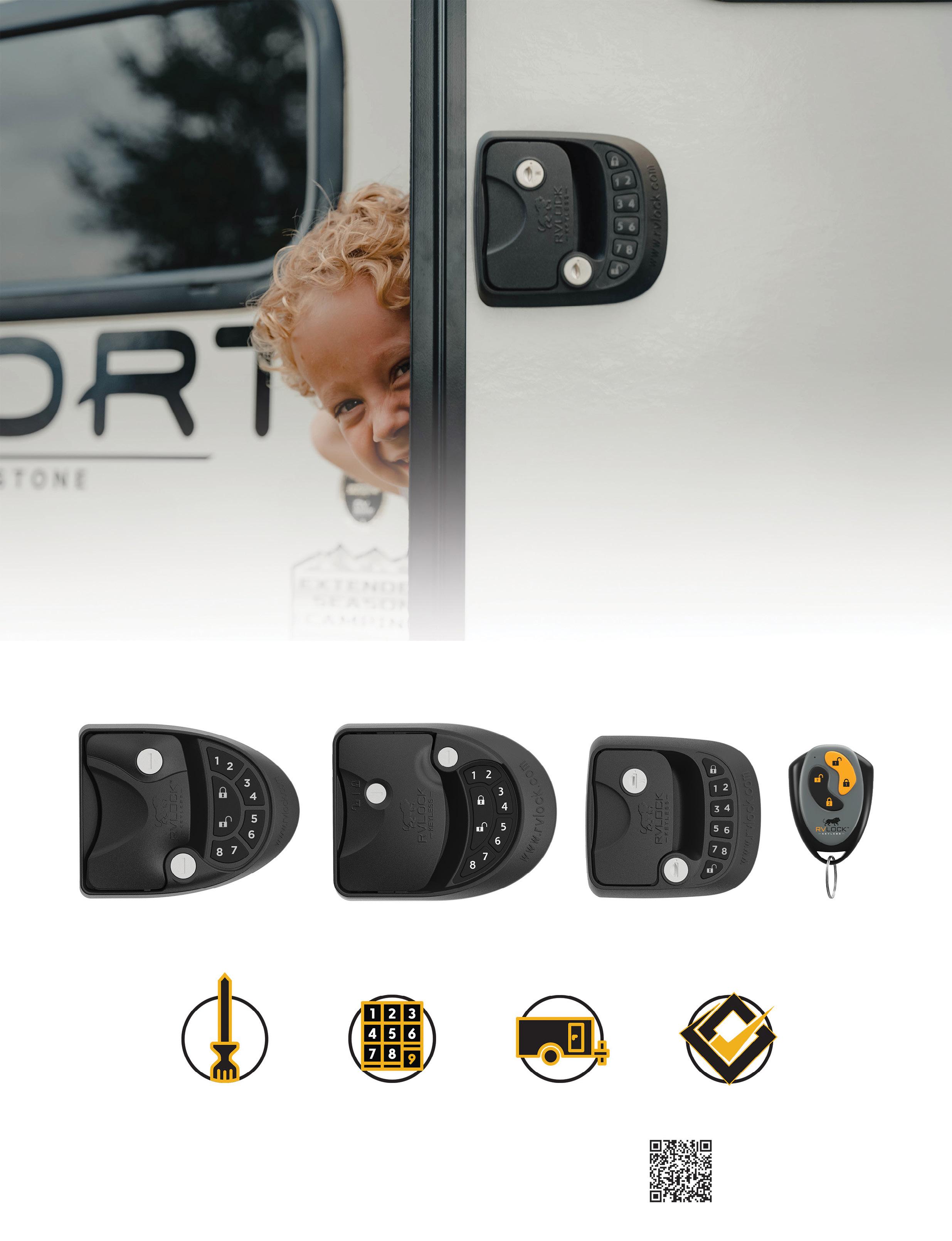
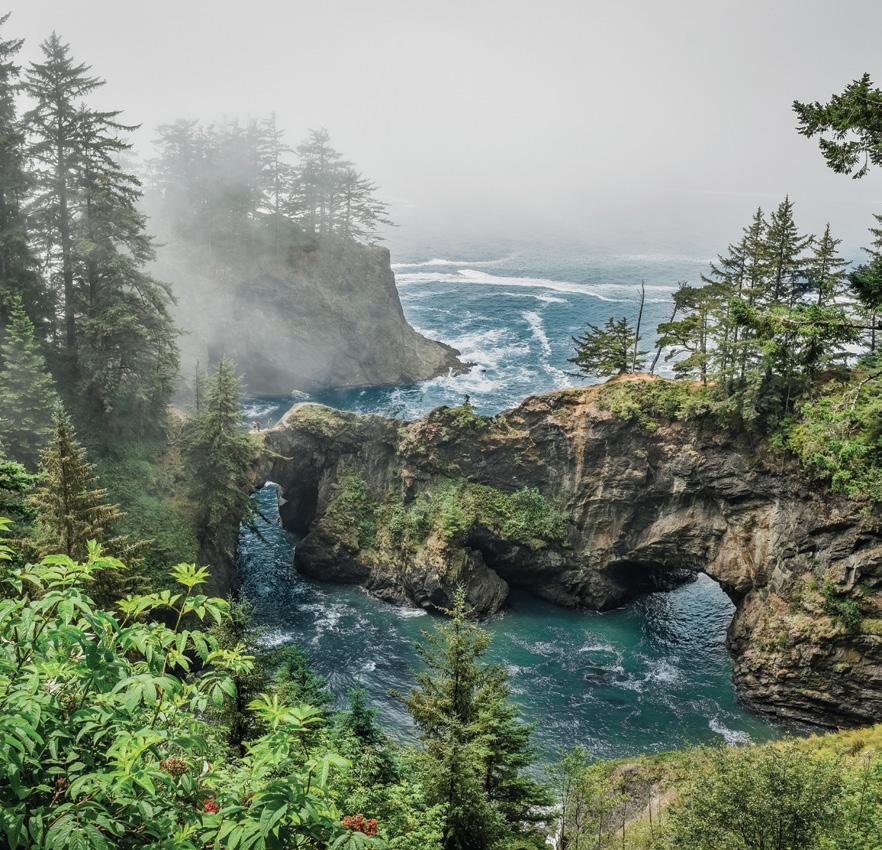
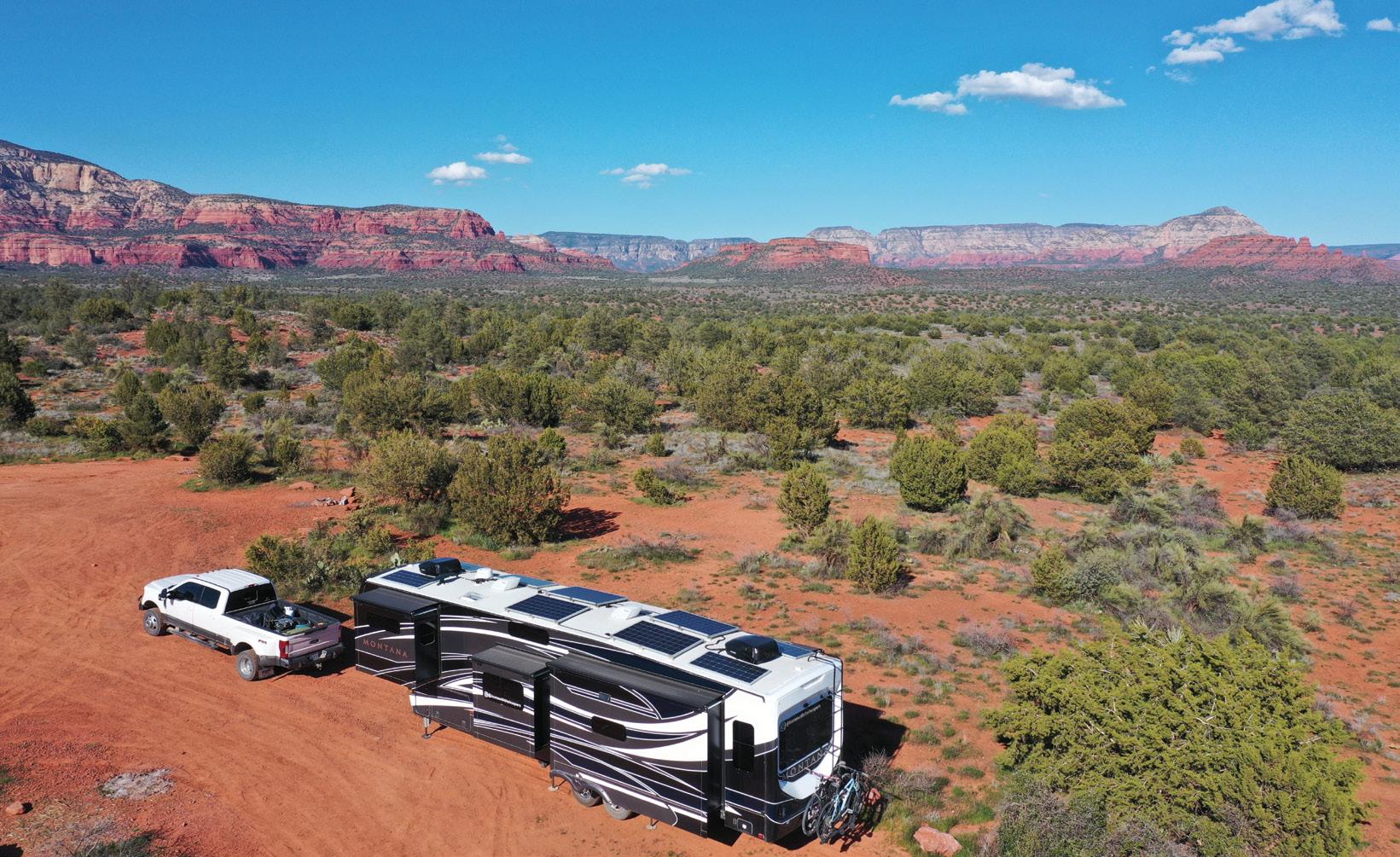
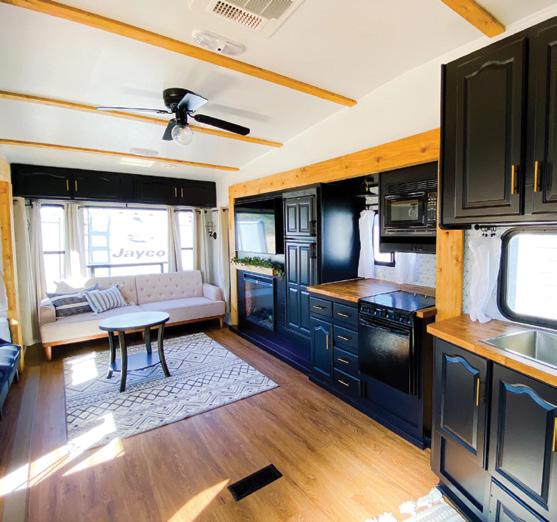
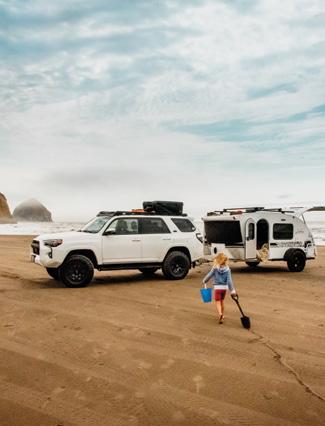
RV TODAY | 5 On the cover: From untamed wilderness to seasonal villages, Chelsea and her family travel the Oregon coast. Follow along on Instagram @unsettledown 9 From the Publisher 11 Contributors 12 Why Do You RV? Fellow readers share their reasons for RV travel! 14 Questions to Ask When Buying an RV 17 Preserve Your Reserve Power Help Your RV Battery Last by Measuring Depth of Discharge 22 Like a Tiny Home Bringing Home Reno Experience to RVs 26 Eclectic Budget Renovation 29 6 Baby-Friendly RV Upgrades Tips from a DIY Family 31 Cooking From the Heart 34 Regional Campground Highlights Check Out Campgrounds in Your Region and Plan Your Next Getaway! 44 Solar 101 Understanding How an RV Solar System Works 50 Oregon Coast 22 44 High-Tech RV Accessories Exploring Michigan State Parks Baby-Friendly RV Upgrades A Black Man’s RV Journey plus Oregon CoastTraveling THE Tips for RVing in Mexico Understanding How Solar Works SOLAR 101 50 Contents

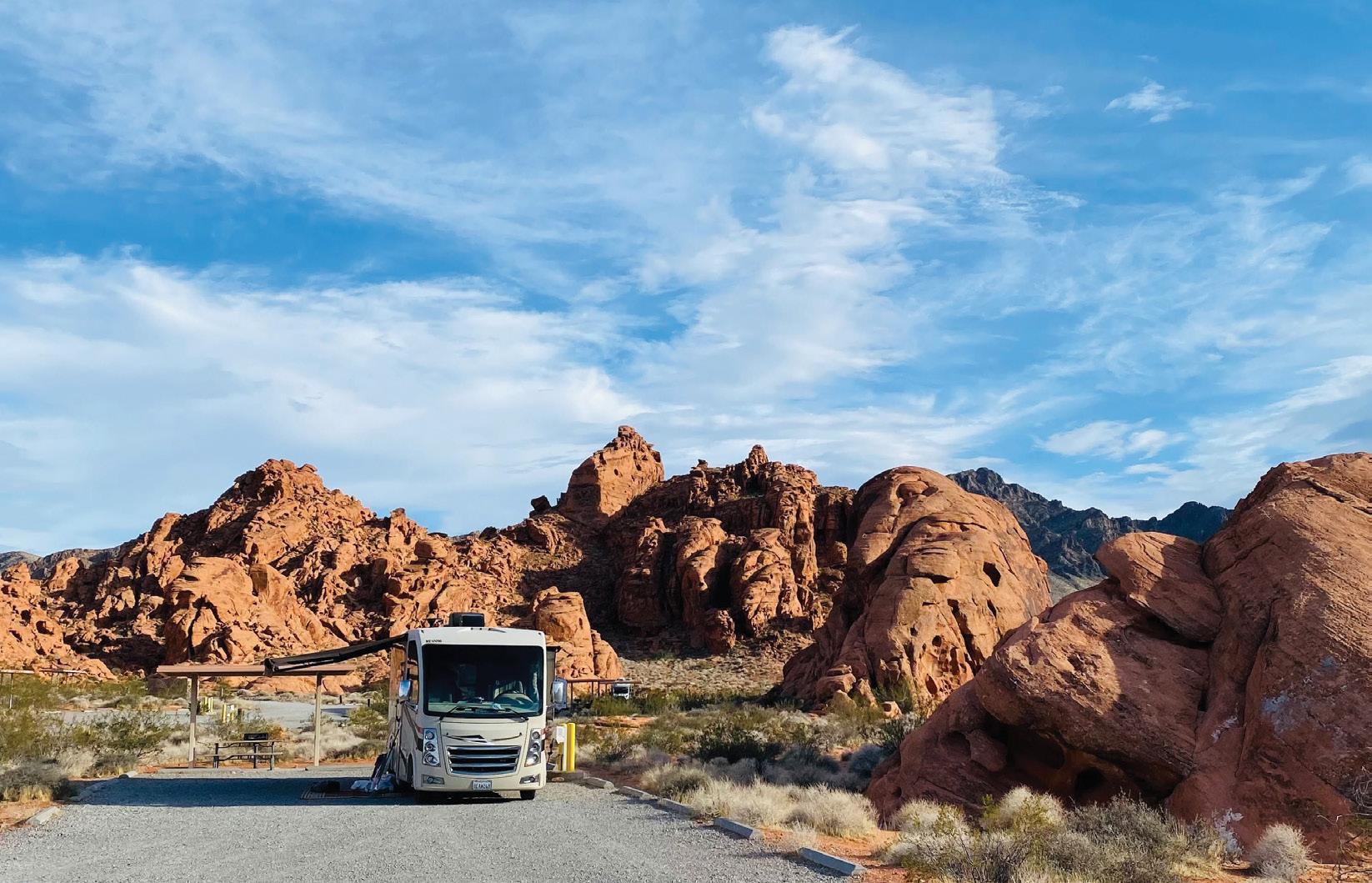
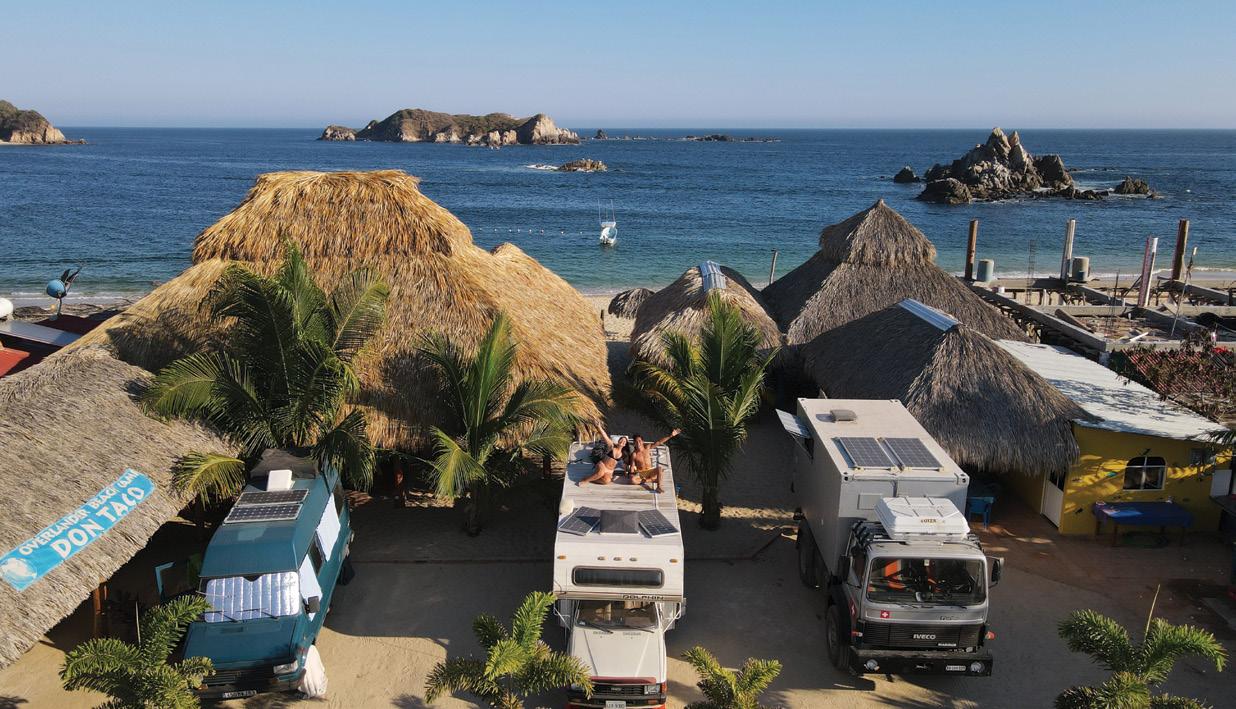

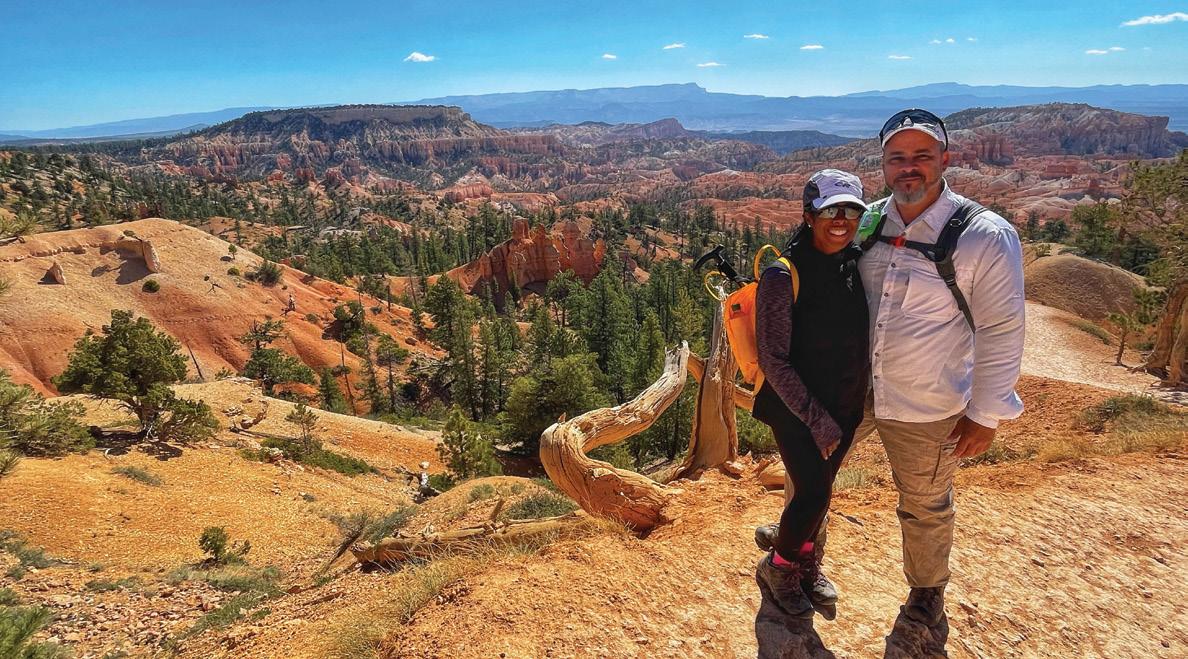

74 From Olympic Trials to Full-Time RVing 76 Adventures to Bryce Canyon A National Park Travel Guide 80 Product Feature From RVers 82 RV Yesterday 83 Events 60 67 70 76 Contents 56 Diversity in the Outdoors: Books to Read 57 A Black Man’s RV Journey 60 Popular Parks During Peak Season Seven Tips for Planning a Trip to Yellowstone and Grand Teton 64 High Tech Gear RV & Trailer Accessories 67 Tips for RVing in Mexico 70 Exploring Michigan Couple Visits 103 Michigan State Parks in 10 Months RV TODAY | 7
RV TODAY Magazine
Volume 1 I Issue 5 I August/September 2022
Publisher Demian Ross
Chief Editor Nikki Kirk
Managing Editor Jess Stiles
Editorial Assistant L. Merredith
Art Director Gayle Schadendorf
Operations Manager Jamie May
Copy Editor Kristin Skaggs
Advertising Information sales@rvtoday.com


RV TODAY 3916 N POTSDAM AVE #3194, SIOUX FALLS, SD 57104


Disclaimer: One of the great things about digital publications is the ability to link you directly to the products or services you want to hear more about. Some of the links in this issue are affiliate links where we earn commissions on goods or services you buy. These commissions help us to continue to publish the magazine. RV Today is also a participant in the Amazon Services LLC Associates Program, an affiliate advertising program designed to provide a means for sites to earn advertising fees by advertising and linking to Amazon.com. If you have any questions please don’t hesitate to reach out to us at info@rvtoday.com
Copyright

Blue Compass Media LLC All Rights Reserved. Reproduction in whole or in part without written permission is prohibited. No responsibility is assumed for unsolicited submissions.
TO THE PRINT EDITION
CONNECT #rvtoday
/rvtoday
RVToday.com
RVers
RVers SUBSCRIBE TODAY SAVE 58% OFF COVER PRICE ISSUE AUGUST /SEPTEMBER 2022 High-Tech RV Accessories ● Exploring Michigan State Parks Baby-Friendly RV Upgrades ● A Black Man’s RV Journey plus Oregon CoastTraveling THE Tips for RVing in Mexico Understanding How Solar Works SOLAR 101 1 YEAR SUBSCRIPTION Print+Digital $29.99 Digital Only $9.99 Helping you get the most out of your RV adventures
©2022
SUBSCRIBE
rvtoday.com/subscribe LET’S
@rvtodaymag
@rvtoday
A Magazine For
By
FROM THE Publisher
One of the biggest goals of any magazine publisher is to get their magazine sold in bookstores across the country. As of this issue of RV Today, we’ve accomplished just that.
I have been publishing magazines since the 1990s, and out of the four I’ve published, RV Today is the first to make its way into Barnes & Noble and Books-A-Million locations. If magazine publishing was a sport, this is the equivalent of making it to the big leagues.
I’ve seen a big change in the magazine industry in the last 30 years— there’s been a shift from independent journalism to some sort of guerilla marketing for companies that own and control the publications.
For example, if I owned 50 campgrounds in Oregon and decided to create a magazine called Oregon Campgrounds, and all I did was cover my campgrounds and the products and services that were attached to them, you as a reader would be paying to read my marketing efforts, not getting all the best options for camping in Oregon.
I truly believe it is important to have magazines that are just that … a magazine. And that’s why we are so excited to be the only independent RV lifestyle magazine that is owned and run by RVers, for RVers, and now available nationally in bookstores like Barnes & Noble and Books-A-Million.
When you see us there, be sure to give us a shoutout on Instagram or Facebook so we can feature your photo right here in your magazine, and you too can join us on the bookstore shelves. Thank you so much for reading, and be sure to send me an email at demian@rvtoday.com and tell me what you think about RV Today.

demian@rvtoday.com
P.S. We would love to hear from you, including suggestions for stories or regular features, letters to our editor, or ideas for what you’d like to see. Let us know what would help you and other RV owners in the future.
Email us at collab@rvtoday.com to help us make your magazine even better! RV TODAY | 9
LI-SERIES GLADIATOR MOUNTAIN EBIKE
Built to help you take on dirt, gravel, deep climbs and everything in between, the Lippert Li-Series Gladiator mountain ebike is versatile, tough and ready for every adventure. This is the perfect electric mountain bike for riders looking to explore off-road with more endurance and energy than ever.
lippert.com

Follow us on NO ROAD? NO PROBLEM.
Contributors
Kevin & Denise Fears
Ryan and Tiffany McHone
Joel & Deb Brettingen
Shion & Matthew Jones
Dan Sanchez
Fred Wehmeyer
Sarah Sanville
Bradley and Irene Lincoln
Fabian Archibold
Eli Ojeda
Javier Fuentes
Angel Thomas
Ari Adler
Kristin Kellie
Brenda and Jeff
Michniewicz
Tammy and Greg Cash
Tyler O’Neil
Jim and Sarah Sanville
Melissa Crosby Coker
Anne Klumpp
Brooks Smothers
Gretchen Watson
Holly Gale
Kestra Bronneke
Kristin Halls
Nancy Walters
Patty Gill
Reagan Ray
Shannon Murray
Andrew Woodmansey
Contributor Spotlight
Nathan Stanton @stanton7wanders
A Black Man’s RV Journey
Nathan and His wife Liz traveled with their 5 beautiful children to hold Forgive Us events aimed at healing racial division. He desires to leave a legacy resplendent with the love of Jesus Christ. Read more about Forgive Us at forgiveusmin.com.
Brenda Huynh @rv_lifestyle_asianfamily
Popular Parks During Peak Season
Brenda’s family of four started their RV adventure to visit as many national parks as possible. She also leads a Facebook group for Asian RVers where they share their passion for the outdoors with others, provide advice and tips, post their trips for inspiration, and host meetups.
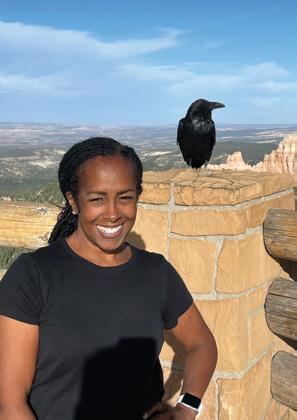

Marco Ilagan and Francina Cassaniti
@maptheunknown
Tips for RVing in Mexico
Marco and Fran are from opposite sides of the world (The Philippines and Argentina) but they united through traveling the world. They bring you along through their blogs and youtube videos, sharing locations and travel hacks along the way.

Robin Goudeau-Baxter @parents_unleashed

Adventures to Bryce Canyon
Contribute to RV Today
Do you have a story idea, product you love or campground to highlight? Reach out to us at collab@rvtoday.com
Robin and her husband, Warren, are high school sweethearts who met in 1981. Having always loved to travel, and with their sons settled into their own lives and careers, they decided to throw caution to wind—they started to RV full time and haven’t looked back.
RV TODAY | 11
Why Do You
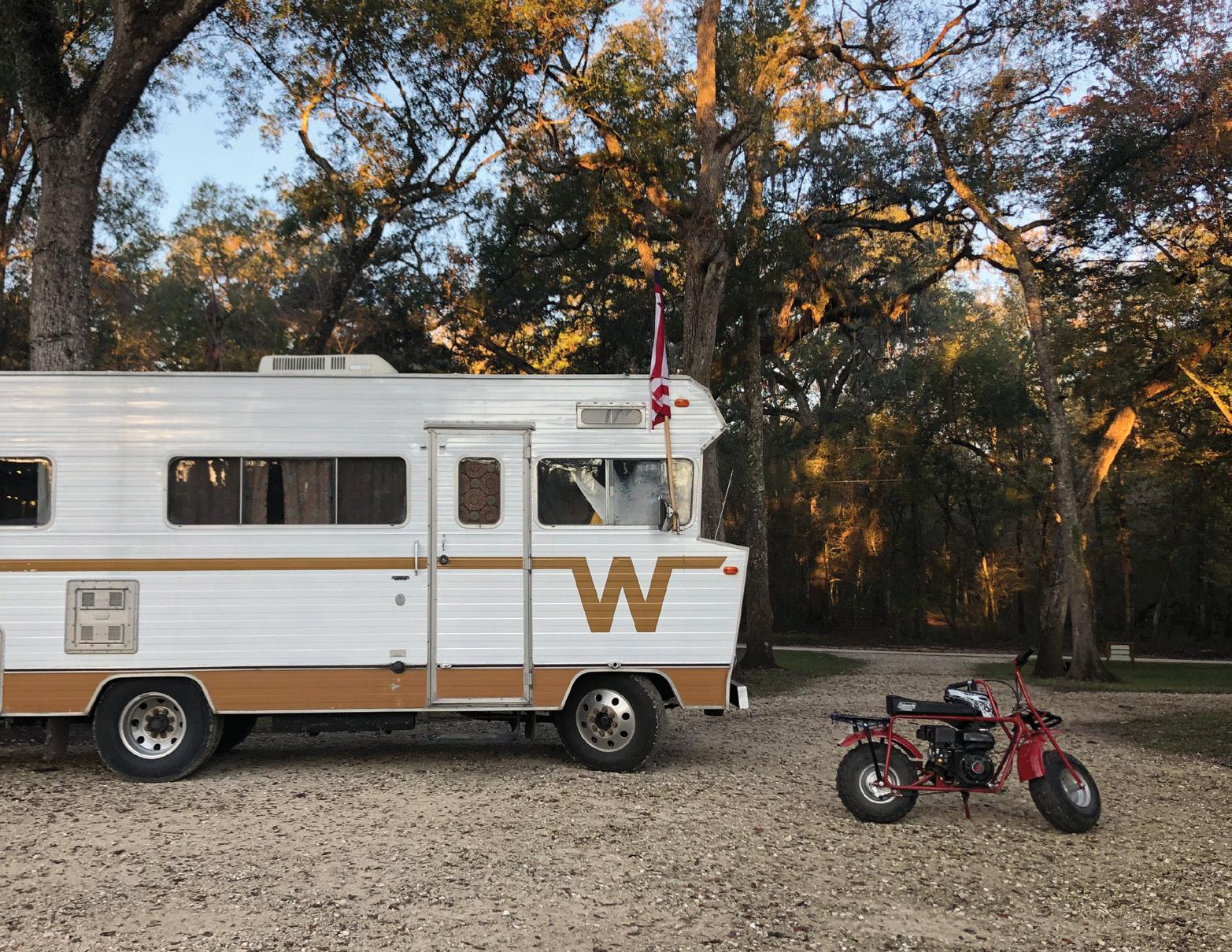

@kristinkellie30 “RVing allows us to be outside with nature but still have the comforts of home.”



RV TODAY | 13 @chasingthecashes “We RV for the freedom to explore our great country at our own pace.” @ourmobilejourney “Connecting with nature!” @adventuringwithty “I’m a disabled veteran. I sold my house and bought an RV because I’ve always wanted to.” We want to hear from you—let us know why you RV! Send an email to collab@rvtoday.com.
TO ASK WHEN BUYING AN
Questions RV

Buying an RV, whether new or used, is an exciting experience. But it can also be exhausting! Anyone who has gone through the process can tell you about the time spent researching brands, floor plans, prices, and dealerships. Once you’ve picked the RV you want, you’re facing the actual shopping process, which includes touring RVs, securing financing, navigating warranty programs, and scheduling walkthroughs. A few of our readers who have purchased multiple RVs have shared their top questions to ask when buying so you can have a better experience from the start.
What comes standard with the RV?
As you tour RVs, you may see add-ons that are not included in the price. Be sure to ask what is included and what will cost you extra. This will help you get an idea of your actual cost for the features you want.
What kind of deals and financing is the dealership offering?
Financing terms and customer perks vary among RV dealerships. Some offer campground memberships or accessories that can add up to several hundred dollars. Most RV dealerships offer financing options and accept loans from financial institutions
Will the dealer provide a walkthrough?
It’s important to know that someone there knows how to operate your RV and will be able to provide a detailed walkthrough. We didn’t have anyone available to show us how to operate the last two rigs we bought. If there’s no one available, you may want to hire a tech or inspector to go with you to show you how to operate all the mechanisms.
Kevin and Denise @fearlessrvliving
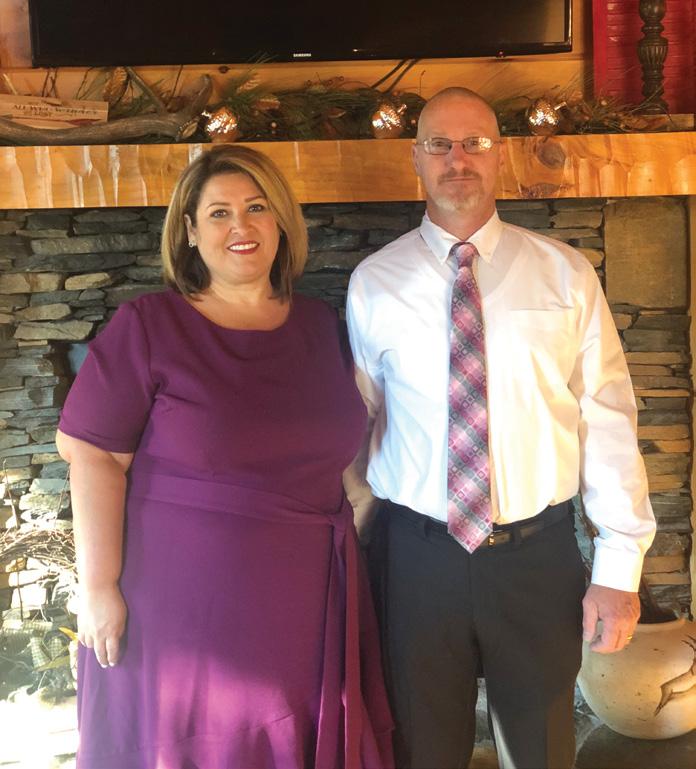
Can you sleep in the RV with the slides in?
Usually, people see RVs with the slides out and don’t think about needing to access the beds with the slides in. We have actually parked overnight in places where we weren’t able to put the slides out, so we highly recommend asking if you can access sleeping areas with the slides in—it can be important!
Ryan and Tiffany @the_partyof6
Does the floor plan work for you, your family, and your budget?
It all comes down to the floor plan meeting your family’s eating, sleeping, daily routine, and overall enjoyment needs. You want your RV to fit your family, and you want to avoid spending extra money on things you don’t need.
 Joel and Deb @chasingrvsunshine
Joel and Deb @chasingrvsunshine
Is there a warranty and maintenance program, and if so, what does it include?

If you’re purchasing an RV from a dealership, it should come with a warranty, even if it’s used. But warranties vary in what they cover and for how long. You may be able to extend the warranty, so consider all your options.
If you’re buying a used RV, you should also ask about the history of the vehicle. Here are a few questions to get you started:
● How many previous owners has the RV had, and for how long did each owner use the RV?
● What are the maintenance records, including major accidents and repairs, as well as regular maintenance, such as tire rotations and oil changes?
● Has the RV been renovated and/or had major interior work done?
● How often was the RV used and what kind of trips has it been taken on? (There’s a big difference between weekly trips on mountain roads and four weekends a year to the local state park.)
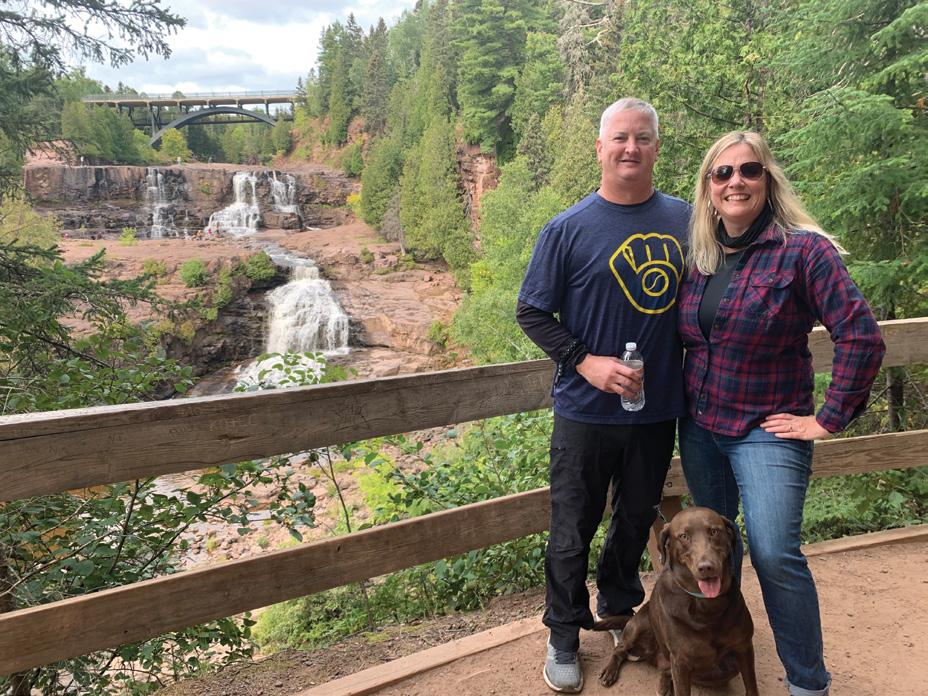
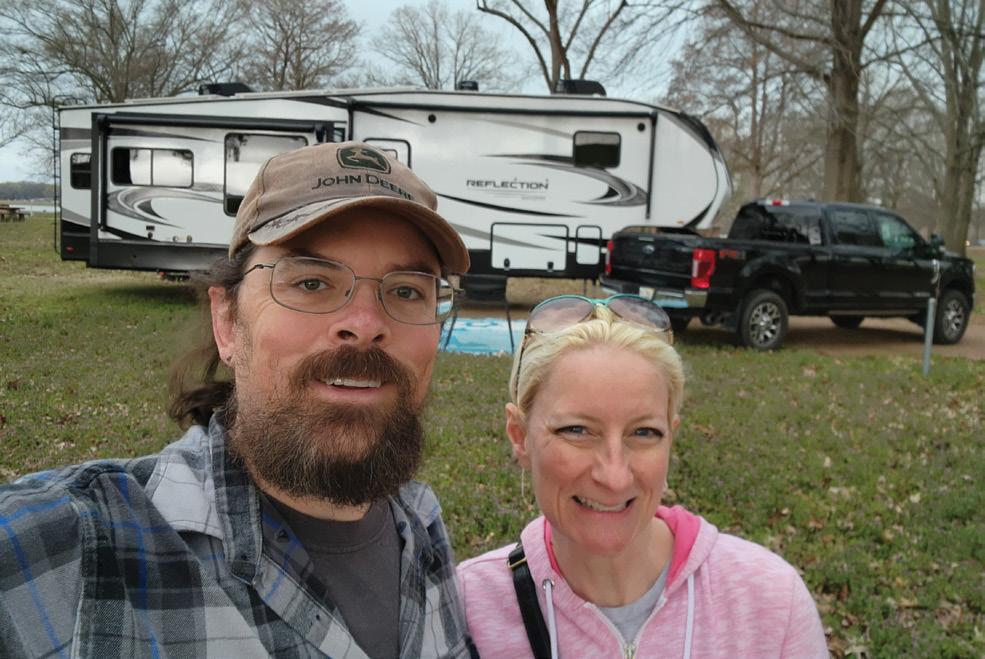
● Why did the previous owner trade in the RV? Or why is the current seller selling the RV?
Will the seller allow me to hire a private RV inspector to inspect the RV before signing any paperwork?
This is very important whether you’re buying a new or used RV, since all RVs have the potential for problems. You need to know what, if anything, is wrong with an RV before you buy it so you can either have the seller fix it, negotiate a lower price, or at least just know the facts of the RV’s condition so you don’t find a nasty surprise later on. If the seller won’t let you hire a private inspector prior to sale, walk away! ■
Shion and Matthew @brokendreamsreborn
Do you have RV shopping tips to share? Email us at collab@RVtoday.com. RV TODAY | 15
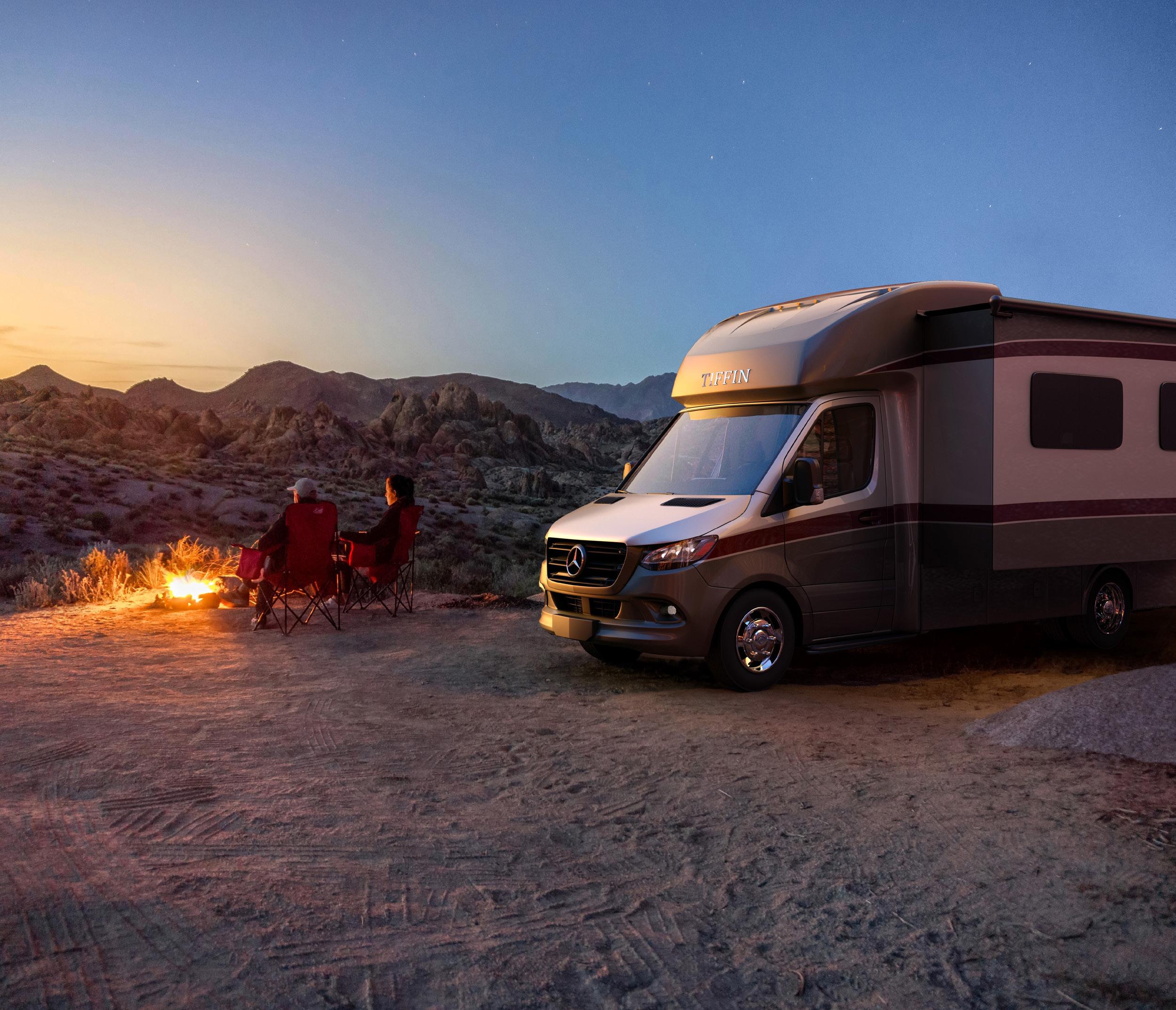






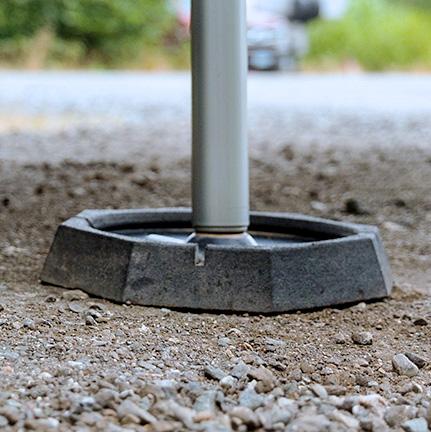

“
“
Preserve Your Reserve
POWER
HELP YOUR RV BATTERY LAST BY MEASURING DEPTH OF DISCHARGE
By Dan Sanchez and Fred Wehmeyer
ManyRV owners have a deep-cycle battery to power the living quarters of their vehicle. At a developed campsite, we mostly plug into the electrical outlets and don’t think about how much power we’re using. But when we venture to primitive campsites or take boondocking trips to areas without power, keeping these batteries in top condition is essential.
Deep-cycle RV batteries are made to provide longlasting power, but it’s important to make sure they’re not drained beyond the manufacturer’s recommended depth of discharge (DOD). The DOD is the total amount of power drain on your deep-cycle battery versus its rated capacity at that rate. In general, battery manufacturers do not recommend draining your battery beyond 50 percent of its rated capacity (50% DOD), or it will deliver shorter cycle life. Therefore, while boondocking or when parked at primitive campsites, it’s important to be aware of how much of a load you’re placing on your battery over time.
Preventing Deep Discharges
The best way to prevent draining your deep-cycle battery past 50% DOD is keeping an eye on what state of charge it’s in. A battery monitor is an easy way to do this as it provides a visual way to see the battery’s actual voltage or state of charge at any given time. These require installation, and depending on the models, some can be expensive, but you will see at a glance what condition your battery is in, which makes it easy to monitor your usage when it’s your only source of power. Other methods include checking the batteries with a hand-held voltmeter set to measure DC voltage in the 12-volt range. Another inexpensive but more accurate way is to use a battery hydrometer, which looks somewhat like a turkey baster with a float and measures the density of the battery’s electrolyte (specific gravity) to determine its state of charge. Some indicate this in green, yellow, or red for high, medium or low, and others use actual numbers for specific

RV TODAY | 17
gravity. Deep cycle batteries should read 1.270 or higher at full charge.






Using a battery monitor or voltmeter, if a battery open circuit voltage (OCV) reads 12.7 volts or higher, it’s in a good state of charge. If the OCV drops to 12.1 volts, it’s 50% discharged, and for optimum cycle life, it needs to be fully charged at that point. If you’re using a hydrometer, remove the vent caps on each cell of the battery and measure the specific gravity of the electrolyte in each cell. This measurement is very accurate, but must be done with protective eyewear, rubber gloves, and plenty of ventilation. Specific gravity readings of 1.270–1.280 average across all the cells indicate a fully charged battery when checked at an 80-degree battery temperature. Check with the


battery manufacturer’s specifications to determine full charge specific gravity for your battery.




If you’re using the hydrometer method, battery manufacturers also recommend using a simple correction factor to compensate for temperature variations. Subtract 0.004 from your hydrometer reading for every 10 degrees below 80 degrees fahrenheit, or 5.6 degrees below 27 degrees celsius. Let’s look at an example—say the temperature of the electrolyte is 50 degrees fahrenheit, and your battery specific gravity reading is 1.250. In this case, .004 for every 10 degrees equals .012, so you must subtract .012 from your reading. Subtracting this from 1.250, your corrected specific gravity reading is 1.238. For higher temperatures, add 0.004 to your hydrometer reading for every 10 degrees above 80 degrees fahrenheit, or 5.6 degrees above 27 degrees celsius.

If you’re able to keep your deep-cycle battery at or below 50% DOD, you can make it last much longer and avoid having to replace it as often. Keep in mind that flooded lead-acid deep-cycle RV batteries also require watering from time to time to ensure the battery cells are properly covered. Following these methods will help you increase your RV’s home power substantially and conserve the life of the battery. ■



About the Authors: Dan Sanchez is a journalist with more than 30 years in the publishing and marketing industry focusing on the outdoor, energy, and automotive fields.
Fred Wehmeyer is Senior VP of engineering at U.S. Battery Manufacturing and has more than 40 years of experience in design, manufacture, and quality assurance testing of various battery chemistries.
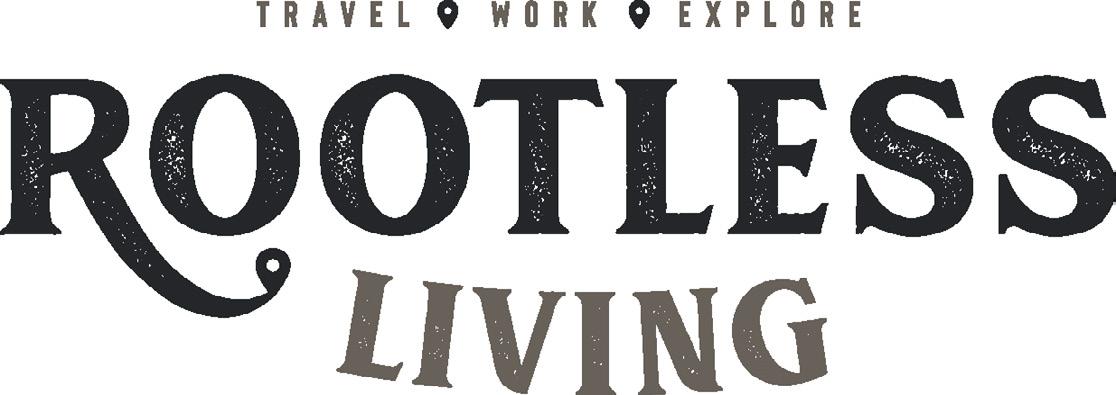
TRAVEL | WORK | EXPLORE powder FINDING SEASONAL WORK ON THE ROAD UNIQUE ROAD TRIP STOPS IN AMERICA HUNTING FOUR FOR RV LIVINGBUDGETS A MAGAZINE FOR DIGITAL NOMADS BY DIGITAL NOMADS RootlessLiving.com @RootlessLiving
GO LOSE YOURSELF IN A LONG WEEKEND.



GO EXPLORE
A NEW JOURNEY BEGINS
Just like every great road trip, sometimes life takes you in a new direction. At Heartland, we’ve launched a new journey to make our RVs better than ever. We’ve doubled down on seeking out the highest quality materials, creating fresh and inviting interiors and giving every unit the kinds of finishing touches you’d find in a new home.
Every unit goes through a top-to-tails inspection with a quality assurance expert—in fact, we have an 89,000-square-foot facility dedicated to walking each RV through a series of checklists to ensure it works exactly as it should. And with updated floor plans incorporating features our customers love best—spacious bathrooms, designer kitchens, furniture meant for cuddling up together—we’re confident every trip in a Heartland will be a happy one.
After all, that’s what RVing is all about: hitting the road with people you love, having adventures, making memories. So when you buy a Heartland, just focus on taking the journey of a lifetime. We’ll take care of the rest.
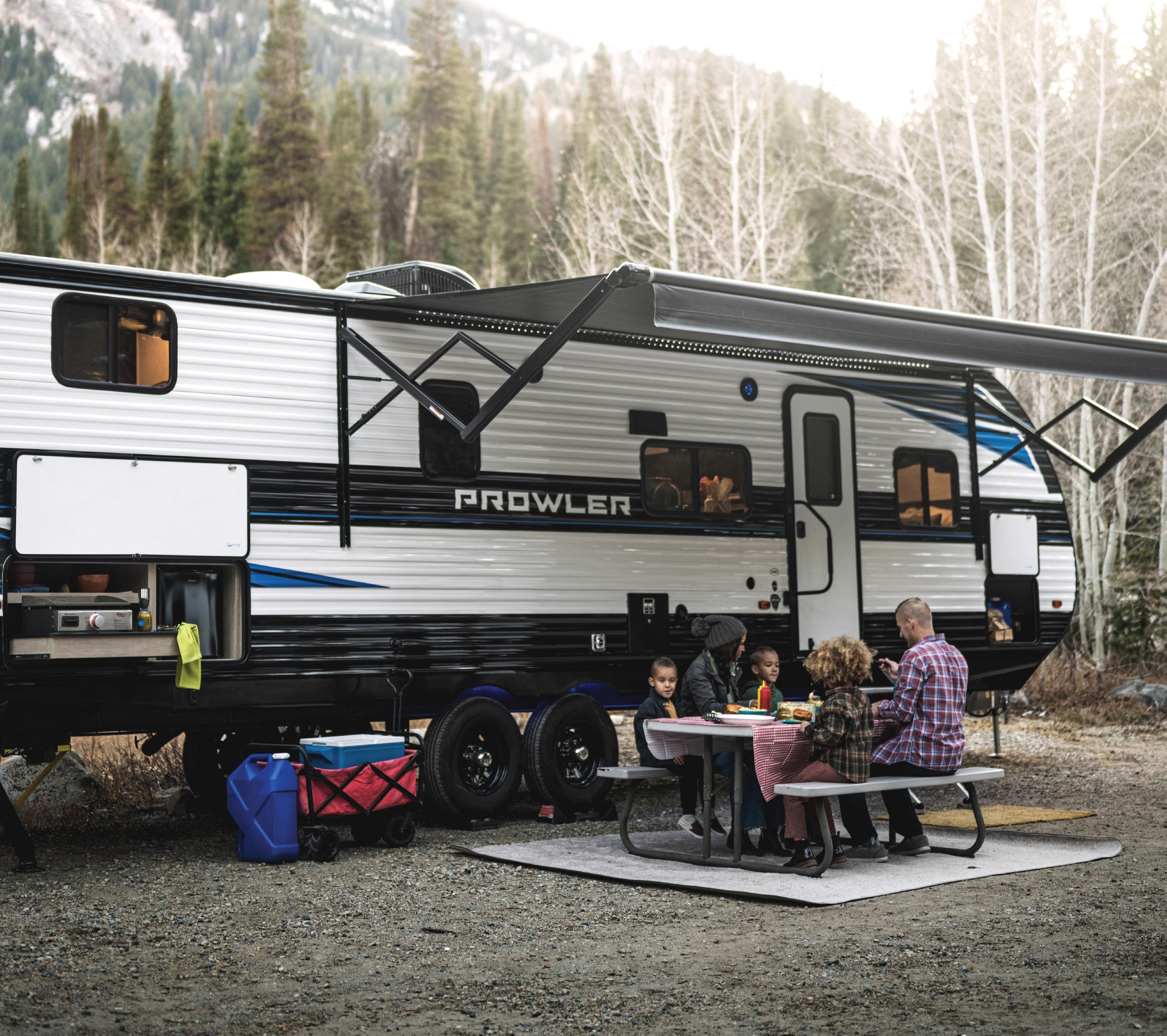

Experience the all-new Heartland online and check out 360-degree model tours, detailed floor plans, all-new features, galleries of updated decor and more.
Just visit HeartlandRVs.com.


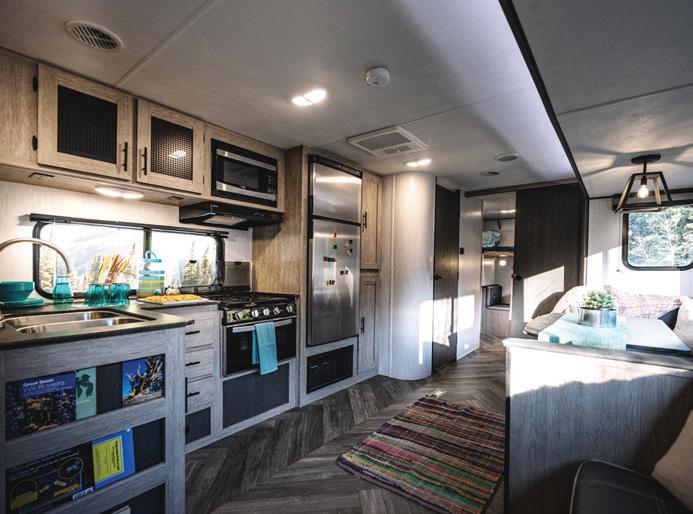
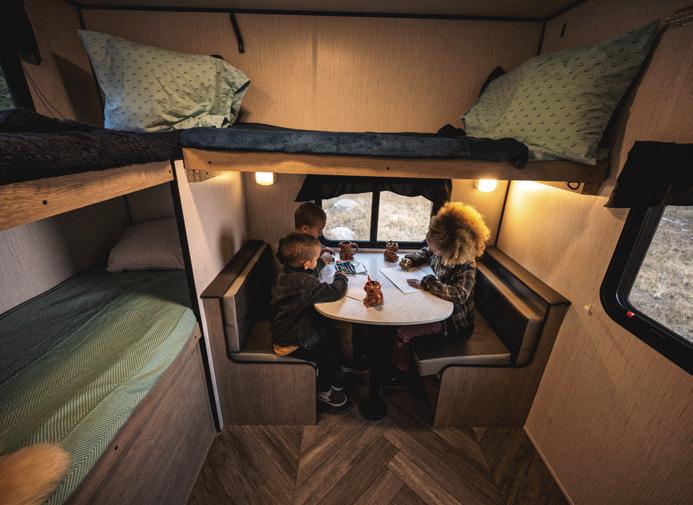
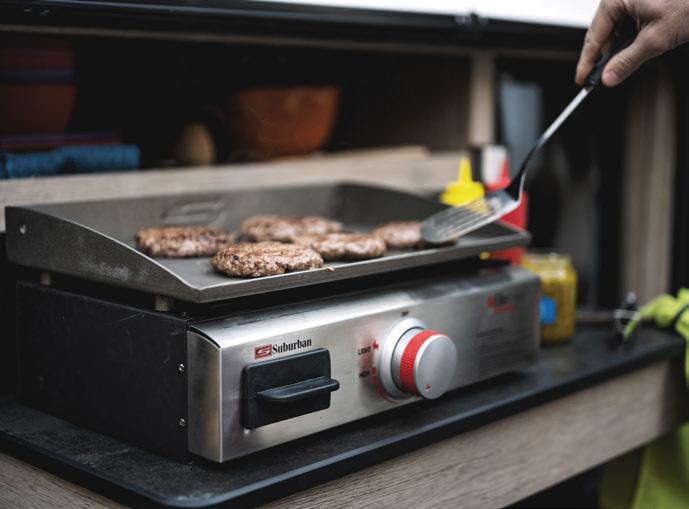
Like a TINY HOME
Bringing Home Renovation Experience to RVs
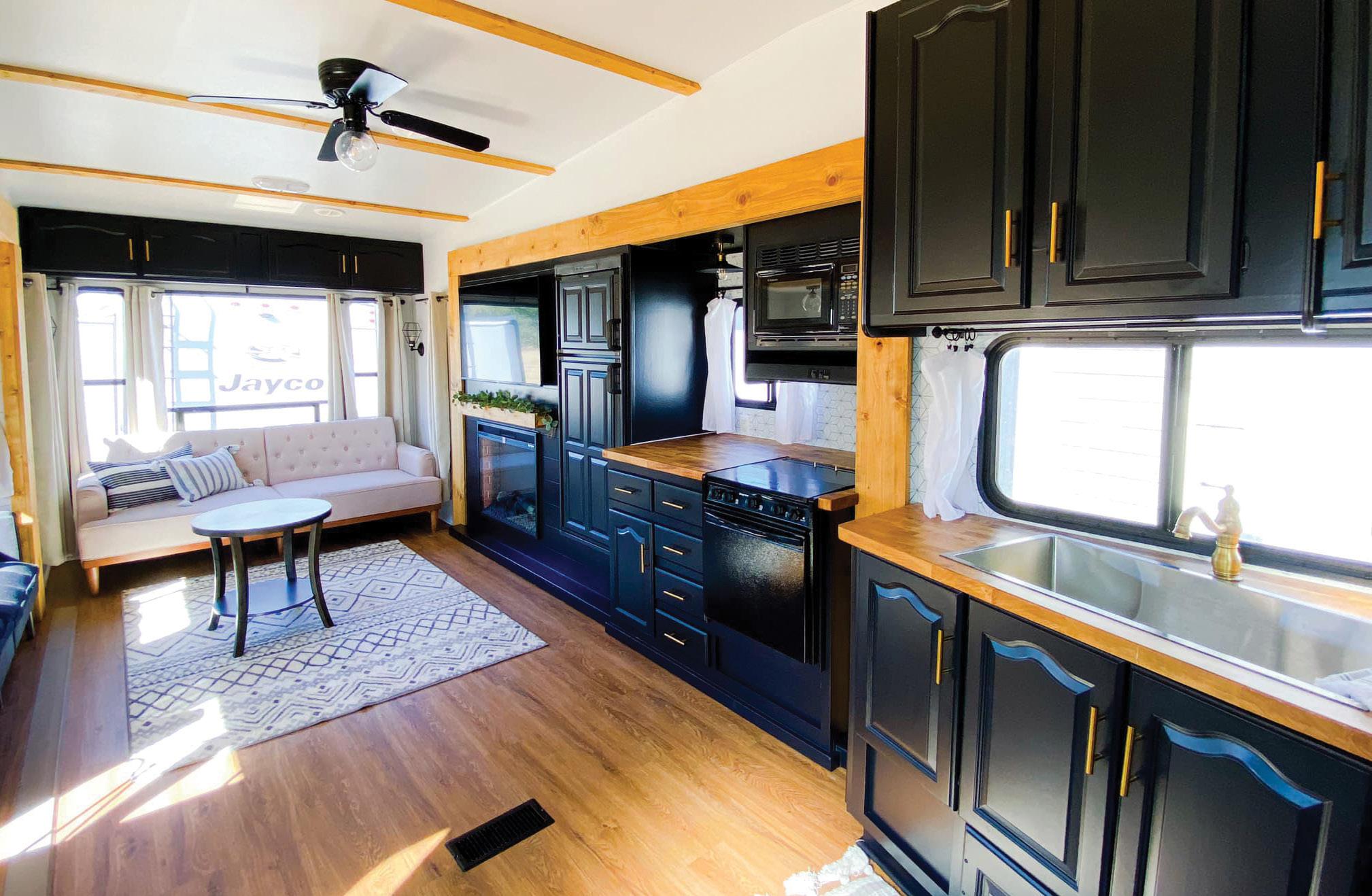
In 2018, my husband, Jim, and I purchased a 24-foot expandable travel trailer for weekend camping trips with our kids. We took it on several trips and really enjoyed it, but about six months later, we realized we needed to upgrade because we wanted to be able to live in it for five months while we finished construction on our house. This led us to purchase a 2014 KZ Spree Bunkhouse.
While the trailer’s layout was functional, the drab interior really didn’t do much for us. So after our house construction was complete, I convinced Jim that we should renovate the KZ Spree. I had seen gorgeous renovations online, and I knew we had the construction skills to make it happen. Though my
By Sarah Sanville
husband thought I was crazy, he finally agreed, and after the renovation we were able to sell it for more than we ever expected!
At that point, my husband realized I might be onto something, so we decided to form a side business in the home renovation and construction space. This was right when the pandemic hit, though, which scared us away from the real estate market. Meanwhile, we were also both working regular jobs—I am a respiratory therapist and Jim is a mechanical engineer
Jim grew up building homes and fixing things, and with 20 years of experience under his belt, there isn’t much of anything he can’t fix! We’ve been married for
15 years and renovated or built all four of our homes together. We brought all of this experience to the table, and came back to the idea of RV renovations because of how much we’d enjoyed renovating the KZ Spree. It also fit our lifestyle as busy parents who needed flexible work hours.
That was how our RV renovation business was born! We are currently working on a Keystone Bullet Premier, but have previously renovated two Keystone Montanas.
The last Montana was older but in mint condition The previous owner stored it under a cover, which protected the interior and exterior. The only damage we found was a small leak under the sink that caused us to have a bit of floor repair. We also stripped and replaced one front decal on the exterior of the rig
As for the rest of the renovation process, we removed cabinets over the sofa/dining area to open up the space. We also removed cabinets in the bedroom and in the living room slideout, then rebuilt the living room slideout with a fake wall so we could mount a 50 -inch television and insert a large electric fireplace. We replaced all the flooring, and painted the entire interior and all the cabinetry. Jim built a custom dining storage bench and table, as well as custom butcher block countertops.
We added shiplap throughout the rig and custom wood trim to all the slideouts, and we added faux beams to the ceiling, which drew the eye up. We updated all the lighting fixtures and cabinet handles, as well as the ceiling fan, and Jim made a custom coat rack / entry bench. Our splurge on this rig was a large French corner shower with glass doors, which elevated the shower and bedroom while providing so much style and function! Of course, new interior furnishings, such as sofas and chairs, were the fun final pieces.
When it comes to design, we’ve found great inspiration from other RV renovators. I also like to look at what is currently trending in home design and use that as an inspirational starting point for each renovation.
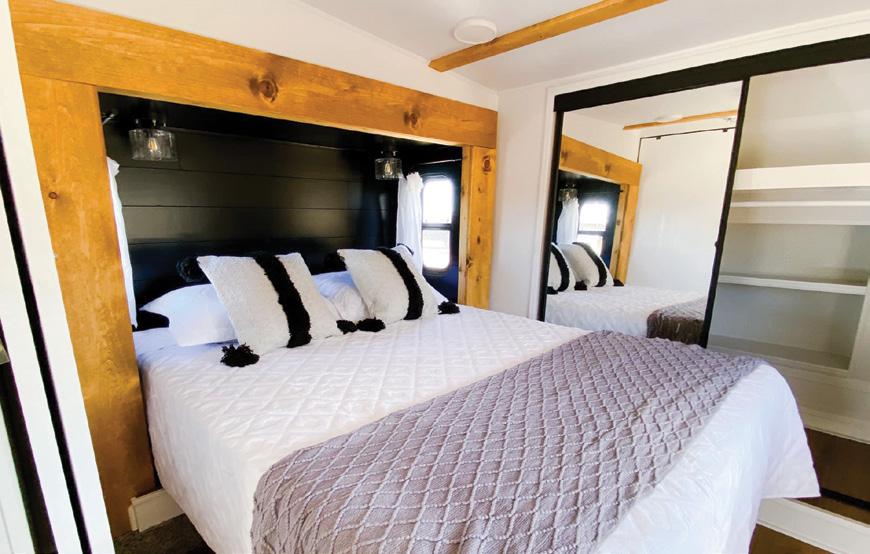
We seek to make each RV feel like a tiny home by balancing function with style. That said, our renovations generally have a modern vibe with some rustic/farmhouse elements. We lean toward a clean minimalist look and don’t style our rigs heavily for photographing, as we prefer for potential buyers to see the rig as they will receive it. People are always saying that our renovations don’t even look like an RV inside, which we take as a huge compliment! When people can’t tell if the photo is a house or an RV, then we know we did our job right.
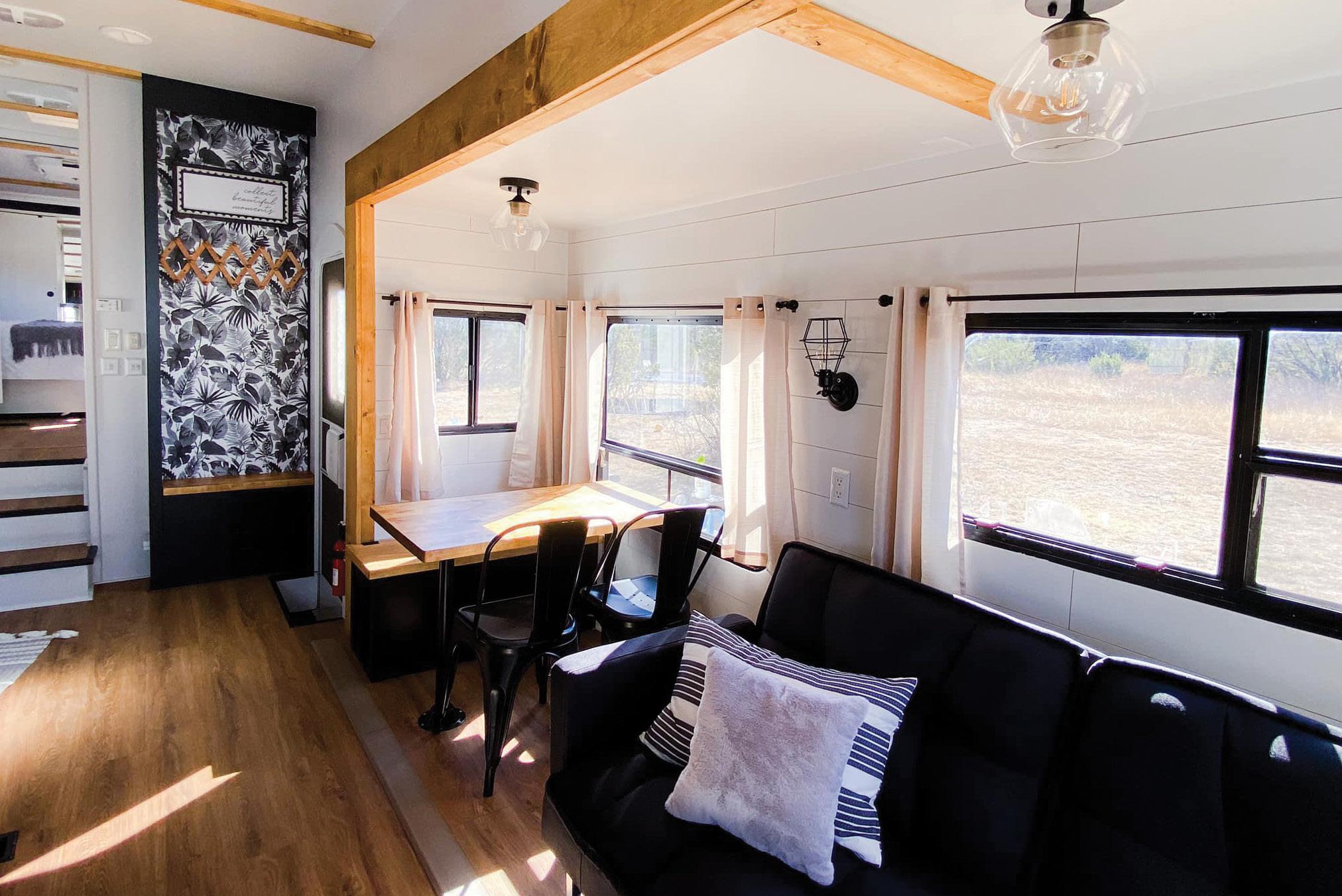
RV TODAY | 23
Of course, we’ve had plenty of hilarious mistakes too—such as when Jim forgot to tighten the connections in the water pipes under the sink and turned the water on. That left a bit of a mess! I have learned to yell loudly and keep towels on hand when Jim tests the plumbing now. Overall, we have learned that our renovations always take way more time and money than we expect. We’ve also learned that sometimes paying a little more money for things, such as pre-made butcher block countertops, is better than spending hours building them yourself. We just published our first renovation style guide, and it contains all the links to products, paint colors, tools, and more that we used on one of our renovations. These little booklets, which you can also find from other renovators, are super helpful for beginners, not only when it comes to achieving a certain style, but also in finding products that are lightweight and durable for your renovation. ■


Keep up with Jim and Sarah’s adventure on Instagram @sanvilleinvestments


SUBSCRIBE NOW at RVTODAY.com ISSUE AUGUST /SEPTEMBER 2022 High-Tech RV Accessories ● Exploring Michigan State Parks Baby-Friendly RV Upgrades ● A Black Man’s RV Journey plus Oregon CoastTraveling THE Tips for RVing in Mexico Understanding How Solar Works SOLAR 101 Helping RVers find the best sites

WHEN COST IS THE DRIVING FORCE OF RENOVATION




26 | RVTODAY.COM
Bradley and Irene Lincoln started traveling full time with their two kids and husky in August of 2018. They started off in a 2002 Winnebago Brave that they had remodeled, but after about six months of travel, they realized they needed more space, as well as a separate area for the kids. They sold the Class A to purchase a truck and their 2008 Keystone Raptor fifth wheel toy hauler.
Brad works remotely as an online college instructor, so their travel is only limited by where they can get a cell signal. The family enjoys traveling at a slower pace, so they usually stay in new places for about two weeks. This allows them to really experience the locations, as well as keep their normal day-to-day schedules of work and homeschooling.
They were about a month into traveling when they discovered a giant leak in the master bedroom closet of the fifth wheel. After taking the closet apart, black mold and a rotted floor in the slide forced them to begin their renovation sooner than they initially planned. “Renovating while living in an RV is not for the faint of heart,” Irene said. “It was very challenging. Not only are the living quarters tight to begin with, but you also have to deal with construction dust and mess everywhere.”

Irene’s design inspiration came from their travels around the
Southwest and the West Coast. From Sedona to Redwood National Forest, she pulled greens from the forests, and earth tones from the desert. She calls her design style “budget eclectic” because “the budget is a huge driving force in how I design and decorate. We chose this lifestyle to be minimalist, and I wanted the design to remain so. By limiting what we buy, we focus more on the functionality of the space and only bringing in items that truly spark joy.”
During the renovation, Brad was in his element. Growing up in Missouri, his father and grandfather taught him engineering, woodworking, and general troubleshooting. Irene dreams up the plans and paints, while Brad does the cutting and building. Irene adds that the two renovations have really shown what the couple are capable of.
Brad and Irene completely gutted and rebuilt the interior of the fifth wheel. They created a bunkhouse in the upstairs room for their daughters; removed the closet with the water damage and converted it into a dresser and entertainment area with TV; and added new floors, bunk beds, and storage space. Irene also added cute lighting and shiplap to make it feel more like home.
The bathroom is a real showstopper Brad reconstructed the existing vanity using birch plywood, marble laminate,


Renovating while living in an RV is not for the faint of heart, it was very challenging.”
and a vessel sink. They removed the old silver faucet and installed a brushed brass wall faucet, and replaced the medicine cabinet with a birch accent wall and arched mirror. They placed hexagon marble on the floor and installed a shower using the same material. They finished the bathroom with a new white porcelain toilet and an antique brass showerhead.
With the bedroom now a bunkhouse for the girls, Brad and Irene converted the toy hauler part of their fifth wheel into a new master bedroom. Starting from scratch, they converted an unused half bath into a master closet on one side and a pantry on the other. Where an unused sink was, they added a work desk and built a queen size bed frame into the slide. The result was a very spacious master bedroom.



In the kitchen and living area of the RV, they removed a cabinet, which opened up the walkway, and laid new flooring throughout. Irene replaced the furniture with items that felt more like their family, and added open shelving where old cabinets had been. Brad designed and built a custom birch plywood kitchen with deep drawers, marble laminate countertops, and more open shelving. They set the microwave and toaster oven into the wall to create more room on the counters.

Irene said, “Overall, we created a spacious and open RV for our family. But if you’re considering living in your RV while renovating, don’t be like us and travel while you’re doing it—we’d recommend being stationary. There was a time when all four of us were sleeping in the same unfinished room while we fixed a huge water leak in the bedroom slide. There is also the aspect of traveling with a ton of tools and supplies that you normally wouldn’t have to.”
The couple joke that while they might not have seen every national park, they have visited almost every hardware store across the country. ■
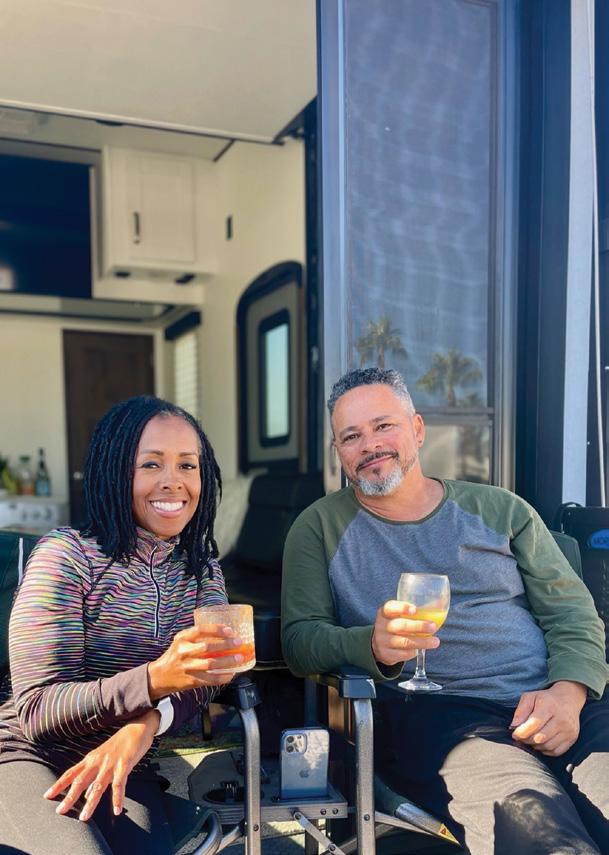
28 | RVTODAY.COM
By limiting what we buy, we focus more on the functionality of the space and only bringing in items that truly spark joy.”
Follow the Lincolns on Instagram @thelincolntribe
RV UPGRADES
 By Fabian Archibold
By Fabian Archibold
My wife, Becky, and I have been RVing full time since 2018. We started in a travel trailer, and when the timing was right, we upgraded—not only to a Jayco NorthPoint 377RLBH fifth wheel, but also to a family of three! We completed a few projects in our RV before Junior was born, and we’ve made further changes as he’s grown and become more mobile. Here are six tips based on changes we’ve made so far to make our RV more baby-friendly, and one that we’ll be implementing soon.

RV TODAY | 29
Sleep is important! If you want to skip a crib or any renovations and want something that can grow with your little one, a pack ‘n’ play works perfectly. It can fit in the slide without any big renovations, or you can put it in the baby’s bedroom or your bedroom. We have the BabyTrend Lil Snooze Deluxe 2 and we love the functionality—it can be a bed, a changing table, and a play place for later on. It’s also lightweight and can be folded up while you’re traveling.
Purchase a tub. We have the Fisher-Price 4-in-1 Sling ’n Seat Tub. It weighs less than eight pounds, is made of plastic, has a handle so it can hang to dry and stay off the floor, and it’s the perfect size, from the newborn stage all the way up until they reach 25 pounds.


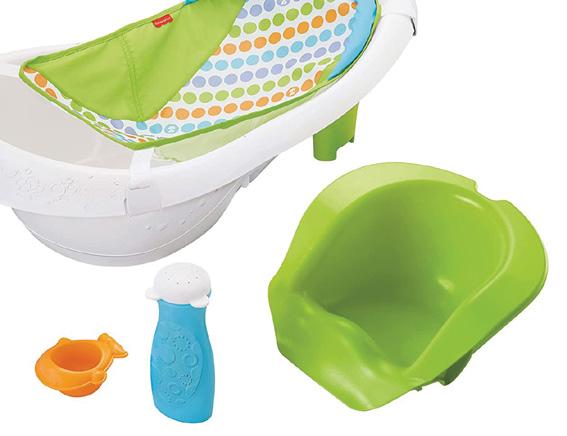
Doors and cabinets will be opening all the time. As you know, little ones love to open and close things, but if you’re moving the RV from place to place, sometimes your cabinets and drawers will open on their own anyway, so this is a project with two uses. We suggest installing Safety First cabinet and drawer latches and having strap locks for your appliances. The latches and straps are a pain at first, but worth it in the end.
S
tairs
are slippery
and rough! We’ve almost fallen a few times on the MORryde metal stairs in rainy conditions, and our dog recently had issues going down the stairs as well, so we installed step rugs. Not all RV steps are the same, so check the size before you purchase.
There will be laundry for days. If you have an RV that’s big enough for a washer and dryer, do it! We suggest the Splendide stackable washer and dryer. We installed them by ourselves, which required a little heavy lifting, but we get laundry done in half the time since we can continue washing as the previous load is drying. If you need to save space, a combo unit works as well, and if you don’t have the connections in your “laundry room,” look into the portable washers that can fit in your shower and hang dry. If you can’t fit any of that, we recommend purchasing a collapsible laundry basket. If you purchase one without holes, like the SAMMART 4.1L (10.8 gallon), it can be used as a tub as well.
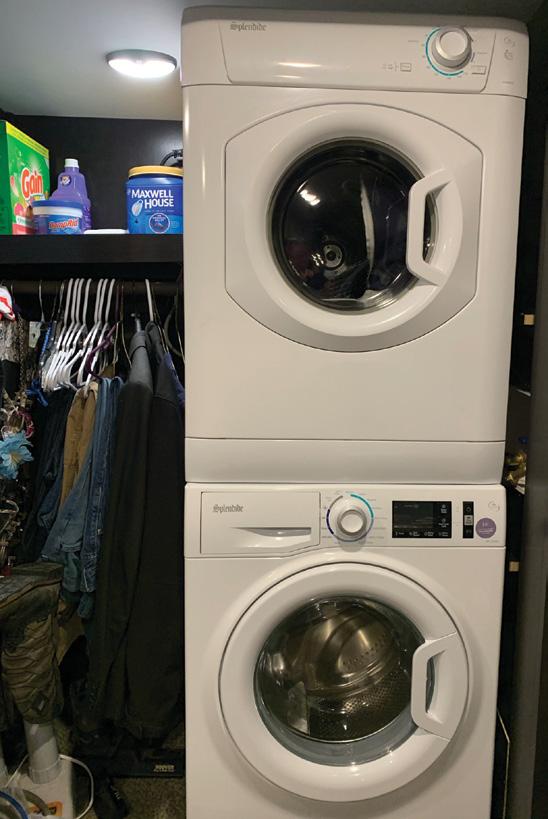
Double-check your air flow. Our cooling and heating systems work great in our RV, except in the mid-bunk room. We noticed that once the door was closed to the room, it either got really hot or really cold, depending on the time of year. We fixed this by installing a fan in the vent to help push air into the room.
Last but not least, another upgrade we will be doing soon is reinforcing the screen door, which will make us feel safer as Junior starts running around. Until next time, know you are fantastic parents and keep proceeding onward in your adventures! ■
 Fabian, Becky, Junior, and Jag’s journey is on Instagram @proceedingonwardinamerica
By Eli Ojeda
Fabian, Becky, Junior, and Jag’s journey is on Instagram @proceedingonwardinamerica
By Eli Ojeda
Growing up, I remember going camping a few times. But it was not until 2020, in the middle of the pandemic, that I began to really appreciate the experience of the outdoors. It was my partner, Javi, who had the idea to go on a camping weekend in our Chrysler minivan. I resisted the plan, thinking I would hate the whole weekend, but I gave it a go and found myself liking the idea of not only going on more road trips, but also of sleeping in a van!
That weekend, we went for a bike stroll around the campsite and saw children running around, friends fishing, and retirees setting up Halloween decorations. We sat down to watch a beautiful sunset, and we cooked mashed potatoes and
braised ribs. I fell in love with nature again, and my mind opened to the possibility of taking off on a long road trip and traveling as much as we wanted for as long as we wanted. It was that moment when my heart decided the typical way of living was something I would love to leave behind. I’m taken back to that weekend every time we make mashed potatoes. That is what food means to me—it’s a nourishing reminder of all the good things in life and the moments that change our lives forever. For Javi, food means something totally different. He enjoys cooking far more than he enjoys eating. Every time he starts up the grill, making sure to cook each steak to the preference of the person who will eat it, he knows

RV TODAY | 31
he is bringing happiness to a friend, family member, or sometimes, someone who has not had a homecooked meal in a long time. He loves to express his affection through cooking; it simply makes him happy.
For us, the entire purpose of living nomadically was to experience the vast array of cultures within the United States, see amazing places, and eat delicious food. We decided to do it by building our own custom van, which required us to reconfigure our lives and give up many things. But the kitchen was one of our non-negotiables. As small as it was, we made sure to have an area where we would be able to keep creating experiences through the food we make.

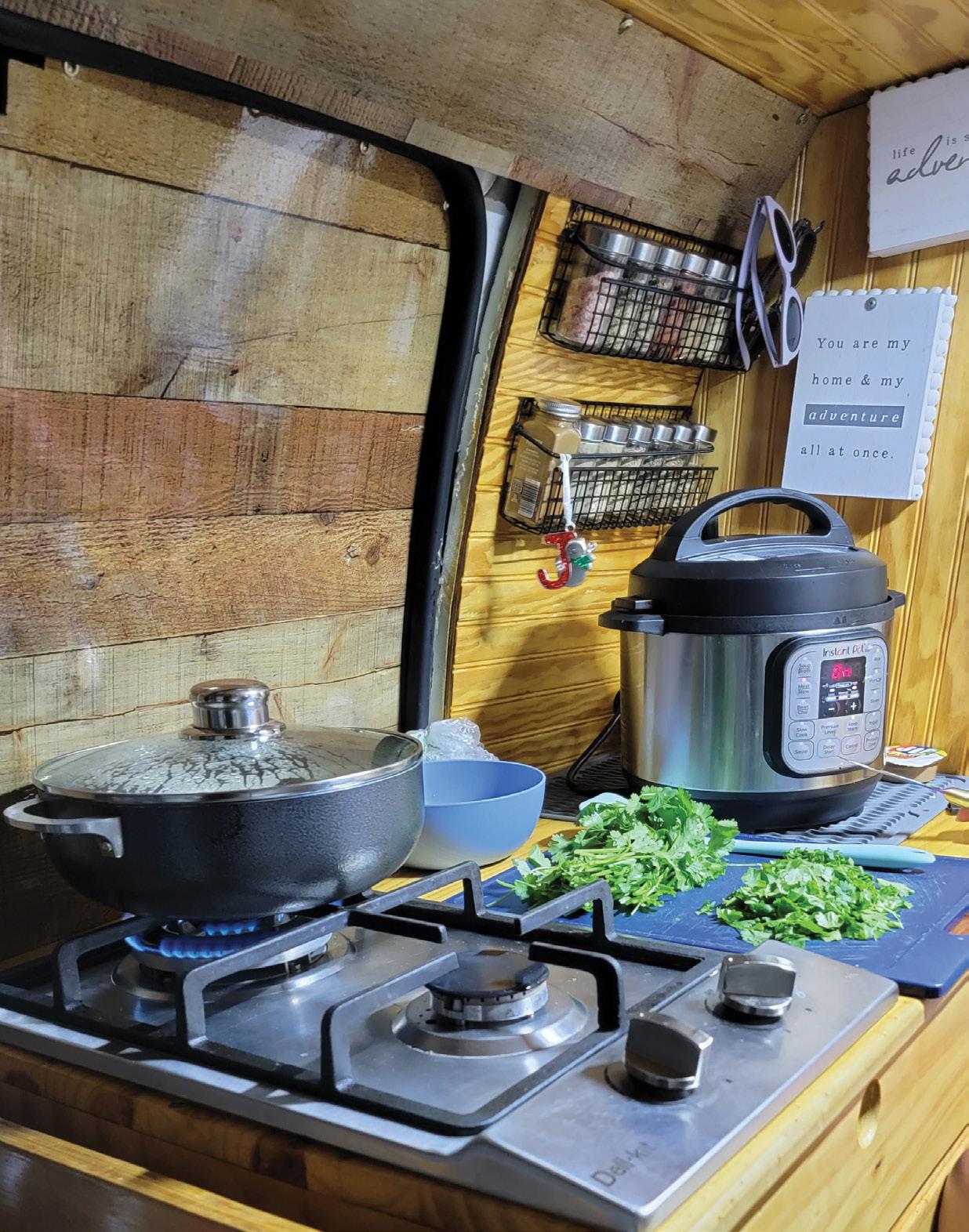
Some say the kitchen is the heart of the home. For us, this saying is as real as it gets. Our kitchen is a place where we express our love, not just to each other, but also to our friends and family. We did not want to give that up.
It still amazes us how we fit so many things in such a small living space and still were able to cook full meals. With a couple of pots, one pan, and one instant pot, we made all kinds of things, including steak, eggs, and elaborate rice and beans! The only downside was that we had to take turns using the kitchen, but we made it work. We sat on a construction bucket and made do with a small fridge, only getting out what we needed right away because of the limited counter space. That small, almost nonexistent kitchen helped us make many new food-based memories.
One meal I remember often is when we parked right in front of the National Archives building in Washington, D.C., and cooked mashed potatoes and lamb chops. I know, maybe not the best location, but definitely a place where not many people get to have such a fancy dinner! We’ve also cooked countless beachside meals to share with amazing people we’ve met on the road.
Our love for cooking plays such an important role in our lives that it was one of the biggest reasons we decided to upgrade from our van to an RV. We didn’t want to take turns cooking anymore, and we wanted a larger fridge. Our current setup allows us to have a slightly larger kitchen that integrates into our hallway, office, and entryway, and allows us to get more creative with our meals while on the road. And just as in both our sticks and bricks home and our van, it is the heart of the household.
We’ve been on the road for just a little more than a year, but we have already made countless memories. Our hearts are full of gratitude and love, and food is and will continue to be one of the most important things that brings us back to each of those moments. ■
Javier and Elianny share their journey on Instagram @javiandelitravels
Creamy Mashed Potatoes
Ingredients:
5 lb. bag of russet potatoes
1 bunch of cilantro
1 bunch of green onion
Salt to taste
½ stick of butter
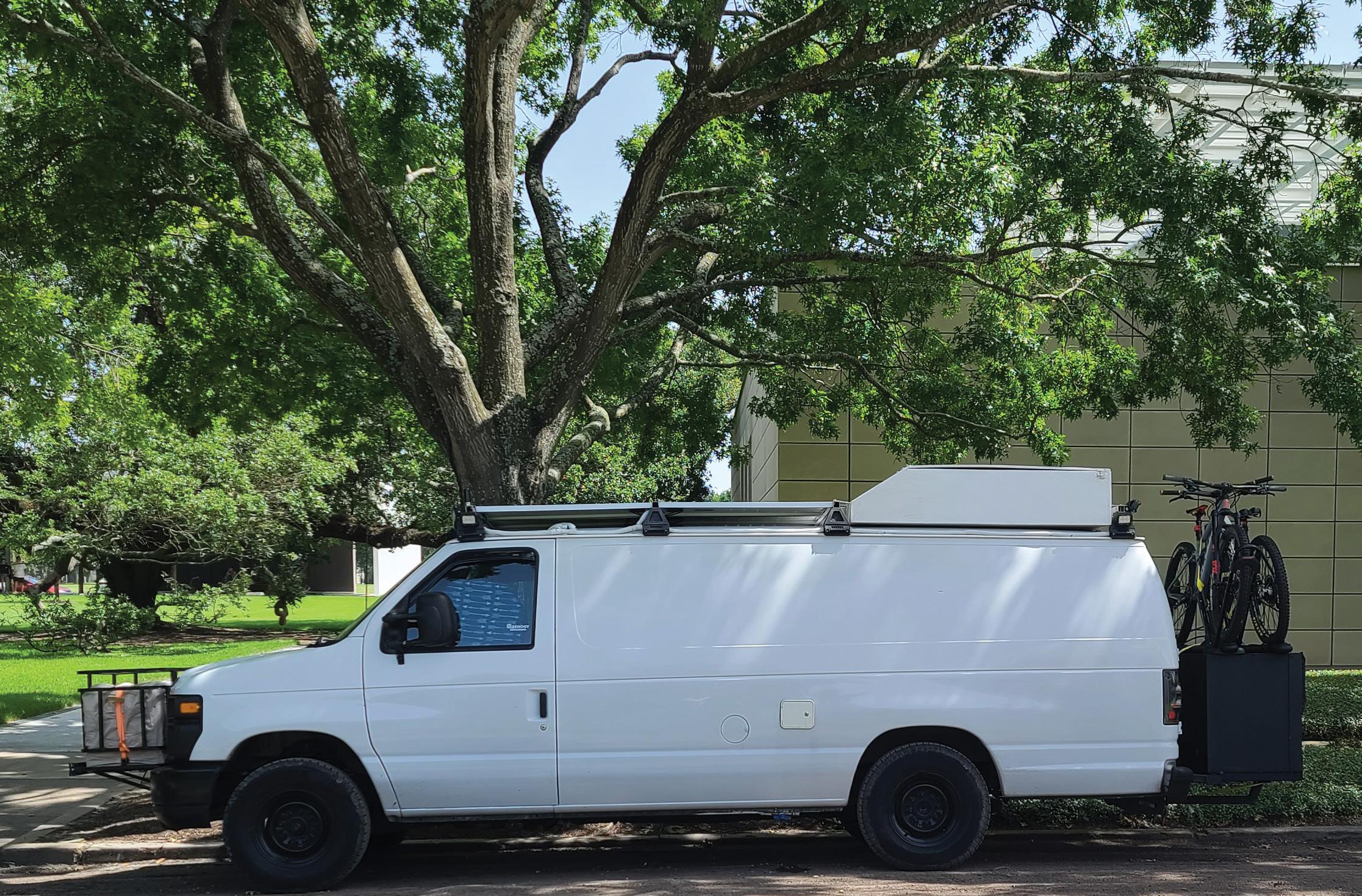
½ cup of milk
4 oz. cream cheese
Instructions:
Boil a pot of salted water. Peel potatoes and cut them into quarter-inch pieces. Once the water is boiling, cook potatoes until tender.
When potatoes are tender, discard some of the water, but leave about ½ cup on the side to use later. Mash the potatoes to make a paste, add salt to taste, butter, and cream cheese, and mix well. Add some of the boiled water and milk to create a creamy consistency. Cut green onions and cilantro and mix into the potatoes right before serving. Stir well and serve with your choice of entree.
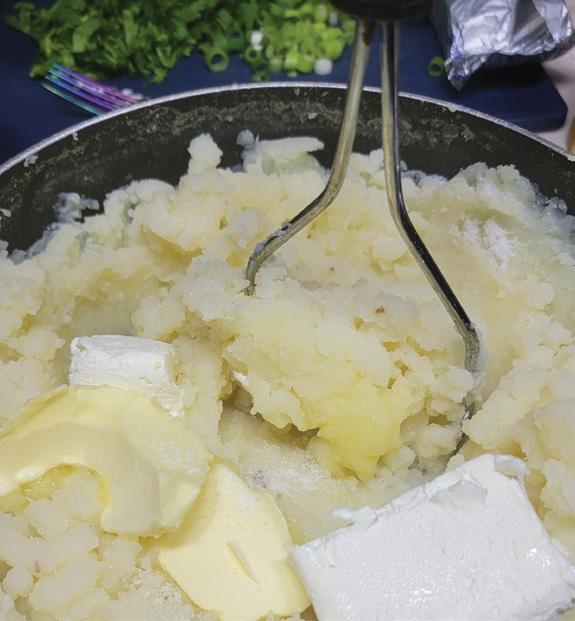



RV TODAY | 33
Planning a cross-country road trip or staying local? No matter where your RV travels take you, RV Today readers are sharing some of their favorite campgrounds from around the country.








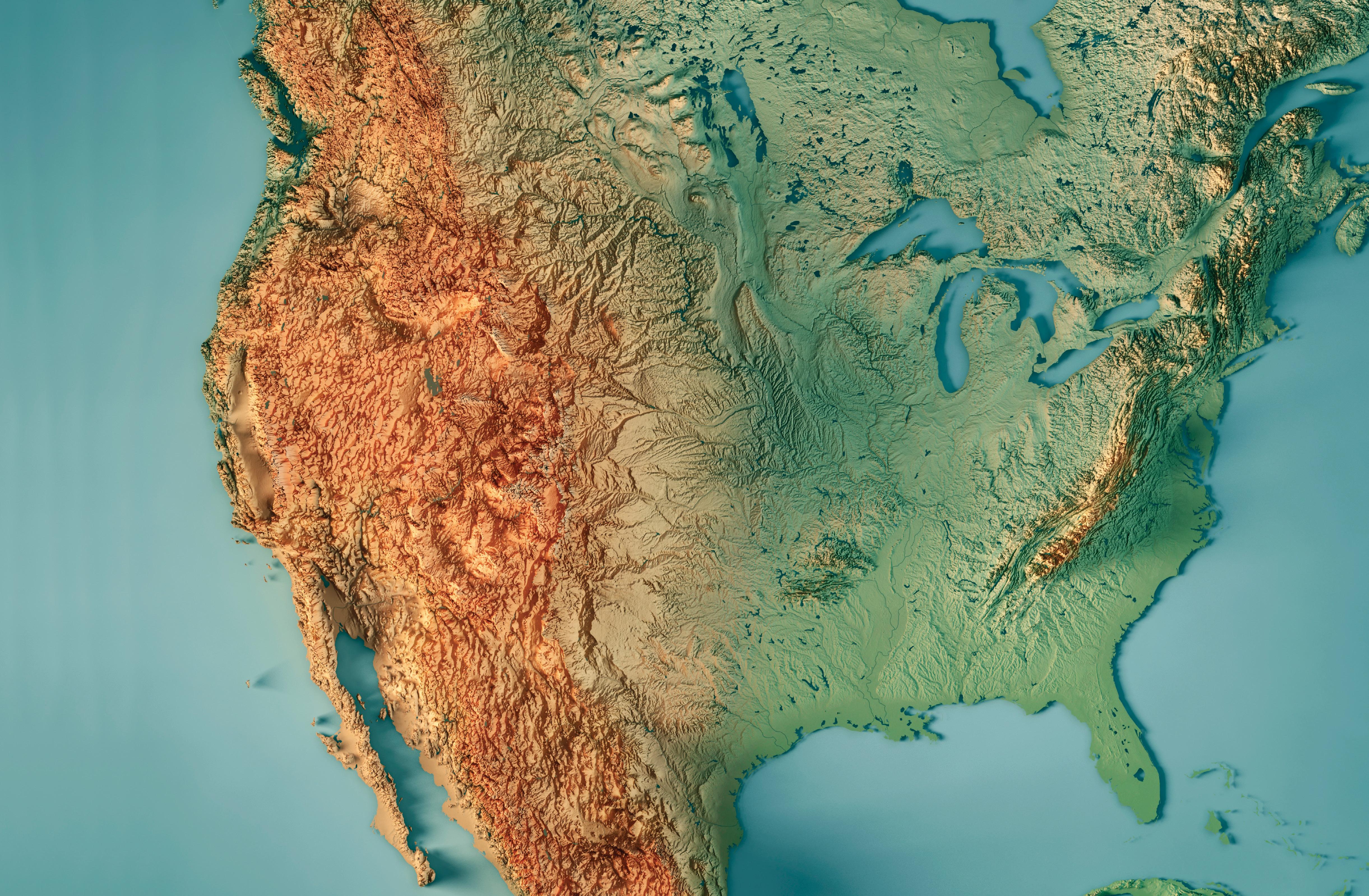
$ Up to $30 / night
































$$ $31-$60 / night
$$$ $61+ / night
FAST FACTS
Full Hookups
Big Rig Friendly Playground
Dog Park
Pool Wi-Fi

PACIFIC EASTERN CENTRAL
er Approved
COST 34 | RVTODAY.COM
Morro Dunes RV Park CT RV Resort Usery Mountain Regional Park Lake Pleasant Regional Park Cape Disappointment State Park
Three Rivers Resort
Campgrounds











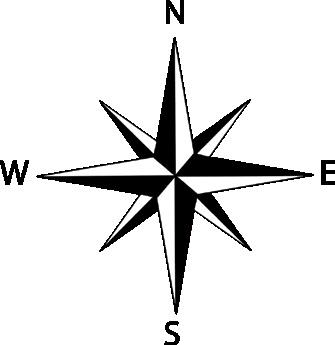
























Have a campground you’d like to share? Send an email with subject line “Campground Highlights” to collab@rvtoday.com for more information on how you can share a spot in an upcoming issue.
Wagon Master RV Park and Alpaca Farm Lake Catherine State Park Port Cove RV Resort Topsail Hill Preserve State Park, Gregory E. Moore RV Resort Majestic Oaks RV Resort
The Great Divide Campground
Morro Dunes RV Park
1700 Embarcadero, Morro Bay, CA 93442
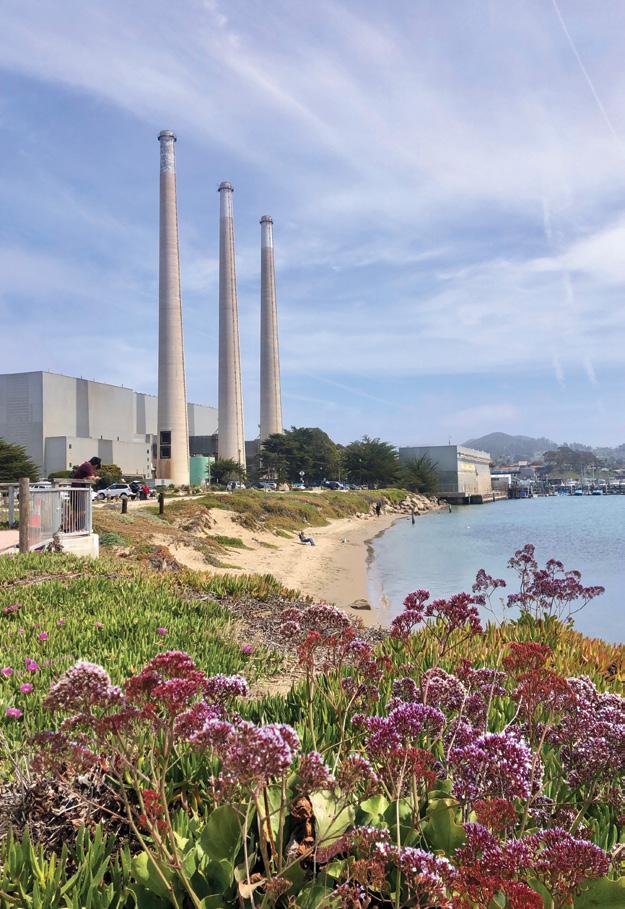
This RV park is all about location, location, location! It may not provide the best views of the beach, but it’s right beside the beach and Morro Bay.

The campsites are divided by wooden fencing and a bit tight, but still doable for a big rig. Sites come with a picnic table and fire ring. Wi-Fi actually worked well, and they also provide cable TV. There are 170 sites, of which 139 have full hookups. Some sites have electric and water, plus there are tent sites, three restrooms, two laundry facilities, a clubhouse, an office/store, an enclosed pet area, a group BBQ area, and two dump stations.
The California coastline can be found within a few steps of the park gate and across the road. Over the dunes are Morro Rock Beach and Morro Strand State Beach. You are within walking distance of Morro Rock and a 15-minute walk or two-minute drive to downtown Morro Bay, a quaint little fisherman’s village where you can enjoy shops, restaurants with fresh seafood, fresh fish markets, boat tours/charters, and piers with coastal views, sea otters, and seals.
Have an e-bike? The bike path is just outside the same gate that leads to Morro Rock, which is also minutes from Morro Bay.
We would definitely stay here again just because of the location. We really enjoyed the Morro Bay area and we think you will too.
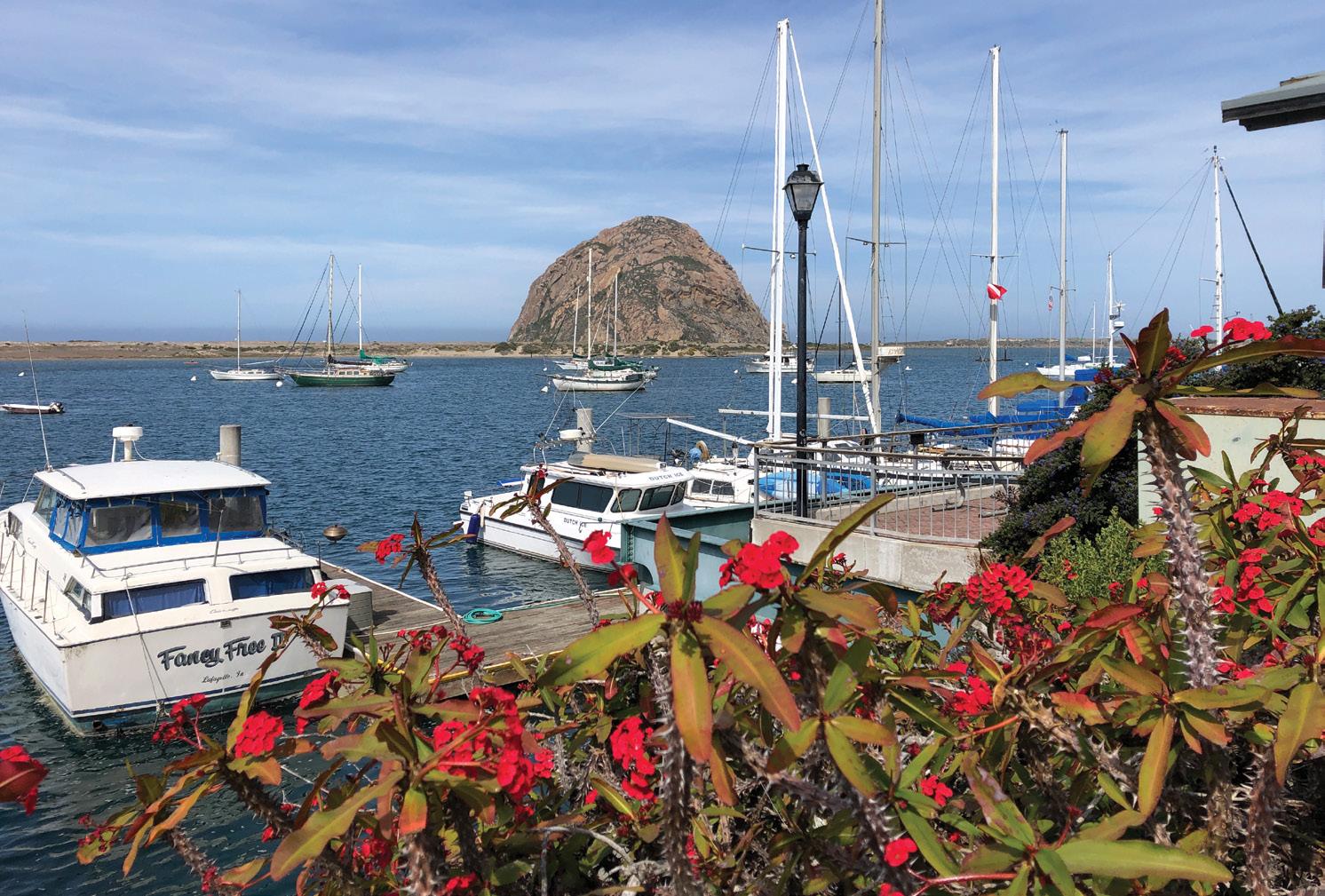

Pacific
Contributed by Brenda and Jeff Michniewicz
$$ 36 | RVTODAY.COM
Cape Disappointment State Park


244 Robert Gray Drive, Ilwaco, WA 98624
Cape Disappointment State Park is a Washington coast gem, nestled between the mouth of the Columbia River and the Pacific Ocean. It is a 2,023-acre camping park and offers yurts, cabins, and unique historic vacation homes. This state park is highly sought after, so make reservations six to nine months in advance.
Cape Disappointment has 137 standard campsites, 50 full-hookup sites, 18 partial-hookup sites with water and electricity, five primitive hiker/biker campsites, which are first come, first served, one dump station, restrooms, and showers. The maximum site length is 45 feet (limited availability), and camping is available year round. Remote workers, beware—there is zero cell reception.
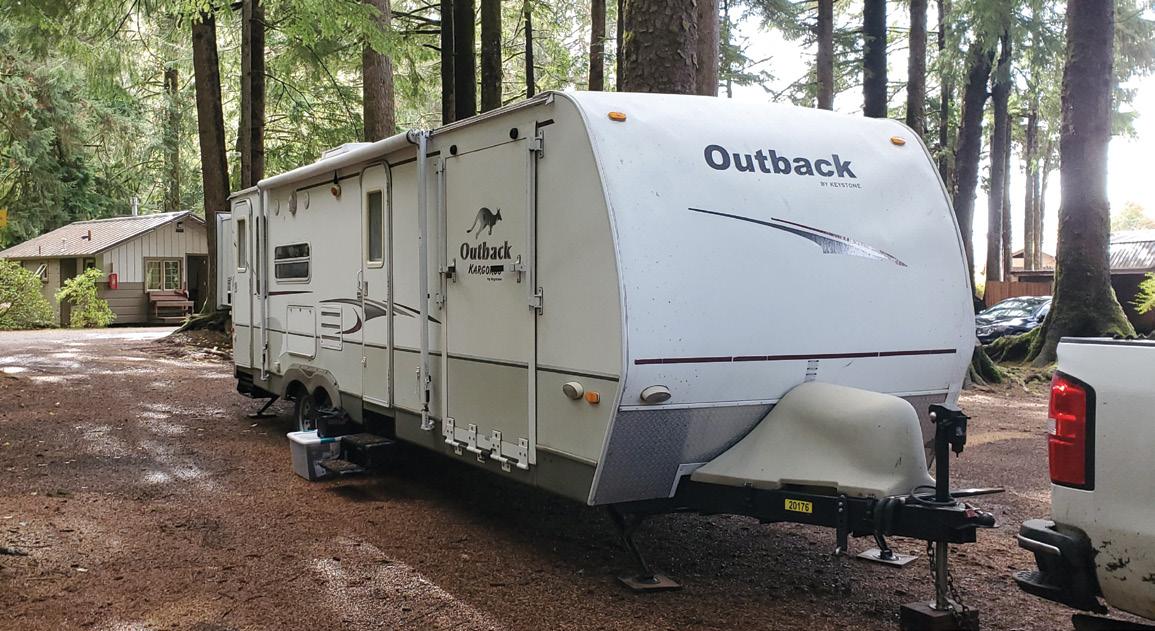
Two of the park’s most notable features are the lighthouses—Cape Disappointment Lighthouse and North Head Lighthouse. There are also great familyfriendly hikes. Long Beach is only about 10 minutes away, and Astoria, Oregon, is about 30 minutes. Washington offers the unique ability to drive on beaches, but don’t get too close to the water, as tidal changes get people stuck more often than you might think.
Three Rivers Resort
7764 La Push Road, Forks, WA 98331
We were looking specifically for a spot with good Wi-Fi when we booked a night at Three Rivers, but it proved to be much more than that! This quaint woodsy “resort” has partial-hookup RV spots throughout the trees, tons of cabins, a store, and a restaurant. The campground is conveniently located near the coast and all of the hikes at the base of Olympic. This means the area is also considered the “treaty line” for Twilight fans, so there are ample Twilight references and paraphernalia scattered around to check out! This is a fun little place to stay if you want a mom-and-pop campground experience. The campground is a stone’s throw from all the beaches of Olympic National Park (Rialto, First, Second, and Third), on the edge of the town of Forks, and close to other Washington Coast attractions, such as Ruby Beach and the Tree of Life!
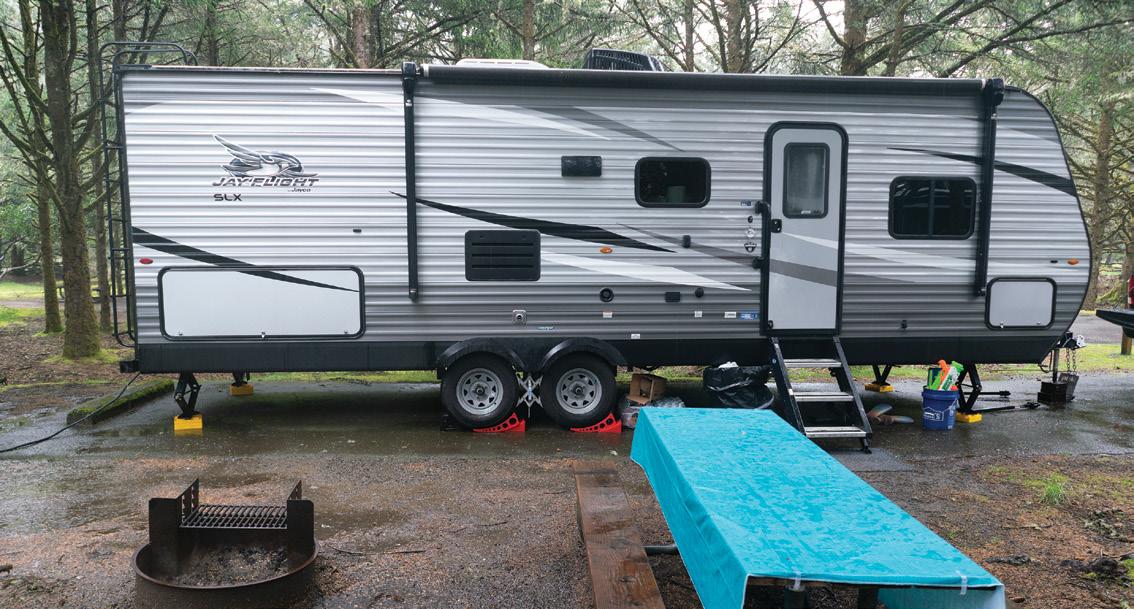
$$
Contributed by Brooks Smothers
Contributed by Kristin Halls
$$
Mountain
CT RV Resort

1030 S Barrel Cactus Ridge, Benson, AZ 85602

This campground was a great stop outside Tucson, Arizona. We loved that it was conveniently located just off the highway, yet far enough that road noise was not an issue. Although there are many long-term residents as well as park models and mobile homes, the area was well kept and very clean—you can tell management takes pride in maintaining a certain standard. The heated pool was a nice treat for the kids to get energy out after traveling, and the adults relaxed in the hot tub. There was also a laundry room on site with plenty of washers and dryers, and all were clean and in good working order. While the overnight sites were close together, there was only one other RV in that area with us even though we were there during peak season, so we were not crowded at all. This was a great, safe, and clean option when looking to stay in the Tucson area. We would definitely stay again.
Kartchner Caverns State Park is just 8 miles down the road and offers tours of beautiful caves. Biosphere 2, the world’s largest controlled environment dedicated to climate research, is close enough for a day trip. You can also visit Tombstone, which is only about 30 miles away.
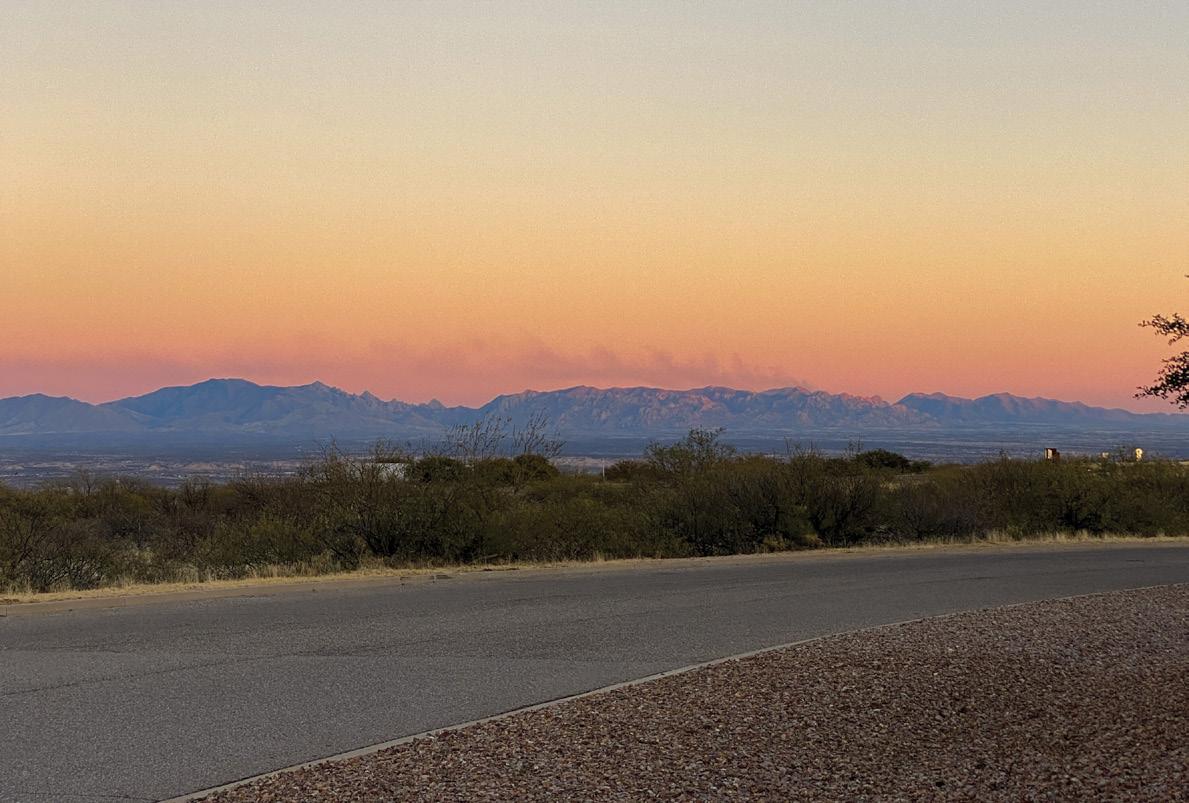
Usery Mountain Regional Park
3939 N Usery Pass Road, Mesa, AZ 85207
This campground consists of 73 large campsites arranged so each one feels reasonably private. Each spot has its own large cement picnic table, barbecue

grill, and fire ring. The developed sites have water and electricity, and a dump station is available for campers to use as needed.
There’s no playground or dog park, but you won’t miss them with all the hiking and biking trails available. A nature center on site offers programs including a monthly guided full-moon hike.
We always feel far away from things when we stay here, but you’ll find grocery stores, pharmacies, restaurants, and plenty of other businesses nearby.
Usery Regional Park is an excellent park for weekend warriors, full-timers, and anyone in between, though there is a two-week limit, per county rules. Reservations open six months in advance.
There’s a great amount of sightseeing within the park, especially on the hiking trails. You’ll also find easy access to Apache Junction, Scottsdale, Tempe, Mesa, and Gilbert to the west. The Phoenix airport is almost a straight shot south, and Lost Dutchman State Park and the Tortilla Flats aren’t too far to the east.
$$
Contributed by Reagan Ray
$$
Contributed by Melissa Crosby Coker
38 | RVTODAY.COM
Lake Pleasant Regional Park
41835 N. Castle Hot Springs Road
Morristown, AZ 85342

Lake Pleasant is a budget-friendly must-stop destination. When we arrived, we were instantly greeted by dozens of friendly burros. There are several beach areas to swim or sunbathe, and there is a free discovery center at the top of the hill with a plethora of information regarding the park, wildlife, and more. Lake Pleasant has great views, and we had no issues getting our mobile Wi-Fi hotspots to work. The bathrooms and facilities are cleaned daily.
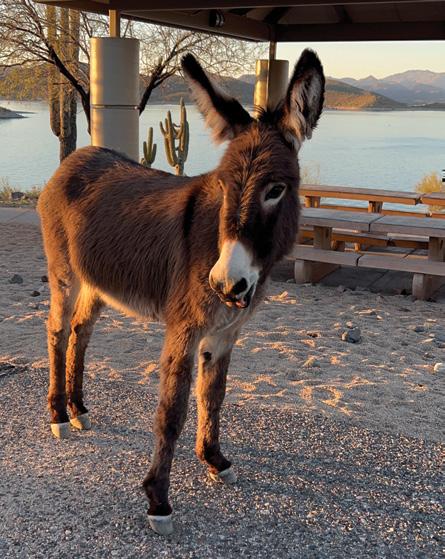

Lake Pleasant itself offers tons of sightseeing—the park has several hikes and lots of cacti, plus water and mountains within viewing range. There are picnic tables and canopies spread throughout the park, so you can take in the scenery while staying shaded. A 30-minute drive south will take you to Phoenix.

 Contributed by Anne Klumpp
Contributed by Anne Klumpp
$$
Majestic Oaks RV Resort
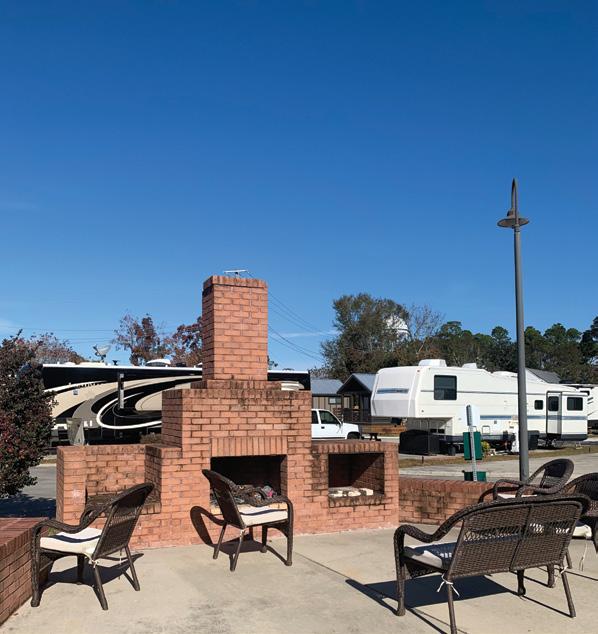
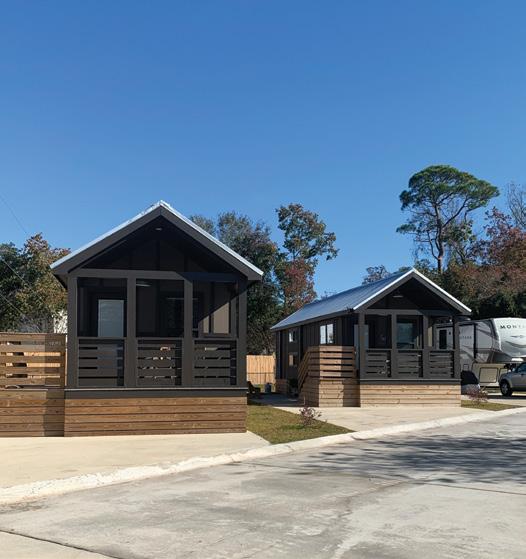
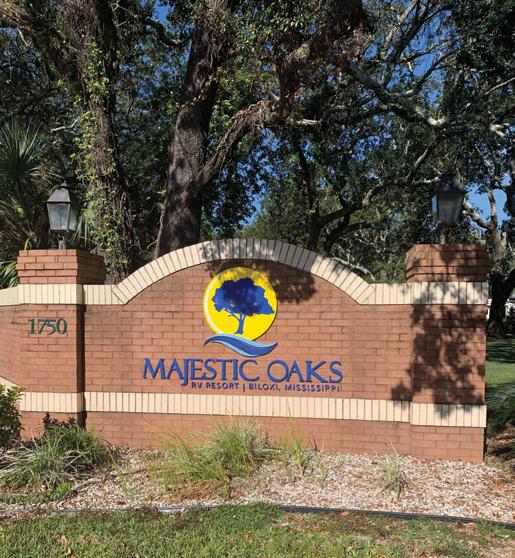
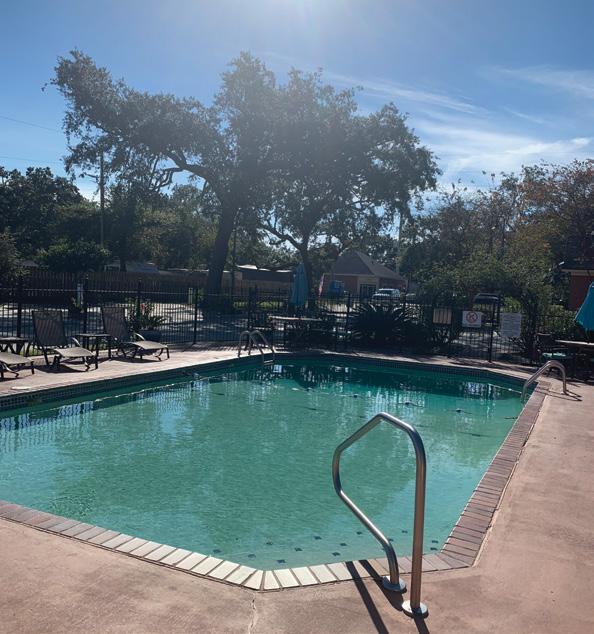
1750 Pass Road, Biloxi, MS 39531
Biloxi, Mississippi, once known as the seafood capital of the world, is located on the coast of the Gulf of Mexico. If you’re looking for an RV resort within walking distance of the beaches, check out Majestic Oaks RV Resort. This is a small, gated, and cozy campground with 95 paved full-hookup spots. It’s a great campground if you don’t mind being close to your neighbors—we didn’t mind while we stayed here because we were out sightseeing every day. This resort has a swimming pool, several dog parks, and plenty of mature trees to provide shade. The rates for the resort are very competitive when you consider its proximity to the beach. Whether you want to sunbathe in the summer or just get away to somewhere warm in the winter, this campground is a great choice.
Biloxi also offers a lot of attractions. The shoreline is 62 miles of beautiful white sandy beaches, making it the biggest attraction. Biloxi has 24-hour casinos, many right on the beach, so it is perfect if you like to gamble. There’s even a shuttle service to get there! You’ll also find plenty of great seafood restaurants along the shores and around the city. There are several museums, including the Ohr-O’Keefe
Museum of Art. Most of the beaches have walking boardwalks, which make it easy for anyone to enjoy the beach and their stunning sunsets. If you happen to be in the area during the holidays, the Gulfport Harbor Lights Festival is a must-see! Complete with Santa, dancing trees, and more than 1 million lights, you are guaranteed an unforgettable experience.
$$
Wagon Master RV Park and Alpaca Farm
3926 FM 455 (Chapman Road), Sanger, TX 76266
We have used this park near Fort Worth as a great one- or two-night stop on our way through Texas. We love that it has large pads that are easy to maneuver and mostly level, so we can stay hooked up for overnight stays. There are great laundry facilities and bathrooms, and it is very clean and well maintained. It’s close enough to a big city for shopping and food. The park also has an alpaca farm, and they’ll give you a bag of feed so you can feed the animals. This is a great stop for families, couples, or solo travelers.
Wagon Master RV Park and Alpaca Farm is about an hour away from both Fort Worth and Dallas. The closest town with shopping is Denton, which is 14 miles away.

 Contributed by Gretchen Watson
Contributed by Gretchen Watson
Central
Contributed by Patty Gill
$$
$$
Lake Catherine State Park

1200 Catherine Park Road, Hot Springs, AR 71913
Lake Catherine State Park is located in the Ouachita Mountains. At $36 per night with full hookups, we were pleasantly surprised by this modern and well-kept campground. The sites are huge, with picnic tables, lantern hooks, and permanent fire pits. Plus, the fire pits are spaced far enough from the RV pads that you don’t have to worry about smoke blowing into your rig. The pads themselves were newer asphalt and fairly level.

Our back-in site had a gorgeous lake view, and we saw foraging deer and bald eagles diving in the lake to fish. The clean, no-frills bathhouse included showers, toilets, and sinks. They also offer cabin rentals, a boat launch, a playground, and trailheads. The Falls Creek waterfall trailhead is easily accessible from the campground by foot, and the well-marked trail is about 2 miles long. You’ll come across a handful of other small
creek falls during the hike, and the water is so clear! The larger waterfall and pool are about three-fourths of the way through this loop trail, and it’s worth packing a picnic lunch to enjoy the view. It loops back to the campground via a sturdy suspension walking bridge.
Lake Catherine State Park is 15 minutes from Hot Springs National Park, where you can visit the Gangster Museum of America or a wax museum, and even fill your water bottles with hot springs water, which is hot from the tap! There are also bathhouses in operation in Buckstaff and Quapaw, which are open to ages 14 and over. We chose Quapaw Baths and Spa, which opened in 1922. You can soak in four different pools, ranging in temperature from 98 to 104 degrees. The mineral water is odorless and said to be beneficial for skin and joint health. Stop by the historic Fordyce Bathhouse, which functions as the park’s visitor center and features a museum including items from the original bathhouse. Behind the bathhouses is the Grand Promenade, which has access to hiking trails. A ranger told us the original trails were created for physical therapy and rehabilitation, so they vary in incline and distance. You can also stop for a beer and lunch at the renovated Superior Bathhouse, which is now a restaurant and brewery!
 Contributed by Kestra Bronneke
Contributed by Kestra Bronneke
RV TODAY | 41
$$
Port Cove RV Resort
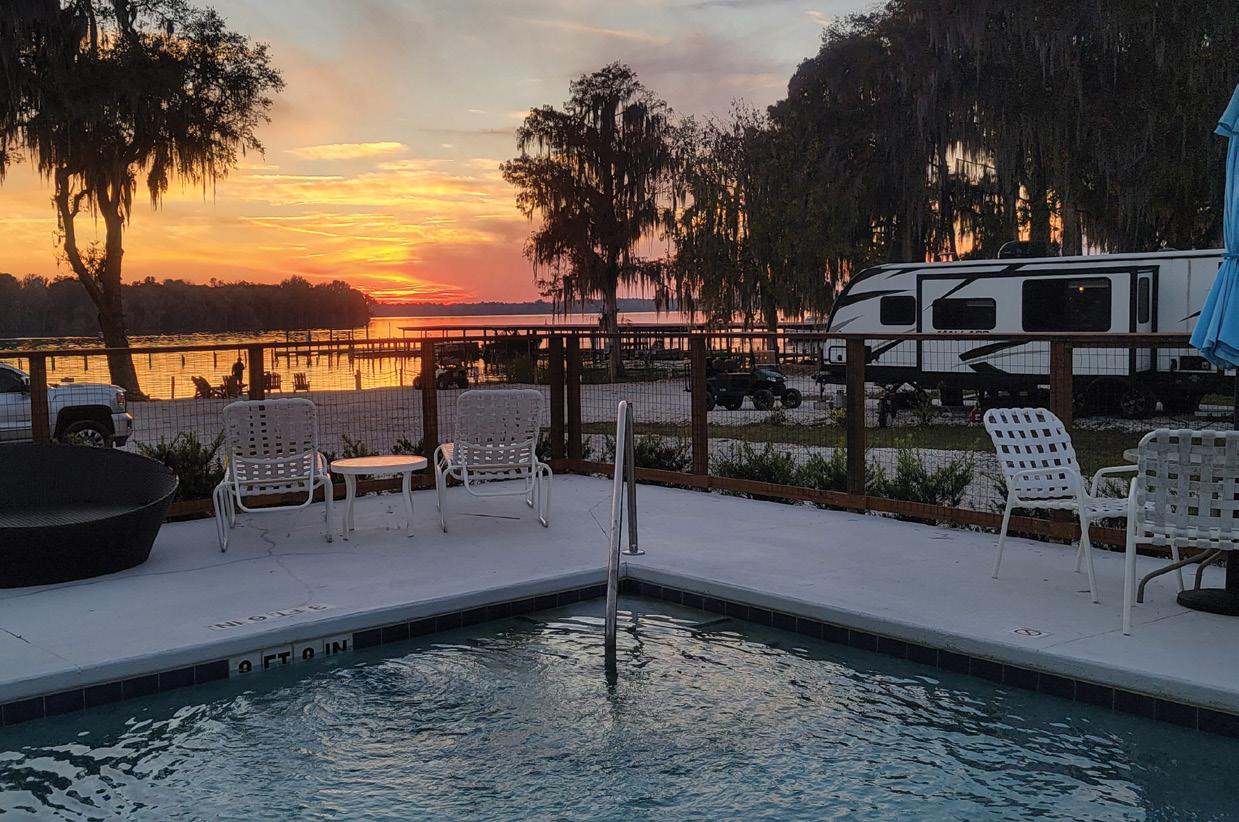
110 Georgetown Landing Road, Georgetown, FL 32139
Any camper who loves nature will enjoy Port Cove! This new park is located right on the Saint Johns River, with almost every campsite offering either full or partial water views. Two docks allow for great fishing, and the campground has its own marina, which is able to accommodate pontoon-sized boats. Lake George, Silver Glen Springs, and Salt Springs are an easy boat ride away, and are a must when staying here!
The park is dotted with palm trees and live oaks covered in Spanish moss—a perfect picture of Old Florida. Bald eagles and ospreys are common sights, along with gopher tortoises and occasional deer. After dark, the views of the night sky are some of the best in Florida.
To top it off, the park has a beautiful pool within view of the river and a large communal area. The owners host events for guests throughout the year, including wine tastings and holiday decor competitions, with plans for many more activities. All sites have full hookups with 30- or 50-amp connections. It’s a great park, thanks to its location and clean, modern setup for campers.
The Welaka State Forest is a few miles away, and it offers great hiking and biking opportunities. Mud Springs Trail leads to a natural spring and a perfect swimming hole! The park sits at the confluence of the St. Johns River and Lake George. Across the lake, the Ocala National Forest is accessible by boat or car from the RV park. It’s home to plenty of trails and stunning springs. The area is also famous for its bass fishing, with tournaments hosted throughout the year in Palatka and Crescent City.
Orlando, Daytona Beach, and Saint Augustine are centrally located within driving distance of the park. All are close enough for day trips.
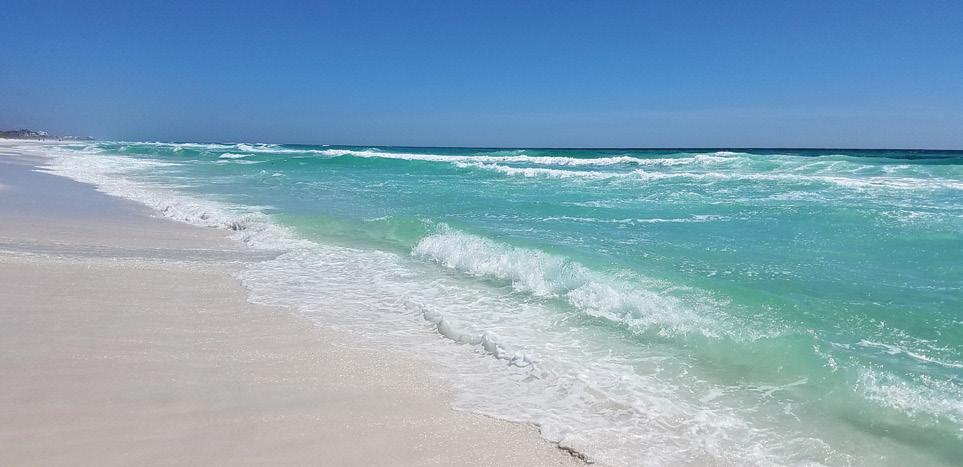

$$
Topsail Hill Preserve State Park, Gregory E. Moore RV Resort
7525 W. County Highway 30A , Santa Rosa Beach, FL 32459
Are you looking for a campground with access to one of the most beautiful beaches in the country? Look no further than Topsail Hill Preserve State Park. With more than 3 miles of beautiful white sand, crystal-clear emerald green water, and gorgeous coastal dune lakes, you will never want to leave. The amenities are a bonus—they have shuffleboard, a swimming pool, a café with Wi-Fi, a camp store with bikes and paddle craft rentals, stocked fishing ponds, a horseshoe pit, a playground, ranger-led programs, an amphitheater, and more than 20 miles of hiking and biking trails.
The campground is divided into three sections: RV sites, tent sites, and rental cabins/bungalows. All RV sites have full hookups, cable television, and a picnic table, and are level and big rig friendly. Bring your own fire pit, though! Tent sites have a spacious gravel pad, 110V power, water, a picnic table, a fire pit with cooking grate, and a clothesline. The cabins and bungalows have one or two bedrooms, a full kitchen and bathroom, a living area, a screened-in porch, a picnic table, and a charcoal grill. The maximum stay is two weeks, and booking online is recommended.
 Contributed by Shannon Murray
Contributed by Shannon Murray
Eastern
Contributed by Nancy Walters
Topsail is located between Destin and Panama City Beach, which are two popular spring break destinations. Once you leave the peaceful, quiet campground, you can head to one of these towns for plenty of shopping, theaters, miniature golf, water slides, scenic helicopter rides, parasailing adventures, boat rentals, and more. The Gulfarium in Destin is a great place to visit with kids. Topsail is one of four state parks in the area. 42 | RVTODAY.COM
The Great Divide Campground

68 Phillips Road, Newton, NJ 07860
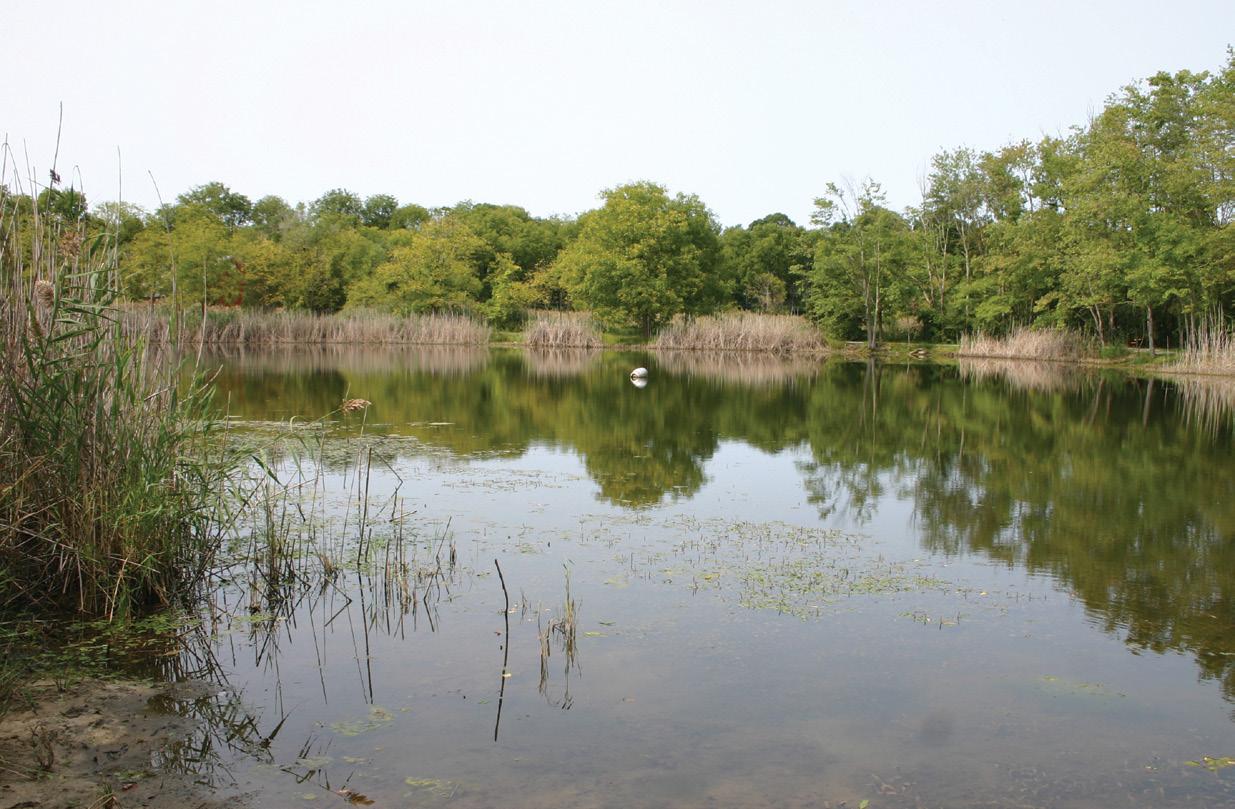
The Great Divide Campground is a quiet and peaceful place to spend a few days or a week relaxing. There’s musical entertainment on site most weekends, along with occasional arts and crafts and festival events. The campground maintains and updates the area while retaining the natural beauty for great camping experiences. The sites are nicely spaced, with room for our cornhole boards or other yard games. We enjoy participating in the weekend activities or just sitting around our fire pit at night. Kids especially enjoy the pool, bike trails, and fishing lake, along with the playground area, with volleyball, soccer, basketball, horseshoes, and kayak rentals. From tents to pop-ups to cabin rentals, any type of camper would enjoy coming to this campground—they have it all. We look forward to going back.
The Great Divide Campground is close to historic sites including Cooper Grist Mill and High Point State Park. The Lakota Wolf Preserve will get you close to wolves, foxes, and bobcats. Also, Fosterfields Living Historical Farm is a 213.4-acre farm and open-air museum that allows you to experience a farm as it was more than 100 years ago.
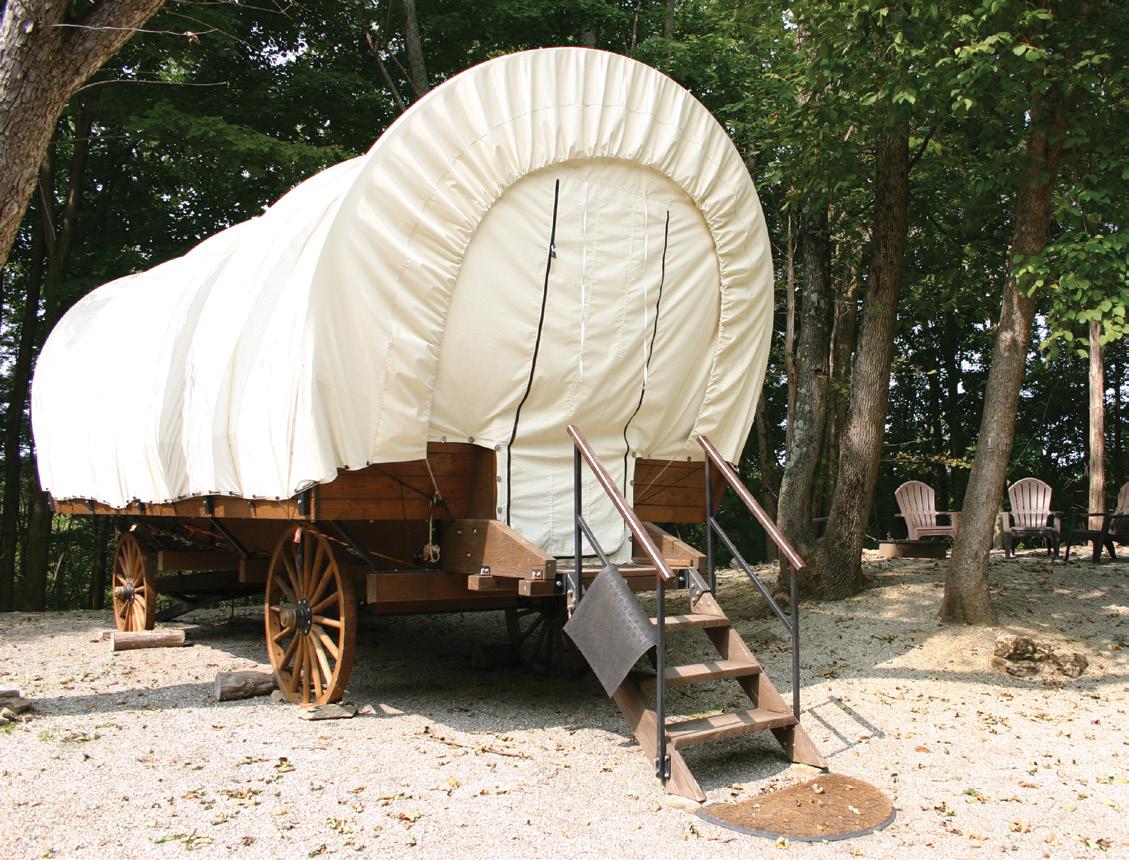
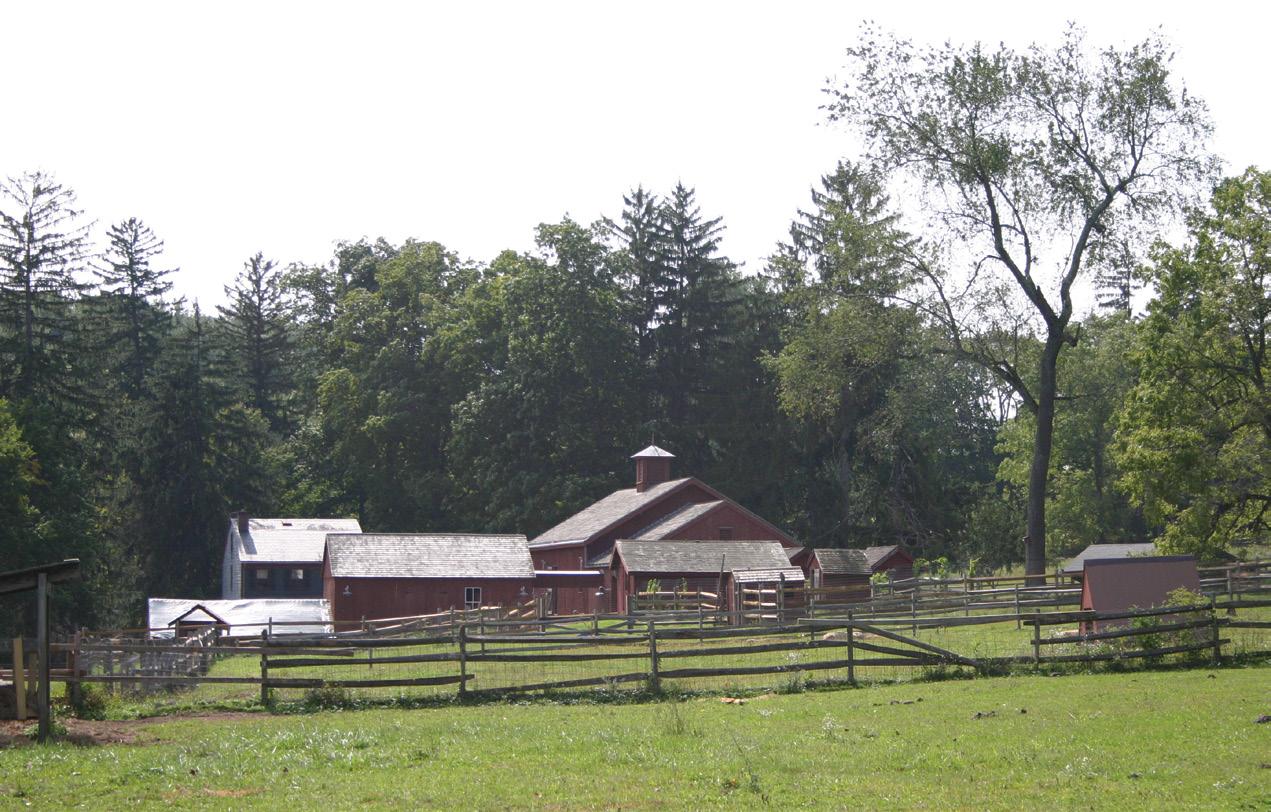
The area is also close to a few wineries, breweries, and restaurants—Brook Hollow Winery offers music on weekends, and Four Sisters Winery is another great option. Sheridan’s Restaurant and Tavern and Buck Hill Brewery and Restaurant are two of our favorite places to visit after a day of touring. Tranquillity Farms has local varieties of jams, jellies, and honey, plus pastries, cakes, crafts, and much more, and they even offer to-go meals. Every camping trip, it is a must to pick up the B-E-A-R jam and, if available, apple strudel sticks—they are so good! The farm has a nursery and an orchard, so you can get flowers and apples seasonally. The Fall Fest has pumpkins, apples, hayrides, and corn mazes for the kids. ■

$$$
Contributed by Holly Gale
HOW AN RV SOLAR SYSTEM WORKS

 By Nikki Kirk
By Nikki Kirk
Solar systems are the highly-coveted key to really great boondocking, but they’re also widely unknown and misunderstood.

There are so many questions! What do I need? How much do I need? How much will it cost? Can I do it myself? And of course, can I run my air conditioner? Even after doing a fair bit of our own online research into solar over the years, we still felt confused as to what we needed, and how the whole thing would even
work. Plus, the daunting task of drilling holes and wiring an RV for solar can overwhelm even the most ambitious do-it-yourselfers.
Also, solar technology is changing pretty quickly. When we started our full-time RV journey just a few years ago, the idea of running solar for the air conditioner was mostly outside the realm of possibility. Then about a year later, it was happening! And today? Yes, you can definitely run your air conditioner on solar—that is, if you have enough power.
RV TODAY | 45
The Basics
It all sounds simple enough. Solar panels catch the rays from the sun, the panels convert the rays into electricity, which goes into your batteries, and you run your RV off of the batteries. But it’s a bit more complicated than that, and there are questions and equations you’ll need to think through.
If you’ve ever asked a Facebook group, or even a solar installation company, for help on your specific RV, you probably heard back, “Well, what is it you want to run?” Just as you are unique compared to your neighbors, so are your lifestyle, way of travel, and RV power needs. To get started, we’ll walk you through the components every solar setup requires, then we’ll show you how to identify how much power you’ll need in order to support your lifestyle.
There are four basic components to an RV solar setup: solar panels, a solar controller, batteries, and an inverter.


The solar panels capture the light from the sun and convert it into 12-volt DC (direct current) electricity. A solar panel’s capability can range from 80 to 300 watts, with most RV panels now falling in the 160–200 watt range.
From there, a solar controller controls how many amps are being sent to your batteries to recharge. One factor that comes into play here is sun strike, which means exactly what it sounds like—the amount of sun striking your panels determines how much electricity is being made and sent to your batteries. It’s like how on some days you get a tan, but on others you burn quickly. Depending on the cloud
Contributed by @homewiththehoopers
cover, trees, time of day, and your location, you will get varying levels of sunlight, and therefore varying levels of electricity being made from it.
Your batteries can only take in so much electricity at a time. For example, at noon on a perfect day, your panels could be converting energy at a level too high for the batteries to take in. This is where a solar controller comes in. It regulates how much electricity is being sent to the batteries so they’re never sent more than they can handle.
The solar controller also works in the reverse. In addition to controlling the energy flow into the batteries, it also prevents energy from being lost back through the panels when light is not present. There are two types of solar controllers—MPPT (maximum power point tracking) and PWM (pulse width modulation). They operate in different ways, but both regulate energy for optimum charge and prevent battery backfeed to the panels.
Your batteries are now receiving all that nice clean power from the sun, but it’s 12-volt DC electricity, and most appliances and electrical
outlets run on 120 volts of AC (alternating current) electricity. In order to be able to run your appliances, you need an inverter to convert the batteries’ 12-volt DC power into 120-volt AC power. This electricity created from your inverter is what you’re using to power your electronics in the RV.
How Much Power Do You Need?
Before we bring in all the confusing conversions of watts to amps to volts, let’s take a look at what you need to power your RV. Think of a typical day in your RV life. Which of the above will you need to run? Which will you run when you are boondocking or not

The amount of sun striking your panels determines how much electricity is being made.”
Contributed
by @tinyshinyhomes
otherwise connected to shore power? Add up all the watts necessary for your lifestyle, and that will be your starting point. Keep in mind that the chart represents how much power each appliance uses per hour. Obviously, some things will not be running all the time or at the same time, so think about what your true needs are. For instance, the hair dryer might only be running for half an hour each day, while you might want to run the air conditioner for several hours.
If you have an appliance that’s not listed here, it’s fairly easy to check its watts either on the product itself or through a quick Google search. For example, the Verizon MoFi router we use for Internet access runs at about 12 watts.
There are also devices in your RV that run straight from your 12-volt batteries, like your LED lights, carbon monoxide and propane detectors, water pump, slide outs, and leveling system. You will need to take these devices into consideration on your overall battery bank of power as they will draw some of your battery’s amp hours.
One more thing before we continue—it’s important to note that you are not powering appliances with your solar panels. You’re powering devices and appliances with
CONVERSION CHART
your batteries. Your solar panels are simply recharging the batteries, which will drain as you use their power for devices. You can have a large solar panel array and a large watt inverter, but if you don’t have the batteries to store all the power, the extra panels and watts are rendered useless.
Here comes the math! Now that you’ve calculated the wattage you’re aiming for, this should be a bit easier to understand.
All electricity can be calculated in watts. Solar panels are creating DC electricity in watts, and the solar controller is regulating that energy, sending it to the batteries in volts, and charging in amps. The inverter is now creating AC electricity for you in volts, which you are measuring again in watts.
The simple math is volts x amps = watts.
Batteries are rated on amp hours. In other words, how many amps can you run for how many hours before it’s drained? Since we calculate all electricity in watts, it’s easiest to understand when you understand the battery’s watt hours.
Let’s say a lithium battery has 100 amp hours. Lithium has a depth of discharge of about 80%, so we’ll take the battery’s 12-volt
 *Based on o 15.000 BTU air conditioner which will pull 20 to 30 amps to start, then drop bock 1015 to 20 amps running
*Based on o 15.000 BTU air conditioner which will pull 20 to 30 amps to start, then drop bock 1015 to 20 amps running
Device Amps Volts Watts Air Conditioner* 20 x 120 = 2400 Electric Water Heater 12.5 x 120 = 1500 Microwave Oven 12.8 x 120 = 1536 Coffee Maker 9 x 120 = 1080 Toaster 10 x 120 = 1200 Hair Dryer 10 x 120 = 1200 Television 2 x 120 = 240 Hand Vacuum 2 x 120 = 240 Electric Frying Pan 10 x 120 = 1200 Instant Pot 10 x 120 = 1200 Slow Cooker 1.5 x 120 = 180 MacBook Pro .8 x 120 = 96
electricity x 100 amps x .8, and get 960 watts of usable energy. The more batteries you add to your setup, the more watt hours you have available. For more on batteries, see page X.
Let’s look at an example. A standard television uses 240 watts/hour, so with our single lithium battery example above, you could watch about 4 hours of TV before the battery would be drained.
This is where your solar panels come in. If you’re recharging your batteries with 1,000 watts of power per hour, your batteries may never drain. But, of course, that would require a perfect sun strike 24 hours a day, and that doesn’t even happen in Alaska. In a best-case scenario, you will only get the max amount of power from your solar array for 5 hours a day.
There are also other things to consider when shopping for solar. First, you can always start small and add batteries and solar panels as needed. If you have plans to eventually go bigger, you might want to buy an inverter large enough to cover your expected future needs, because this is the one piece of the setup that can’t be added to. If you have a 1,000 -watt inverter, you can only ever power 1,000 watts. The type of inverter you choose will also dictate what type of loads you can run. Something that needs a large spike of power to start cannot be handled by a smaller, highfrequency inverter very well. However, you can choose to change out and upgrade your inverter as you improve your system if you’d rather start small.

You’ll also want to be aware of your weight. Unlike in a stationary home, you can’t just stock up a bunch of heavy batteries and add 20 panels to your roof with no consequences—the weight will start to add up quickly. While AGM batteries are cheaper, they are about 100 pounds each. Lithium batteries, on the other hand, weigh about 30 pounds each. As far as panels go, you still want to leave room for servicing your roof and its existing appliances, like vents and air conditioners.
Smaller systems require less installation, if any. For instance, if your electricity needs are low, you could get by with just a 1,000-watt inverter, solar suitcase, extension cords, and one or two batteries. You could also mount just a few panels to your roof and use a smaller system with just an extension cord and power strip running through to where you need the power. Then there are larger inverter systems,
which require more in-depth installation due to the required increase in wire size, or in some cases, re-wiring to power the entire breaker box rather than a specific inverted circuit. Solar can be very confusing, but the first step to figuring out how much you’ll need is to calculate your power usage. Once you have that number, a few equations can really help you understand what you need to support your specific RV lifestyle. The beauty of the systems is their ability to scale, so if money is tight, you can start small and add later. ■
RV TODAY | 49
Solar can be very confusing, but the first step to figuring out how much you’ll need is to calculate your power usage.”
THE
Oregon Coast
By Chelsea Gillespie
Waves crash faintly as the first light peeks into our teardrop trailer. Slowly, gently, I pull myself up, so as to not wake our toddler, who was draped over me all night. The aluminum door, drenched in sea spray, creaks as I push it open to reach the kitchen out back. The ocean breeze greets my cheek just before my toes touch the sand. The warmth of sleep, the baby, and the blanket are all gone in an instant and I’m up.
I see the fog climbing down the coastal cliffs onto the beach campground before it settles. The weather
changes in an instant here, and can completely alter the mood of the day. But that’s why we travel, right? For ocean wake-up calls and coastal coffee in 50-degree weather with 20-mile-per-hour winds off the Pacific. Whether in fog or full sun, the Oregon coast is mystical, magical, and wild.
How do we know? We sold our house to purchase a teardrop and explore the wild west while we searched for a new home base. Our first stop was the Oregon coast, and it was all we hoped for and more.

Pro Tips
■ Summer is peak tourist season, and camping reservations are highly encouraged. October can get busy with the salmon migration bringing fishmongers.

■ Boondocking isn’t easy on the coast. Some casinos allow short stays, and while BLM and National Forest land is available, it’s hard to reach.
■ The weather is unpredictable. Pack layers and waterproof jackets. Prepare for mist when the fog rolls in.
RV TODAY | 51
Why Oregon?
From Astoria to Brookings, every bit of the 363 miles of coastline is a sight to behold. You could sprint the entire coast in about eight hours, but you’ll want to take your sweet time and soak in every bit of wildness the Oregon coast has to offer. The “People’s Coast of Oregon” is all about free, open, and accessible beaches for residents and visitors alike.


Known for delectable seafood, Oregon also boasts a world-class beer and wine scene. The Oregon Coast Public Art Trail showcases public galleries, shops, murals, statues, and sculptures. The coastal estuaries are rich with wildlife, the mountains are covered in mystical old-growth forests, the hills are alive with wildflowers, and undeveloped beaches delight and inspire.
Our biggest piece of advice as you plan your trip is to not rush it. Let the trip come to you. You may spend hours walking among cliffside wildflowers and blackberry bushes or venturing into a prehistoric forest that teleports you to a land before time. Make time to revel in the untouched wilderness. You won’t regret it.

Favorite Activites
Enjoy the drive. The views from the roadside cliffs dazzle as you overlook sea stack spires and boulders that melt into the untamed beaches. The forests tower over the road into the morning mist. The drive is as delightful as the scenery, with incredible twists and turns, cool roadside attractions, and awe-inspiring bridges. Dig your toes in the sand, adventure-style. This isn’t Malibu! While you definitely can choose to sunbathe sometimes, that’s probably not why you’re here. Oregon’s beaches are incredible for tide-pooling, watching wildlife, and sightseeing. Sea lions, seals, whales, and turtles are abundant. Purple and orange sea stars cling to the coastal boulders while hundreds of seabirds nest on the beach. The ocean carves
52 | RVTODAY.COM
caves and tunnels out of solid rock. Here, the beach is built for adventure.
Sample the local fare. Coastal Oregon is a foodie’s paradise. Enjoy buttery oysters in Bandon. Go clamming for your dinner in Coos Bay. Savor sweet smoked chinook salmon in Yachats. Sample world-famous Tillamook cheddar straight from the factory. For drinks, choose from pioneer Rogue beers or the impeccable pinots of the Medford and Willamette valleys. And visit the farms in the fertile coastal valleys for the best produce you can get. Buying local means you’ll find food as it should be: simple, seasonal, and fresh.
Hike the Coastal Cliffs. Coastal Oregon is a hiker’s dream. We suggest using AllTrails to research hikes in the area you’re visiting. Ocean weather can drastically change the feel of the experience, so be flexible and have backup plans. That said, hiking in the coastal mist is amazing, even if the views are hampered by fog. Go on an off-road adventure. There are some great off-road beaches in Oregon, so drop your RV and take your 4x4. Pick up a permit at one of 95 licensing locations and you can enjoy two years of dune-driving anywhere in the state.
We weaved our way through sea stacks and enjoyed an off-road sunset in Port Orford. In Cape Kiwanda, we spent the day on the beach, exploring the largest sand dunes on the West Coast. The most popular region for ATVs is the Oregon Dunes National Recreation Area, one of the world’s largest expanses of coastal dunes.
How to Choose Your Route
We chose to start in the south as we left the redwoods of Northern California. Heading north, the undeveloped ruggedness of the southern coast transitions from small fishing communities to a central coast characterized by massive windswept dunes and a few larger towns like

Top Coastal Hikes
■ Sister’s Rock: This is such an incredible hike we did it twice—once in fog while thousands of seabirds nested in the cove and, waves explode through the cave at high tide, making another unique feature. The two experiences were totally different.
■ Samuel Boardman Scenic Corridor: This 12-mile stretch of imposing overlooks and gnarly but rewarding trails is a nature-lover’s dream. Be prepared to climb! Our favorite was Arch rock.


■ God’s Thumb: Take the Knoll Trail and hope for good weather. The views are spectacular.
■ Cape Perpetua: This cape boasts more than 20 miles of trails in the Siuslaw National Forest. Many overlooks sit hundreds of feet above the water.
■ Cape Kiwanda: Drive on the beach and climb a 250-foottall sand dune to take in this amazing view. If the weather is right, you can see hang gliders over the coast.
Must-See Towns, South to North
■ Brookings: Stock up on supplies while visiting Harris Beach and the beautiful Samuel Boardman Scenic Roadway. The city also offers some fun eateries and breweries.
■ Gold Beach: Home to the amazing Honey Bear by the Sea RV park, with clean amenities and private beach access. Visit Cape Blanco, Sisters Rock, Humbug Mountain, the prehistoric gardens, or the small fishing village of Port Orford.
■ Historic Bandon: A fantastic seaport village surrounded by protected natural areas. Explore Old Town, which offers many delectable seafood options, fun art galleries, and a delicious local cheese production called Face Rock Creamery.
■ Coos Bay: Stroll the boardwalk, explore cranberry bogs, visit the Clausen Oyster Farm, go clamming in the estuary, or ride up and down 500-foot-tall sand dunes.

■ Florence: Home to an Old Town and caves full of sea lions.
■ Yachats: A unique town full of art galleries, restaurants, magnificent views, and loads of wildlife.
■ Newport: A funky town that’s home to an aquarium, Oregon’s tallest lighthouse, and the famous Rogue Brewery.
■ Depoe Bay: The whale-watching capital of Oregon!
■ Pacific City: Adjacent to Cape Kiwanda. Enjoy an oceanside beer at Pelican Brewing and a beach bonfire after.
■ Tillamook: Gateway to the Three Cape scenic driving loop, a kayaker’s paradise, and home to world-famous Tillamook Cheese.
■ Rockaway Beach: Take the Oregon Coast Scenic Railroad, go crabbing at Kelly’s Brighton Marina, or enjoy 7 miles of beaches.
■ Cannon Beach: Touristy, but worth it. Only 80 miles from Portland, this charming seaside gem boasts shopping venues, a variety of cuisine, and a walkable downtown adorned with colorful flowers. Don’t miss Haystack Rock, arguably the most iconic sight in the Pacific Northwest.
Coos Bay. Both the south and central regions make for some wonderful hiking above uncrowded state beaches. The North Coast is more developed, with shopping, restaurants, attractions, and mid-sized coastal cities. History and nature collide on the northern Oregon Coast at the Lewis and Clark National Historical Park, a must-see.
Whether you choose to enjoy the untamed wilderness of the south, the authentic seaside villages of the central region, or the more affluent North Coast scene, the magic of the Oregon coast is sure to leave you in awe. With so many beautiful campgrounds along the way, it will be an RV trip you’ll never forget! ■
 Follow Chelsea’s travels on Instagram @unsettledown.
Follow Chelsea’s travels on Instagram @unsettledown.
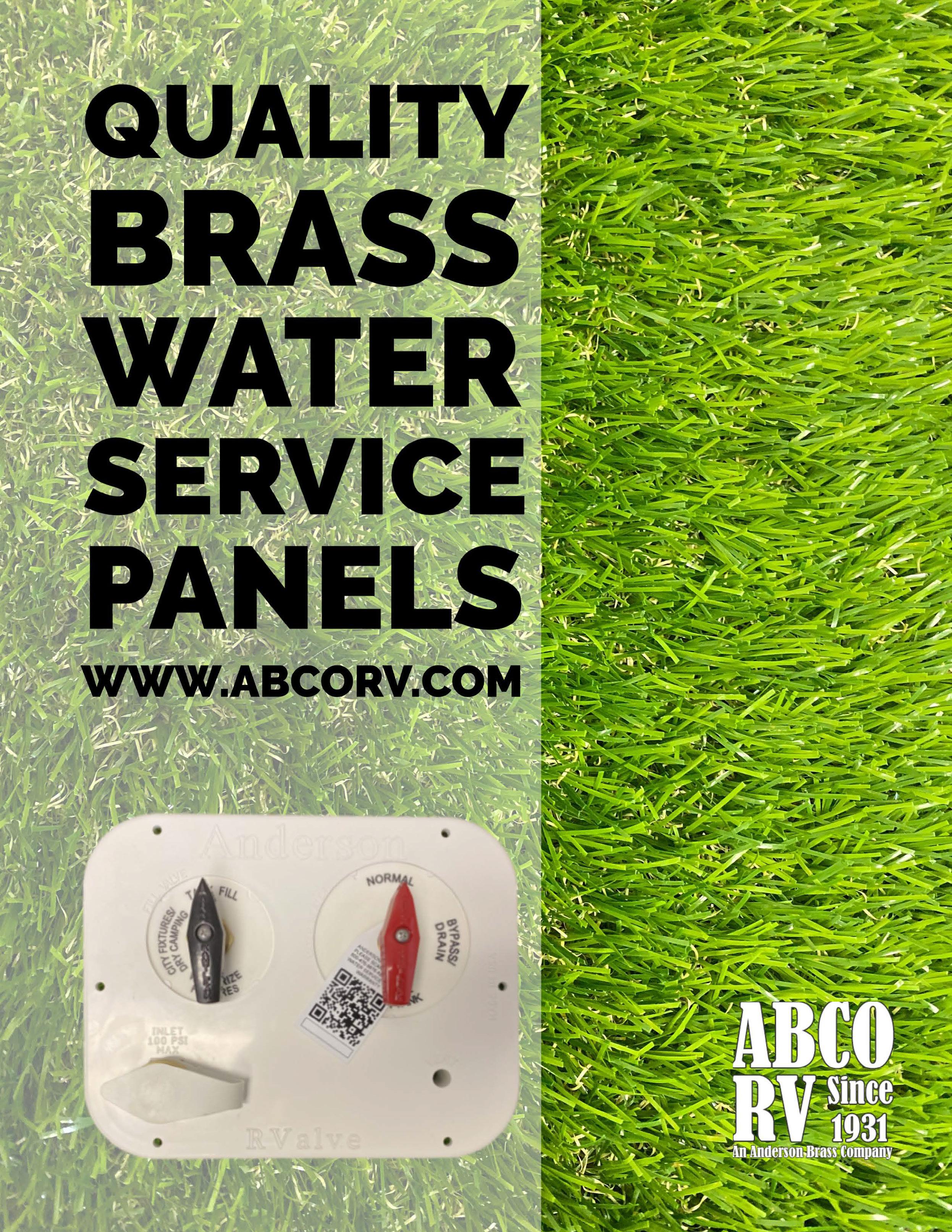
Books to Read

As Long as Grass Grows: The FightIndigenous for Environmental Justice, from Colonization to Standing Rock
 By Dina Gilio-Whitaker
By Dina Gilio-Whitaker
“Dina Gilio-Whitaker’s ‘As Long as Grass Grows’ achieves a far-reaching and nuanced account of the foundational and continuous role colonization plays in environmental injustice for Indigenous peoples.”
-New Mexico Historical Review
The Adventure Gap: Changing the Face of the Outdoors
 By James Edward Mills
By James Edward Mills
“An important new book about a crucial challenge facing the conservation movement”
-Spencer Black, Vice President, Sierra Club
All About Love
By bell hooks
“‘All About Love: New Visions’ promises to be one of the most engaging, life-affirming reads of the year. Come to it with an open mind, and an open heart, and prepare to be transformed.”

-Black Issues Book Review
The Thru-HikerUnlikely
By Derick Lugo
“Derick’s story takes us into a world where his lack of AT knowledge, his unique perspective, his appearance, and his sense of humor open the minds and hearts of those he encounters along the way. Change has come, and the AT will never be the same again.”
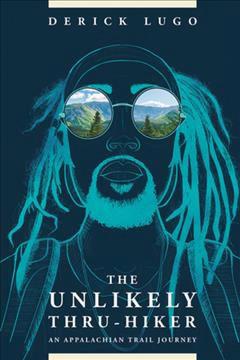
-Jennifer Pharr Davis, author, speaker, AT fastest-known-time setter, and 2011 National Geographic Adventurer of the Year
Black Faces, White Spaces: Reimagining the Relationship of African Americans to the Great Outdoors
 By Carolyn Finney
By Carolyn Finney
“Weaving scholarly analysis with interviews of leading black environmentalists and ordinary Americans, Finney traces the environmental legacy of slavery and Jim Crow segregation, which mapped the wilderness as a terrain of extreme terror and struggle for generations of blacks—as well as a place of refuge.”
-The Boston Globe
DIVERSITY IN THE OUTDOORS :
56 | RVTODAY.COM
A Black Man’s RV JOURNEY
MY EXPERIENCE ON THE ROAD
By Nathan Stanton
There is something about the 20,000- mile journey we took around the country that has shaped who I am indelibly. Reflecting back now, this was an experience that defied expectations in many ways.
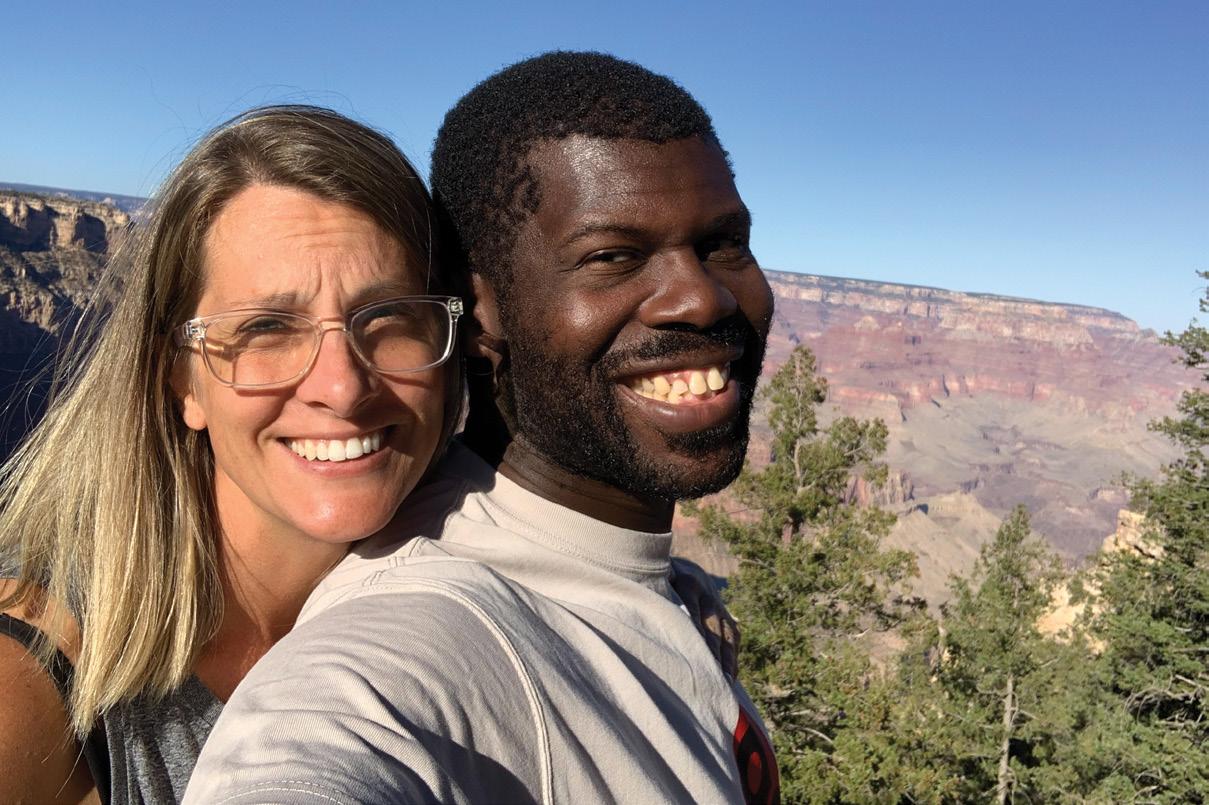
Let me start from the beginning. My wife and I decided to take our five kids and new puppy on the road. We’d tossed around the idea for some time, never landing on any particular path forward, but in January 2020, we made the decision to go. When we shared our plan, many people had strong feelings about the idea—and about a family of seven living in such close quarters.
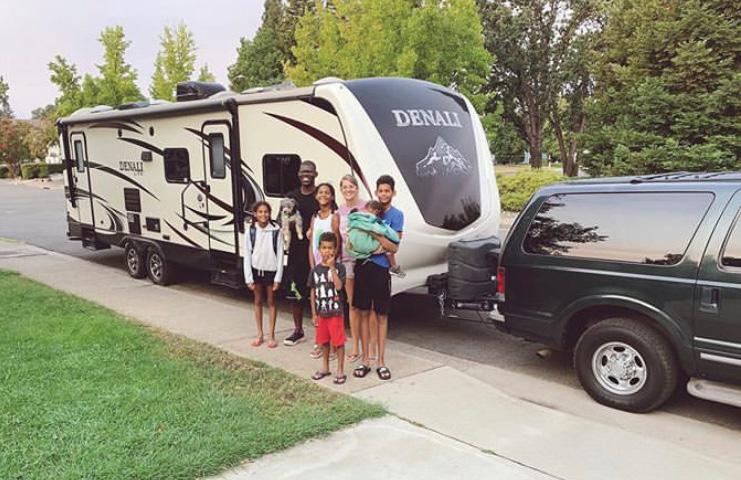
I had a different concern in mind. As I thought practically about the prospect of traveling through what one might call “Trump country,” my anxiety began to rise. There were many things my
white wife could not understand about the exhaustion of being a Black man among all white people in any environment—the privilege, the racism, and the life that would not bend to consider another. I would soon find myself far from Chicago, which I called home, facing the possibility of protecting my family in remote locations and on dark roads. I knew of someone with the same anxieties who purchased a gun to help assuage their fears. I hated guns, so that wasn’t an option for me—I figured what I did need was courage, and my faith provided that
The first stop after we began our journey from Redding, California, a bastion of natural beauty, was Oregon. This state, which became my favorite by far, had a dark history of not allowing Black people to live there in the early 20th century. I had been warned that while Portland was cool, the rest of the state was a crap shoot. I was impressed by the verdant paths and storybook forests that stretched on and on for miles.
My first encounter that stemmed from my race and stature was with a disabled veteran who thought I was lurking near their site in the glorious Champoeg State Park—in reality, I was taking the only path between the parking lot and our 20-yearold Excursion. I chalked it up to the vulnerability that came with them using a wheelchair; it could make someone suspicious of anyone with my stature. These are some of the mental gymnastics that I have to do. I often have to decide whether to give people the benefit of the doubt or consider these sorts of encounters in terms of racism. Ultimately, they’re usually somewhere in between.
I have been thankful for the camaraderie of the RV community, where people go out of their way to help you. This surprised me, especially when I had gotten myself in a pinch by arriving late to Fort Yargo State Park in Georgia. All RVers dread arriving to camp after nightfall, but I found someone kind enough to come out with a giant spot to light the way. Often, the help we needed came right on time, and from people who did not look like me.
As we travelled, hosting creative justice events during a particularly tense time in our country, the spotlight on unjust murders of Black men was growing brighter. Everyone was drawing lines in the sand as a political statement, and many households were divided in regard to their beliefs about the reality of racism. The only proof I needed that it existed was the fear I felt as we moved from liberal California through libertarian Texas, then on to the beauty and recklessness of Florida.
RV TODAY | 57
I was now in a place that seemed to me like a lion’s den. It’s possible I had nothing to be afraid of, but fearfulness was the reality either way. You see, we are a people who have a penchant for the stories and drama that drive history, and that history still informs the soul of this nation. In the middle of a contentious election in the deep South, the emerging narrative made me fear I would be in utter danger. It was that narrative, not reality, that followed me around as fear. I had learned to exist in a white context for some time, and the reckoning with race that was happening rocked me to my core. For the most part, those who surrounded me on the road were oblivious to the danger I felt as a Black man in America.
One incident at an RV park in Yemassee, South Carolina, sort of shook me. The people camped next to us invited us to a bonfire, and I reluctantly accepted. My wife was much more interested in connecting, whereas my strategy on the road had been to avoid close conversations, because maybe then I would be able to avoid uncomfortable interaction with oblivious people and their politics. Unfortunately, that night, it could not be avoided.
I sat for a while and listened to various members of a family brag about the father’s great feats traveling around the country. Then the conversation turned to the state of injustice in the country, and I watched someone only a foot away from me ignore the conversation, which would require empathy and humility to engage. The father carried on with grand tales of his exploits, oblivious to the condition of many who were
suffering. I was convinced many in the country felt this way—if they could avoid the conversation altogether, responsibility could fall on someone else. I stayed for the rest of the fire, then slunk to our trailer.
The next day, I had another encounter with an older white man who was convinced that the Black community had created their own problems from scratch, so the situation was theirs to untangle.
I realized that courage to confront our history was sorely lacking. Many would wash over what was happening, but we did find a few kindred spirits while we were on the road. The rest, it seemed, had fully accepted the bubble of white privilege and inoculated themselves from the pain of admission and accountability.

Once upon a time, I believed there were some white people who could humbly confront their ancestors’ roles in history so we as a nation could move on, but after my family’s journey around the country, I have not yet met anyone humble enough to bear this responsibility. Privilege is a place of safety and comfort, and people are not eager to exit that place on others’ behalf. As our family of seven moved across grassy plains and through lush forests, I was shocked that I did not encounter any hateful moments. What I did find was something much more insidious—a complacent apathy that was alarming and made the prospect of change seem pretty far off. ■
Nathan and his family travels are on Instagram @stanton7wanders

A DYNAMIC FAMILY OF BRAKE CONTROLLERS
Powered by a bluetooth-enabled system and customizable app, Echo provides the most advanced braking experience on the market. This unique controller utilizes your smartphone to control and monitor all trailer brake activity with no need for extra modules, controls, buttons or knobs. Echo is available in three configurations to best fit your lifestyle and vehicle.



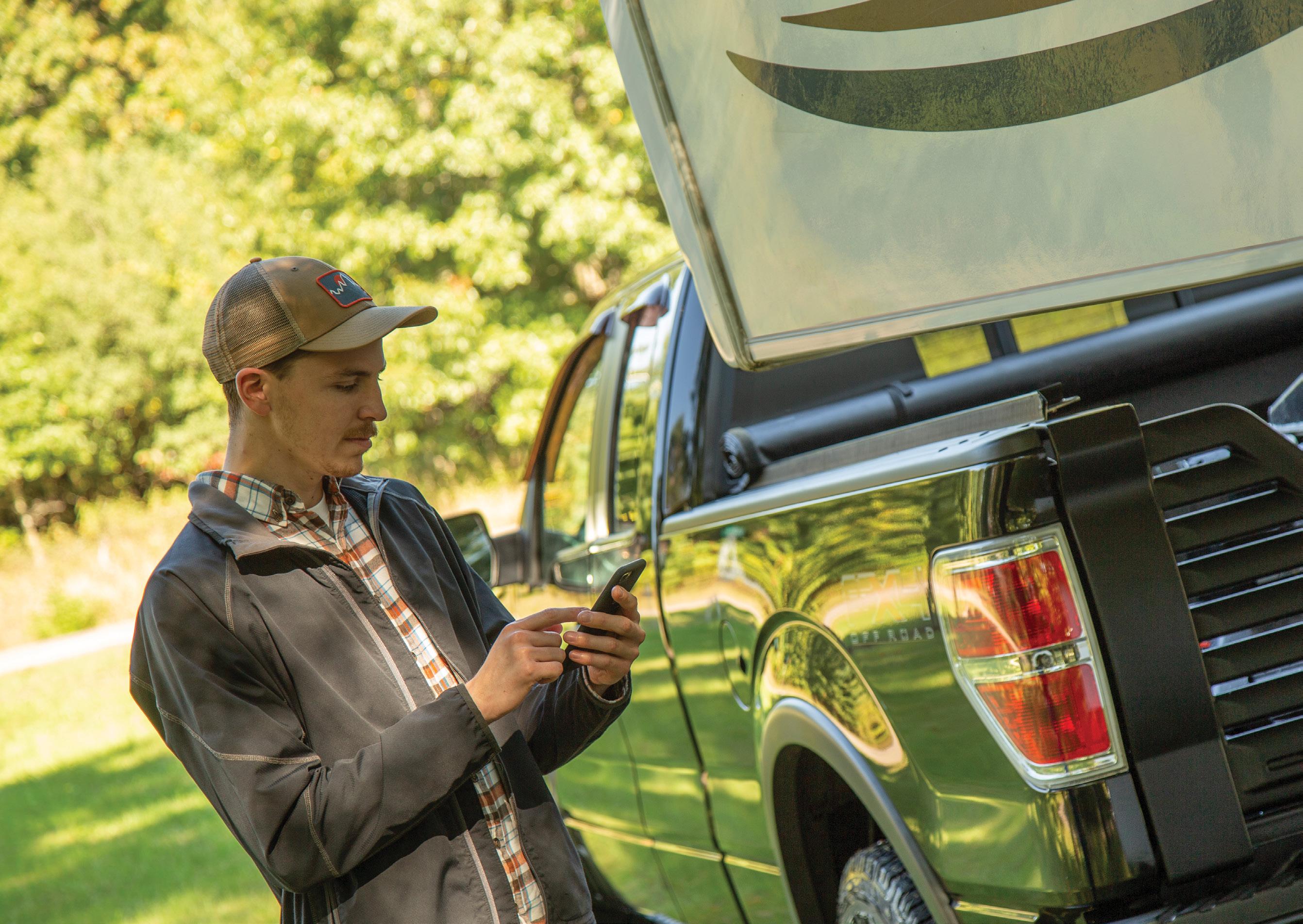
• Zero-tool, plug-and-play install between vehicle-trailer 7-way connectors
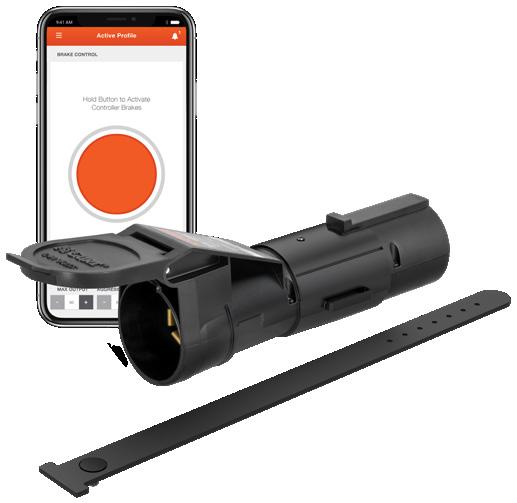

• Simple, dash-mounted installation using included adhesive pad or zip ties
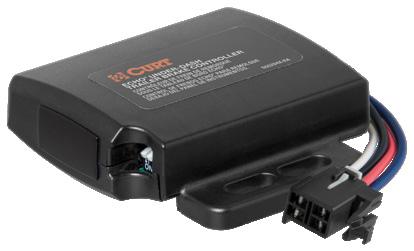
TRUST THE TOWING EXPERTS | curtmfg.com
MOBILE ECHO
ECHO
• Plugs in behind existing 7-way socket with USCAR connectors
ECHO ®
® UNDER-DASH
® IN-LINE
Popular Parks During
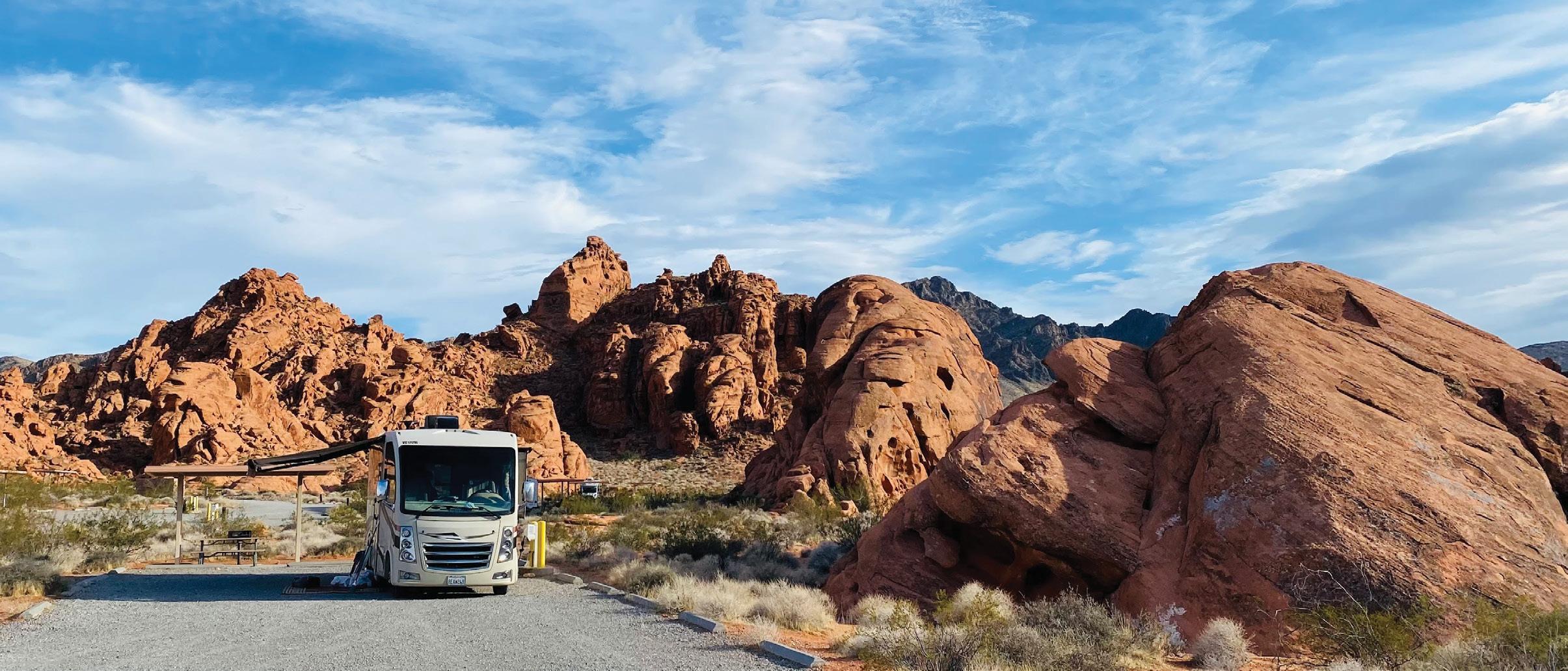
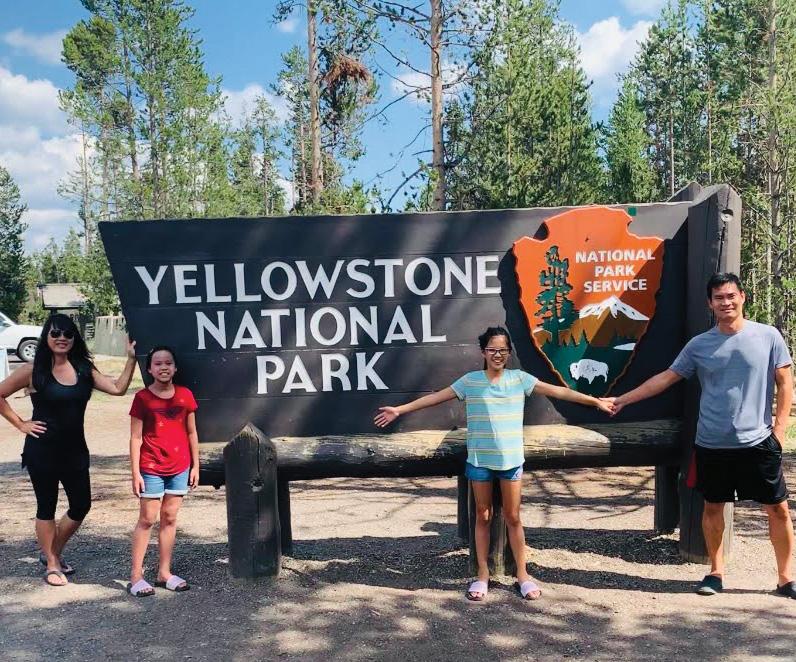
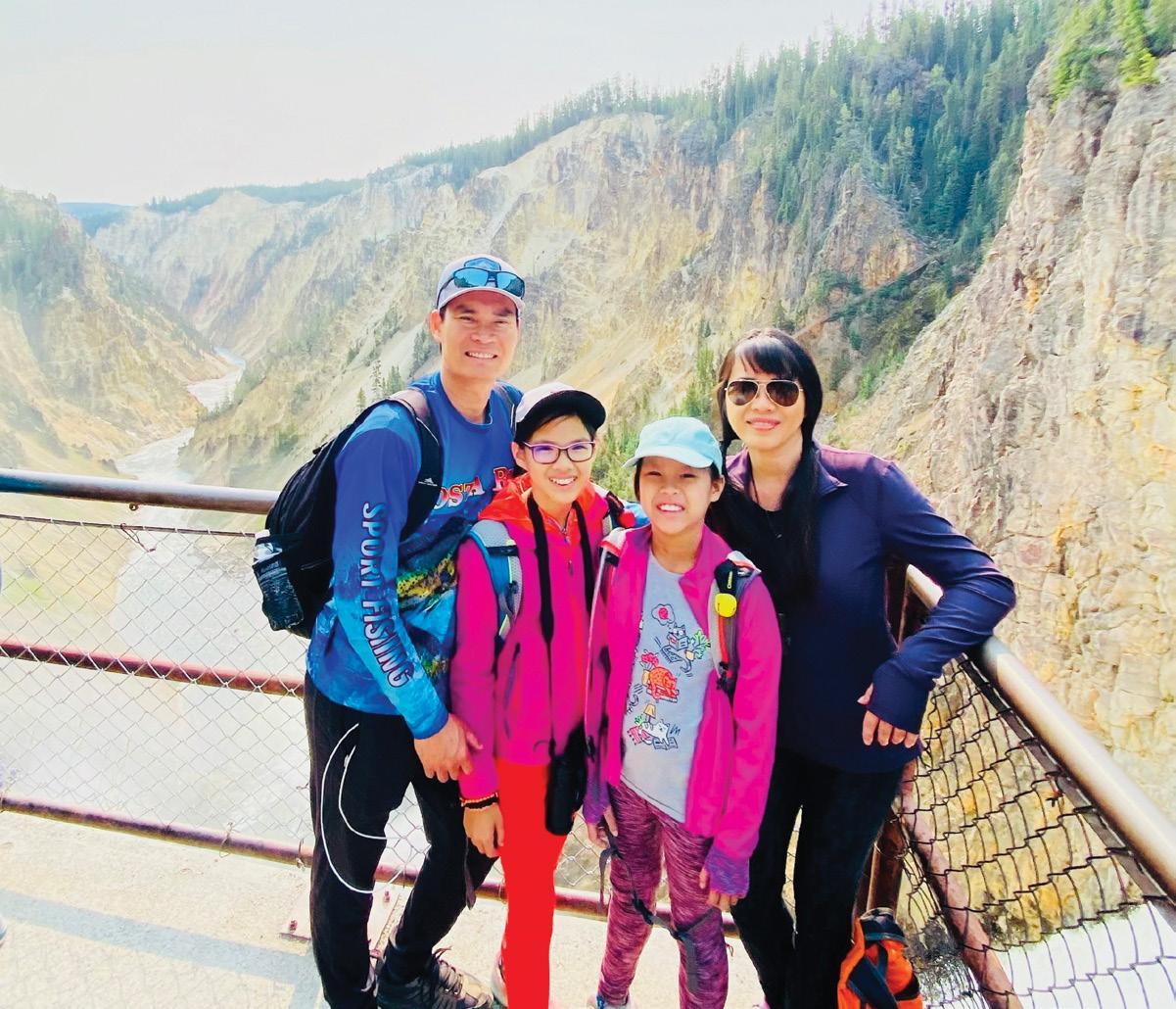
Peak Season
By Brenda Huynh
FOR PLANNING A TRIP TO YELLOWSTONE AND GRAND TETON
SEVEN TIPS
Our family of four started our RV adventure five years ago with the goal of visiting as many national parks as possible. The Thor Motor Coach Vegas Class A RUV was perfect, with its massive windshield to take in the beautiful landscapes, roomy interior for comfort, and compact design to drive inside parks. So far we’ve visited Yosemite, Sequoia, Grand Canyon, Zion, Death Valley, Yellowstone, and Grand Teton national parks.
We also lead a Facebook group for Asian RVers where we share our passion for the outdoors with others, provide advice and tips, post our trips for inspiration, and host meetups.
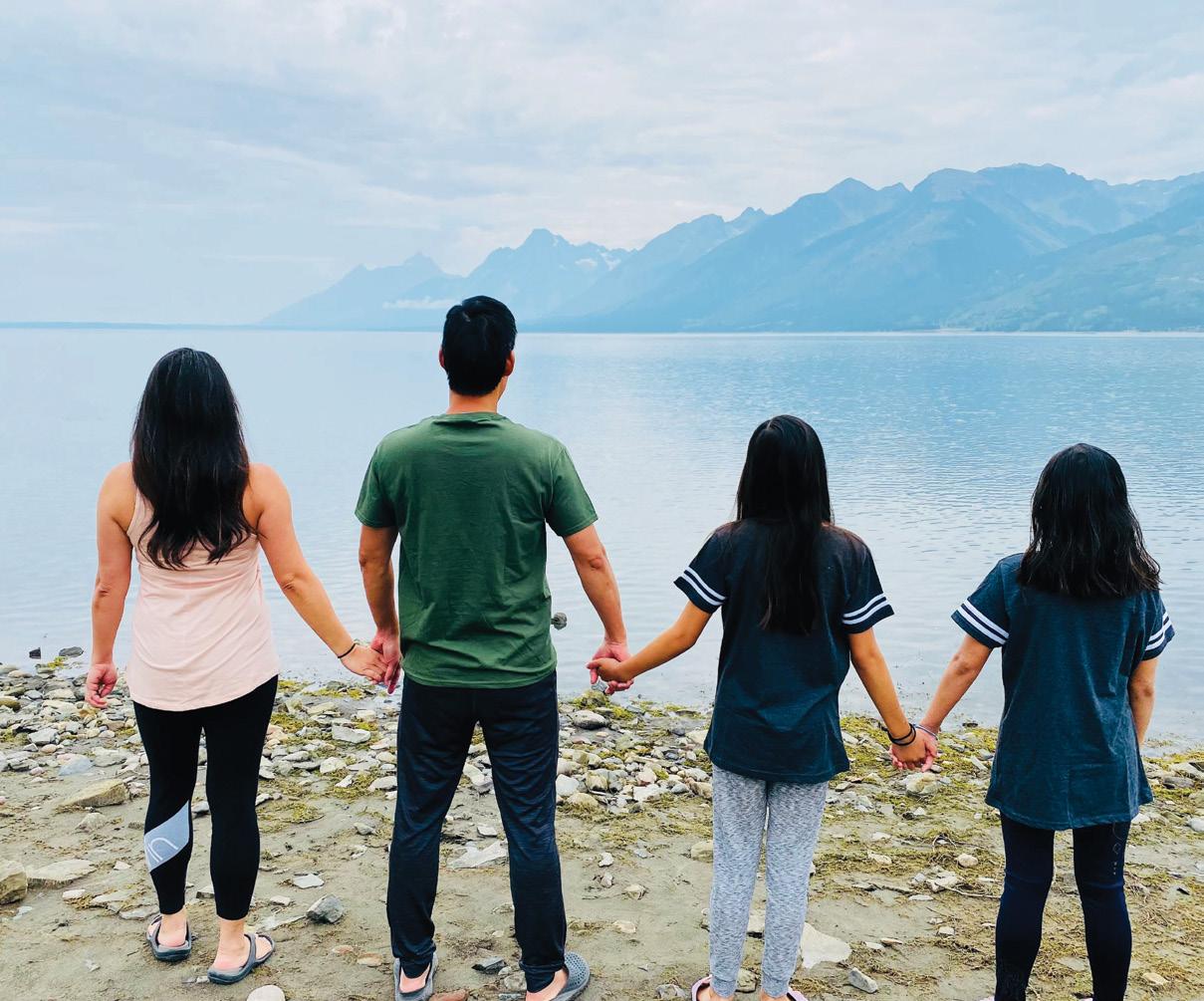
Since the beginning of COVID, we’ve seen a spike in new and inexperienced RVers who need help, and we realized we’ve developed a specific expertise that only years of experience and a passion for the outdoors and RVing could provide.

In the summer of 2021, we experienced one of our most adventurous and complex trips, to Yellowstone and Grand Teton national parks. It spanned 14 days, 2,400 miles, and 45 hours of driving, and took us through six states, seven campgrounds, two national parks, and one state park. This adventure gave us incredible insight into how to make travel work in an RV over long distances during the pandemic
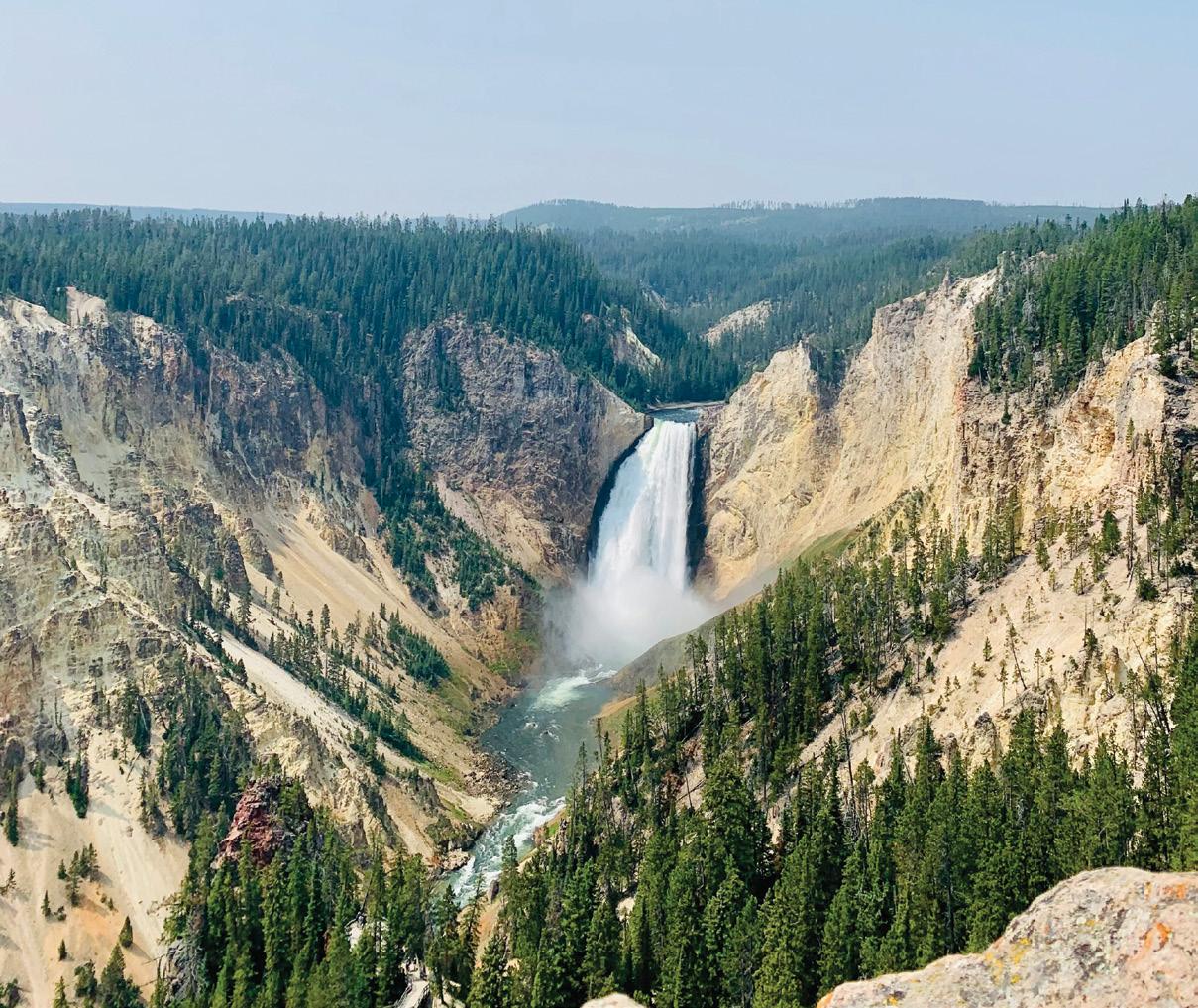
RV TODAY | 61
The following tips are what made our travels enjoyable and comfortable, despite being at the largest and busiest national parks.



1 RESEARCH, PLAN, PREP, AND BOOK CAMPGROUNDS IN ADVANCE
Book campgrounds inside the park about nine to 12 months in advance, because they are in high demand in the summertime. To avoid traffic and the daily long lines at the entrances, stay inside the park instead of leaving the RV at the campground and renting a car. Driving our 25-foot RV was the best decision because it allowed us to have bathroom and kitchen access any time, so we could avoid the limited food options and long lines. There is little to no cell signal inside many national parks, so it’s always best to plan out your trip and print maps and itineraries ahead of time.
2 START YOUR DAY EARLY
Every day, we woke at sunrise, made coffee, and started driving to our destination. Once we found a good RV parking spot, we got ready for the day, made breakfast, and woke the kids. This allowed the kids to get more sleep while avoiding the mad rush for parking. One of the kids’ favorite parts of the trip was waking at a different destination each morning—it was such an exciting surprise for them! Our early daily routine guaranteed us the best parking. As long as we arrived before 8 a.m., we were able to enjoy our destination and accomplish a fair amount, all while avoiding the hectic crowds and blazing sun.
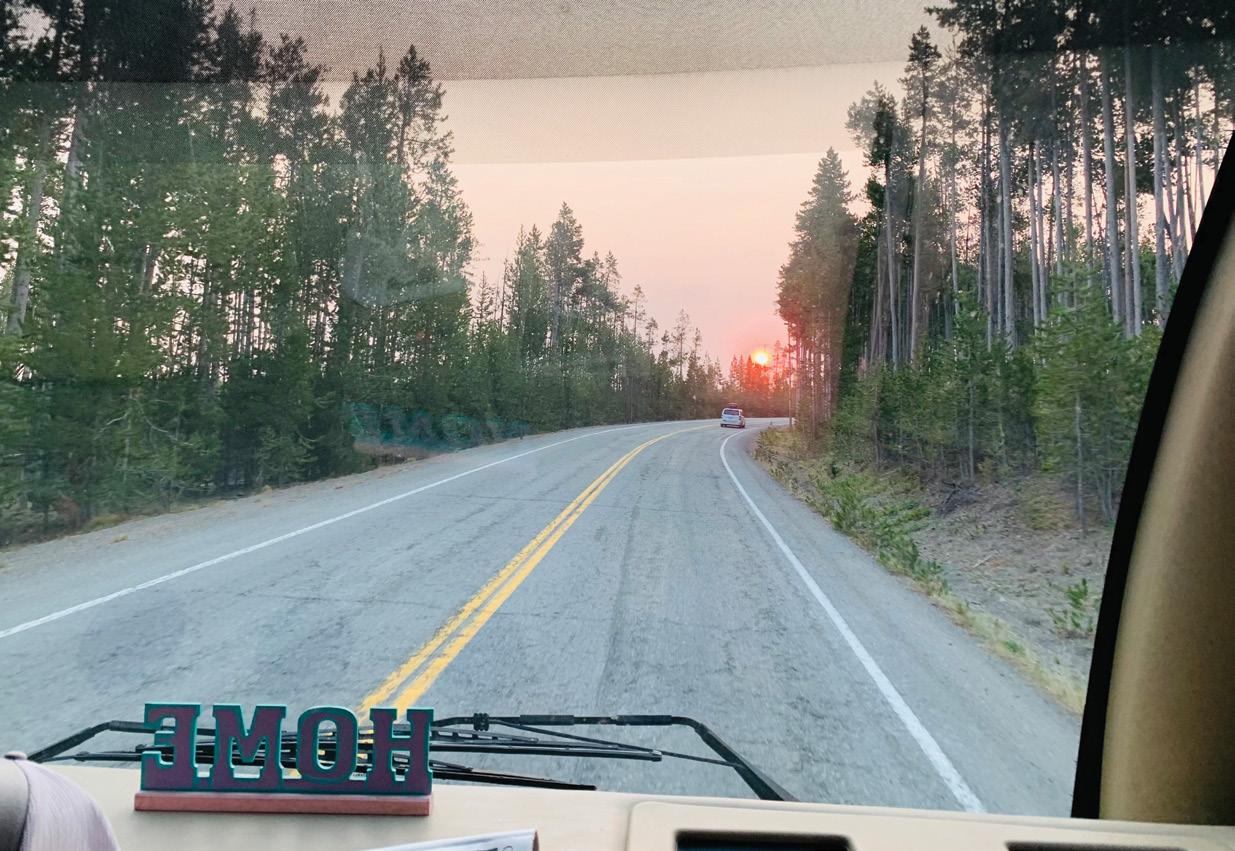
3 YELLOWSTONE IS LIKE A FIGURE EIGHT
There is so much to see and do in Yellowstone, but if you keep the layout in mind, you can plan accordingly. It’s especially key to book your campgrounds in an area where you can visit all the popular attractions efficiently. All campgrounds inside Yellowstone are dry camping, and Canyon and Grant have laundry. We checked in at Madison, then hung out at the scenic Madison River. On our first full day, we visited Old Faithful and saw all the geysers and hot springs in the morning—and the visitor’s center even posts the estimated time the geysers will be active. Beyond that, we biked from geyser to geyser where bikes were allowed. We visited the very popular Grand Prismatic in the afternoon—we suggest the Grand Prismatic overlook hike.
4 TAKE IN THE NATURAL BEAUTY
We’re honestly amazed at how much gorgeous scenery we were able to take in during this trip. We visited the Mammoth Hot Springs to walk the travertine pools and cascades, then drove across to Lamar Valley for wildlife viewing. It was incredible to see thousands of bison in their natural habitat! At the Grand Canyon of the Yellowstone, we hiked Crystal Falls and Lower Falls. Before checking into Canyon campground, we drove to Canyon Corral to book horseback riding for the afternoon. The horseback riding excursion allowed us to ride through the pristine backcountry of Yellowstone, and it was absolutely stunning! Closed-toe shoes are required, and no cameras or phones are allowed in order
62 | RVTODAY.COM
to ensure the safety of both you and the horses. The next day, we visited Grand View, Inspiration Point, and Upper Falls at the Grand Canyon of the Yellowstone. We experienced the most magical time in Hayden Valley, when a huge bison sauntered past our RV. There we found an area to park the RV, took out our chairs, and ate ice cream while enjoying the beautiful and peaceful scenery.
5 BE FLEXIBLE
Unfortunately, when we got to Grand Teton, there were several massive wildfires in northern California and Idaho covering the area in ash and smoke. We had rented kayaks at Jackson Lake in Colter Bay and were looking forward to seeing the Teton Range in all its glory, but it was not meant to be on this trip. We even tried our luck again on our last day to see if the smoke and ash had cleared enough to see the range, but it wasn’t any better. However, we did get to see our first grizzly bear, which crossed the road right in front of us! Then on our way home, we stopped by Valley of Fire State Park in Nevada for a night, where we were able to see the elusive bighorn sheep! Being flexible ended up paying off in two ways for us.

6 USE THE PARK RANGERS AND THE FREE NATIONAL PARK BROCHURES
We were fortunate to be able to see black and grizzly bears, wolves, bison, moose, elk, deer, pronghorns, and bighorn sheep in their habitats on this epic trip. It’s helpful to put the


rangers’ vast knowledge of the park to use. We asked them where and when was a good time to observe wildlife and they were happy to help. We also found the free information brochures and newsletters at the visitor’s centers to be very helpful. Another thing we’ve learned is you’re likely to witness amazing wildlife if you stay near any folks you see with binoculars. With a bit of luck, patience, and planning, I hope you’ll have the opportunity to see this spectacular wildlife in Yellowstone and Grand Teton, too.
7 EXPECT THE UNEXPECTED
We encountered some unfortunate circumstances on this trip. First, our windshield wipers broke while driving through Las Vegas and Salt Lake City, then we drove through two days of lightning and thunderstorms before we could find Rain-X spray. After spraying the solution onto the windshield, the water rolled right off. Then there was a shortage of ice throughout the park, as well as very limited fresh fruits and vegetables. Lastly, as we were leaving Grand Teton and entering Jackson Hole, a small rock hit our windshield. We quickly found a shop that fixed it before it became a bigger problem. Our advice to RV adventurers is to remain calm, be resourceful, and work as a team so that incidents like these don’t derail or ruin your trip. ■
Brenda and her family’s travels are on Instagram @rv_lifestyle_asianfamily

RV & TRAILER
Travel and life on the road can offer challenges when it comes to technology. Sourcing power, ensuring connectivity, and maintaining safety can be tricky, but with the right gadgets, you can drive and camp happily!
WAYS TO BE PREPARED
1
Changes in temperature and altitude can affect tire pressure. A tire pressure monitor helps you monitor pressure easily, making you safer and increasing your fuel economy. A bonus with this monitor—you can receive information on tire temperature and warnings for air leaks.
2
Regardless of the amount of tires you have, air compressors allow you to maintain accurate tire pressure. Portable ones make it more convenient so you don’t have to pull your rig up to gas station air compressors, and also mean you won’t have to pay for air anymore!

3
Be safe, not sorry—if your engine battery dies, now you can easily jump-start it. You can be the hero, too, and rescue fellow RVers if they have trouble!

WAYS TO BE SAFE
4. E LECTRICAL MANAGEMENT SYSTEM
Don’t risk an accident plugging into shore power— this EMS is similar to surge protectors in houses, but instead it protects your RV’s electrical system. This specific one is 30 amps, but there is also a 50-amp version.


5. PET MONITORING SYSTEM
Equipped with a temperature and humidity monitor, this system can send an alert to your smartphone if conditions are not ideal for your furry loved ones left in your RV. Additional features include HD video and a treat dispenser.

HIGH-TECH GEAR
. TIRE PRESSURE MONITOR
. P ORTABLE AIR COMPRESSOR
. BATTERY BOOSTER PACK
1. 2 . 3.
Accessories
WAYS TO BE MORE EFFICIENT
6.
Our readers pointed out this suggestion! Whether your home on wheels is big or small, walkie talkies cut down on yelling back and forth while trying to finagle your RV into or out of a parking spot. Make conversations— and the job—easy!
7.
Get rid of headaches with this high-tech gear! While some RVs come equipped with backup cameras, others don’t, so having this mounted onto a dash or windshield is a huge help.
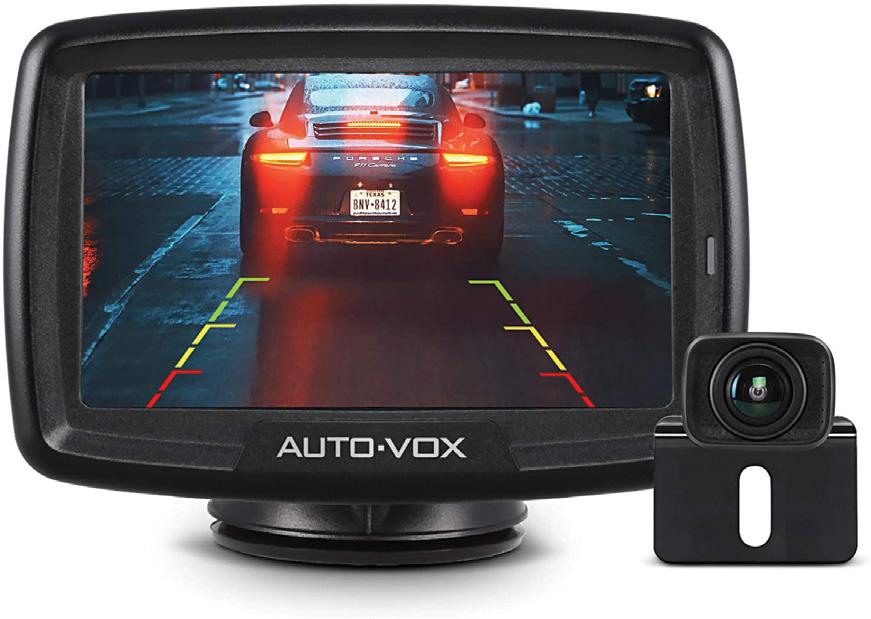
8.
Get your internet service directly without having to use a Wi-Fi booster. Starlink’s satellites keep you connected so you can have high-speed Internet in spots that have been unreliable or unavailable before.
9.
Just as it sounds, this gadget boosts cell signals. This means whether calls are for catching up with friends and family, work, or emergencies, cell signals are amplified so those no-service spots and dropped-call locations are a thing of the past.



WAYS TO HAVE FUN
10.
Add a bit of flair to your final destination with a mini projector. Nothing says “fun” like camping next to a fire and watching movies with your family!
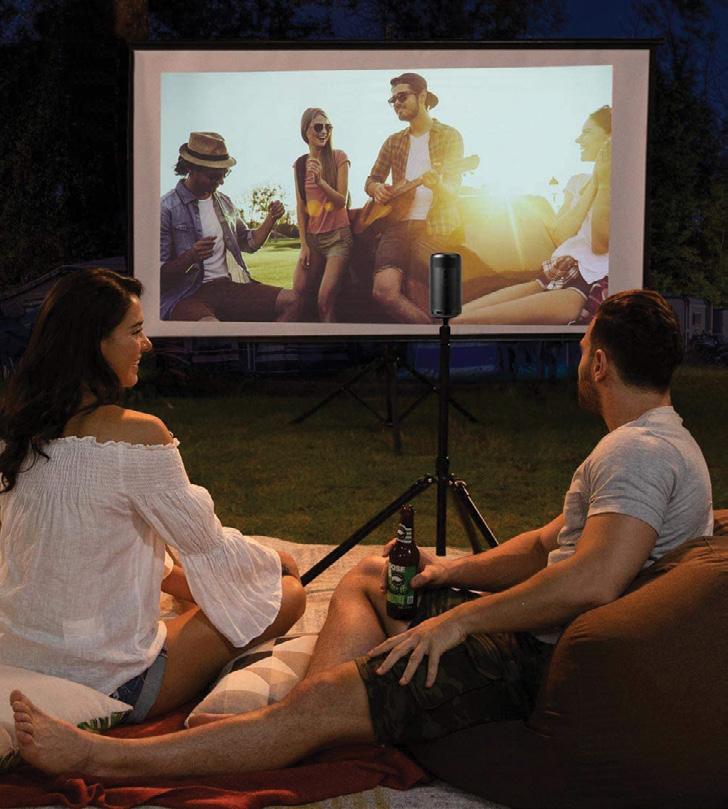
Do you have high-tech accessories you feel are a must when RVing? Let our readers know what products they should consider! Send us an email at collab@rvtoday.com.
 M INI PROJECTOR
WALKIE TALKIES
BACKUP CAMERA
STARLINK
CELL SIGNAL BOOSTER
M INI PROJECTOR
WALKIE TALKIES
BACKUP CAMERA
STARLINK
CELL SIGNAL BOOSTER
RV TODAY | 65
Expandable Solar

System tiers for all budgets

Custom fabrication for desired system intergration
LIFESTYLE.

POWER. BUDGET. SOLUTION.
When we see a problem, we don’t just find a solution; we help make changes in the industry you’ve been waiting on that make your journey easier every single day. The products our team uses are the most innovative products on the market and we take the time to learn them inside and out so you don’t have to. With over 35 years of industry expertise, our team can design, fabricate, and install the Solar and Lithium system that’s fits your rig perfectly to make your battery life bigger.
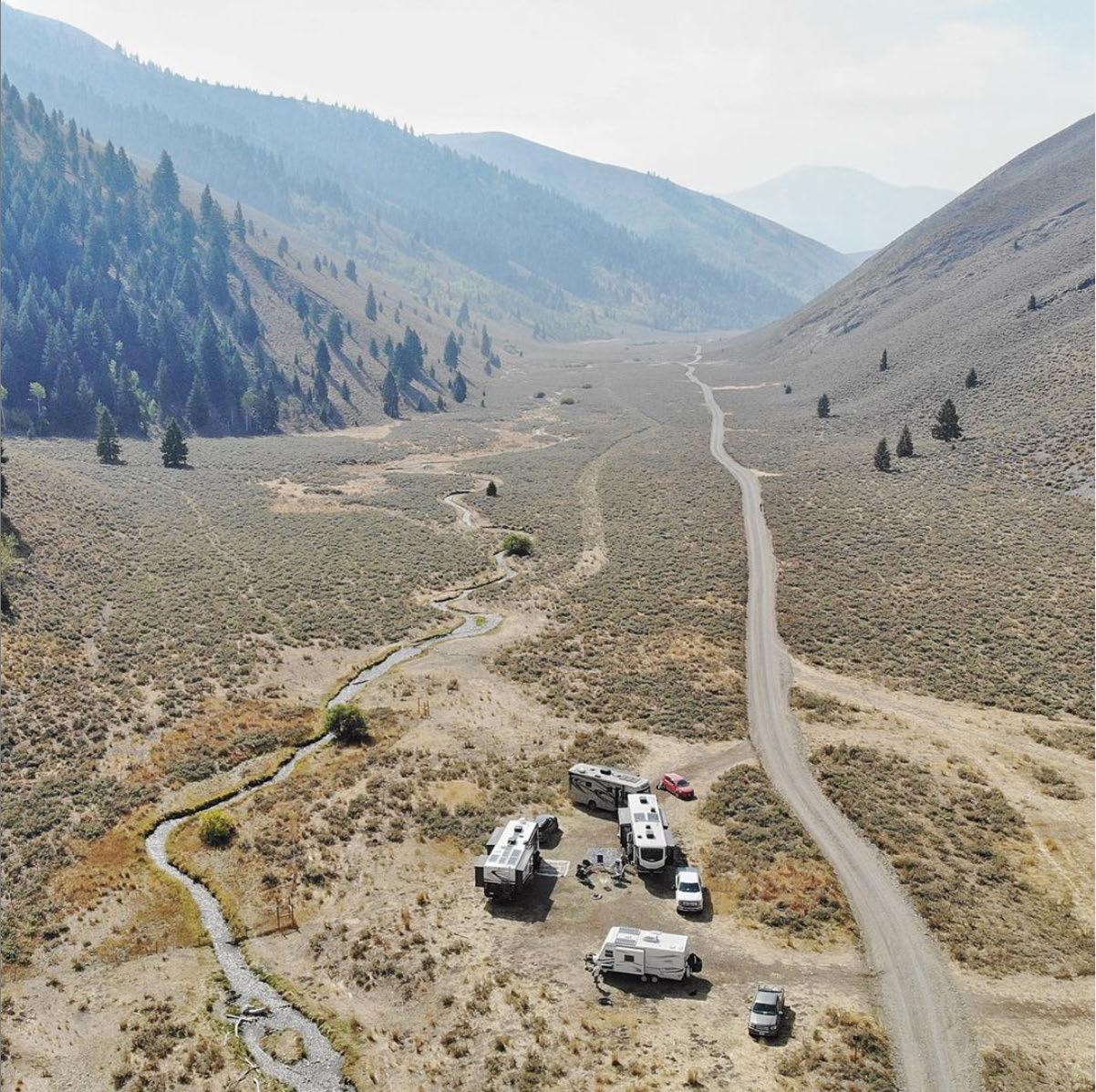
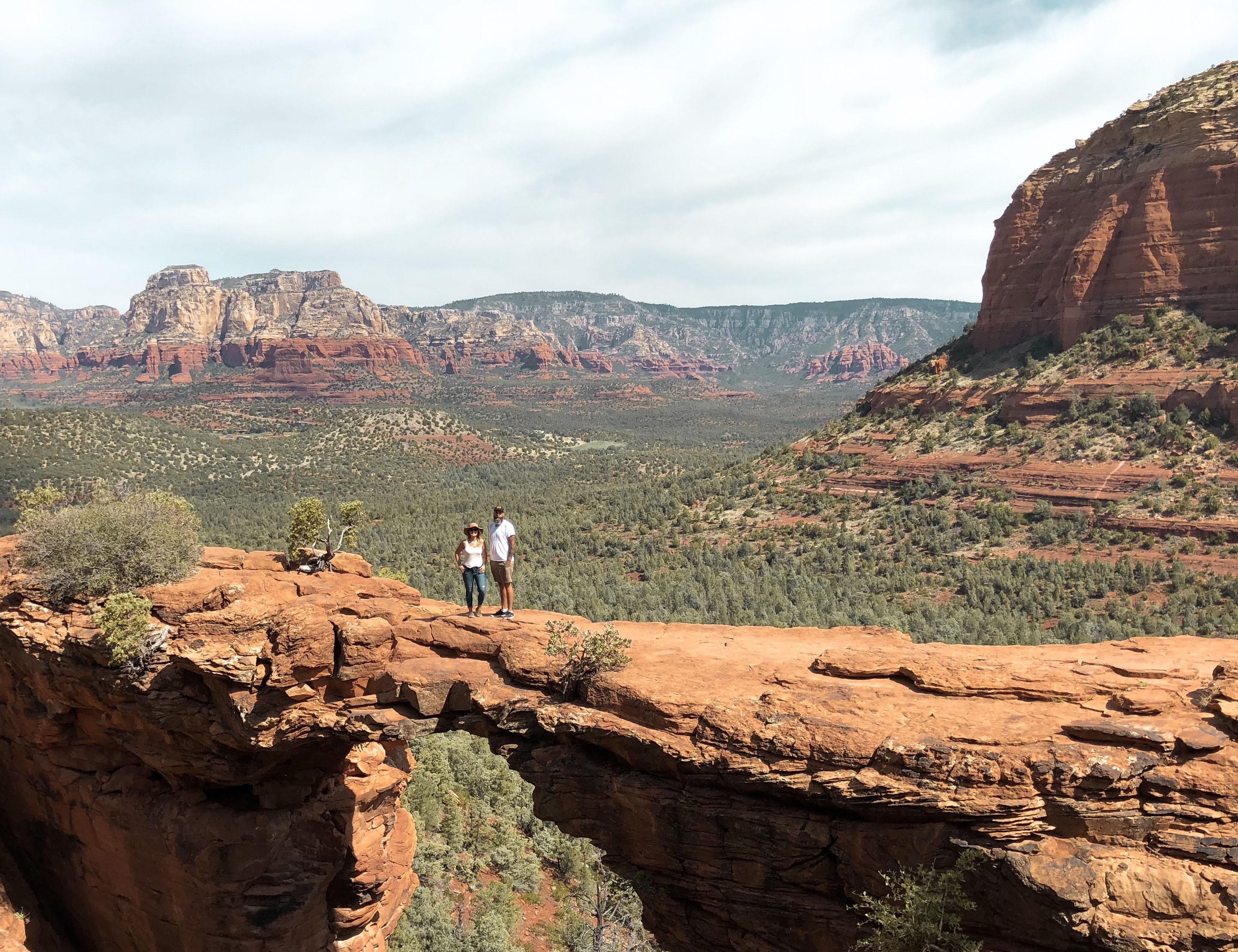
TIPS for RVing in
By Marco
We are Marco from the Philippines and Fran from Argentina. We’ve been traveling the world full time since 2018, trying different travel lifestyles, and in 2020, we decided to pursue our dream of living the RV life. We bought a 1985 Toyota RV, renovated it, explored the United States, and then

decided to travel to Mexico. Mexico doesn’t have a great reputation in the United States, and so many people told us not to cross from the U.S. to Mexico that we went from being excited to nervous about the idea. Spoiler alert—we still went, and we had the most amazing six months RVing mountains,
 Ilagan and Francina Cassaniti
Ilagan and Francina Cassaniti
deserts, beaches, jungles, waterfalls, historic colonial cities, Mayan ruins, and more. In the end, we felt far from unsafe.
Rather than letting our fears stop us from exploring a beautiful country, we channeled those fears in order to get really prepared for the trip. In this article, we would love to share 10 tips we learned during our six months in Mexico so you can also be prepared and enjoy your trip.
Have your paperwork ready before you cross the border.
You’ll need the TIP (Temporary Import Permit), FMM (Mexican Tourist Card), and Mexican insurance, all of which you can get online ahead of time. Be sure to include roadside assistance with your Mexican insurance. Bring photocopies of each document, as well as your passport, driver’s license, vehicle forms, and anything else you can think of, because they’ll want to keep a copy, and they don’t have a copier.
Bring cash and a credit card.
■ Get some Mexican pesos before crossing the border, because you’ll need them as soon as you cross, especially for tolls and some gas stations.
■ We also highly recommend getting at least one credit card without foreign transaction fees. This is a good rule for any international travel.
Buy a local SIM card as soon as you cross the border.
You can easily buy them in any convenience store or gas station. The most popular one is called “OXXO,” which is like the 7-Eleven of Mexico. It is helpful and at times necessary to have cellular data—ours came in handy when one of our tires blew only 40 minutes after crossing the border from the U.S. to Mexico. We were glad we already bought a local SIM card, so we were able to call the insurance company and research the nearest tire shop.
Keep your FMM (Mexican Tourist Card) with you in a secure place.
It’s a small piece of paper, but it’s very important. You will be required to show it when you exit Mexico. We know friends who lost theirs, and they had to pay a penalty.
It’s safe to drive your RV in Mexico, but…


■ Be sure to keep those copies of your paperwork. We were stopped by the police five times, and they sometimes take the documents, so give them a copy and keep the originals.
■ Don’t drive at night—not because of robbery, but because of road conditions and animals. It’s very hard to see potholes and speed bumps (which are called topes) at night, especially on local routes (called libre).
■ Take the highways (or quotas). The tolls can get expensive, but they’re worth it because the roads are in better condition.
■ Ask Facebook groups and locals about road conditions, as Google Maps doesn’t always provide the best information. This is especially important through long stretches of mountains.
■ Download offline Google Maps for every place you’re going so you can access maps without cellular data. There are some iconic places in Mexico, such as Tamul Waterfalls, where there is no cellular data, so it’s good to have the maps available. We recommend this no matter where you’re traveling.
■ Bring spare parts! This is a general tip for RVing. Our drive belt broke, but we were able to replace it right away because we had a spare. There are long stretches of highway and deserted areas in some parts of Mexico, so spare parts can really come in handy.
68 | RVTODAY.COM
Upgrade your suspension!
People say Mexico is called “Topeland” because there are more topes than people. These speed bumps are often not properly painted or marked, and they can damage your suspension and undercarriage if you don’t see them coming. It happened to us while we were there—we hit a speed bump, which led to the muffler hitting one of the tires, causing the tire to blow!
Water tank tips.
■ The water from the tap is not drinkable, so we strongly recommend separating your drinking water from the fresh water tank. We found that refilling our water tank was actually easier and cheaper in Mexico than in the U.S. because you can easily refill the fresh water tank at gasoline stations for free. Again though, this will serve as a source of water for washing dishes and showering, not drinking.
■ For drinking water, bring five one-gallon bottles that you can easily refill at the agua purificada stations. You can find the stations via the iOverlander app or by asking locals.
What about dumping?
Mexico is not as prepared for RVs as the U.S. is, so there aren’t many well-equipped campgrounds. Here are your options:


■ Use iOverlander to find the few campgrounds that have dumping stations.
■ Ask locals—they showed us where to go.
■ Equip your vehicle with a compost toilet.
Boondocking is best!
You will be able to boondock in front of waterfalls, rivers, the ocean—you name it! The iOverlander app will help you find the best spots. In the six months we traveled around Mexico, we only went to an RV campground six times. We felt very safe boondocking, and we were amazed at the wonderful places we were able to park. To make the most of boondocking, be sure to:

■ Arrive at your destination before sunset. This allows you to get a feel for the area where you’re parking.
■ Don’t leave belongings outside your RV. We forgot our flip flops outside and they were gone the next morning. We can say with confidence that the vast majority of Mexicans are law-abiding, family-oriented people who are eager to help, but there are exceptions.
Join Facebook groups.
There is a great community of RVers willing to help each other by sharing their experiences in Mexico. Joining certain Facebook groups can add value to your experience and make your journey easier. Here are our three favorites. (Two have almost identical names, but they can be found easily!)
■ On the Road in Mexico
■ RV’ing in Mexico
■ On the Road in México
When you think Mexico can’t get any better, it surprises you! We believe Mexico is a country all RVers should experience—not just because of the wonderful boondocking spots or the inexpensive and tasty food, but also because you will get to meet the warmest and friendliest people. Viva México, and have a wonderful time! ■
Marco and Francina share their adventure on Instagram @maptheunknown
Exploring
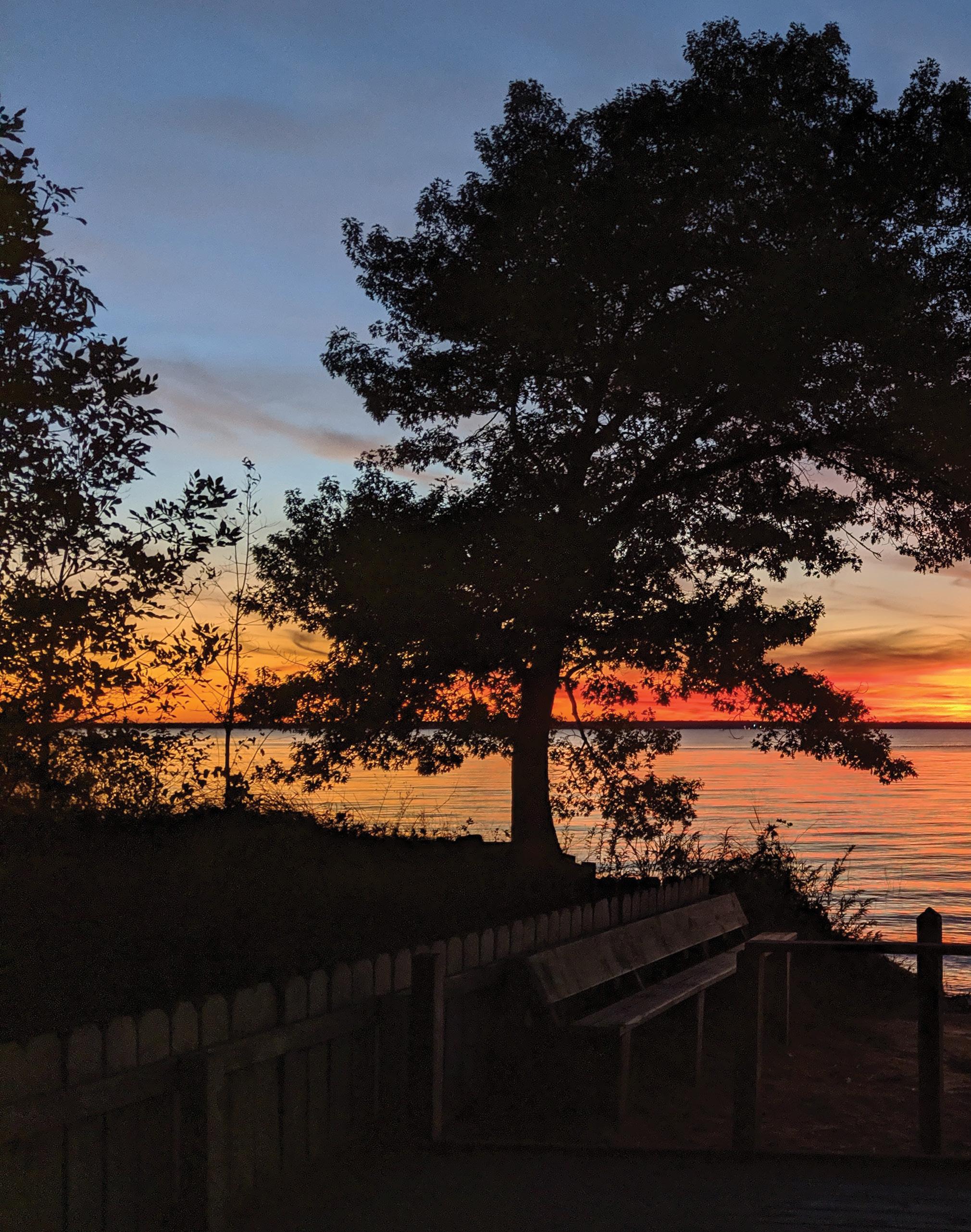
Tawas Point State Park
Michigan
103 MICHIGAN STATE PARKS IN 10 MONTHS
 By Ari Adler
By Ari Adler
RV TODAY | 71
Visiting all 103 state parks in Michigan might seem like a good bucket list item to check off over a few years, but we managed to knock it out in just 10 months
Back in 2018, we learned that the next year would be the 100th anniversary of the creation of the Michigan State Park system, and the Department of Natural Resources was going to celebrate all year long.
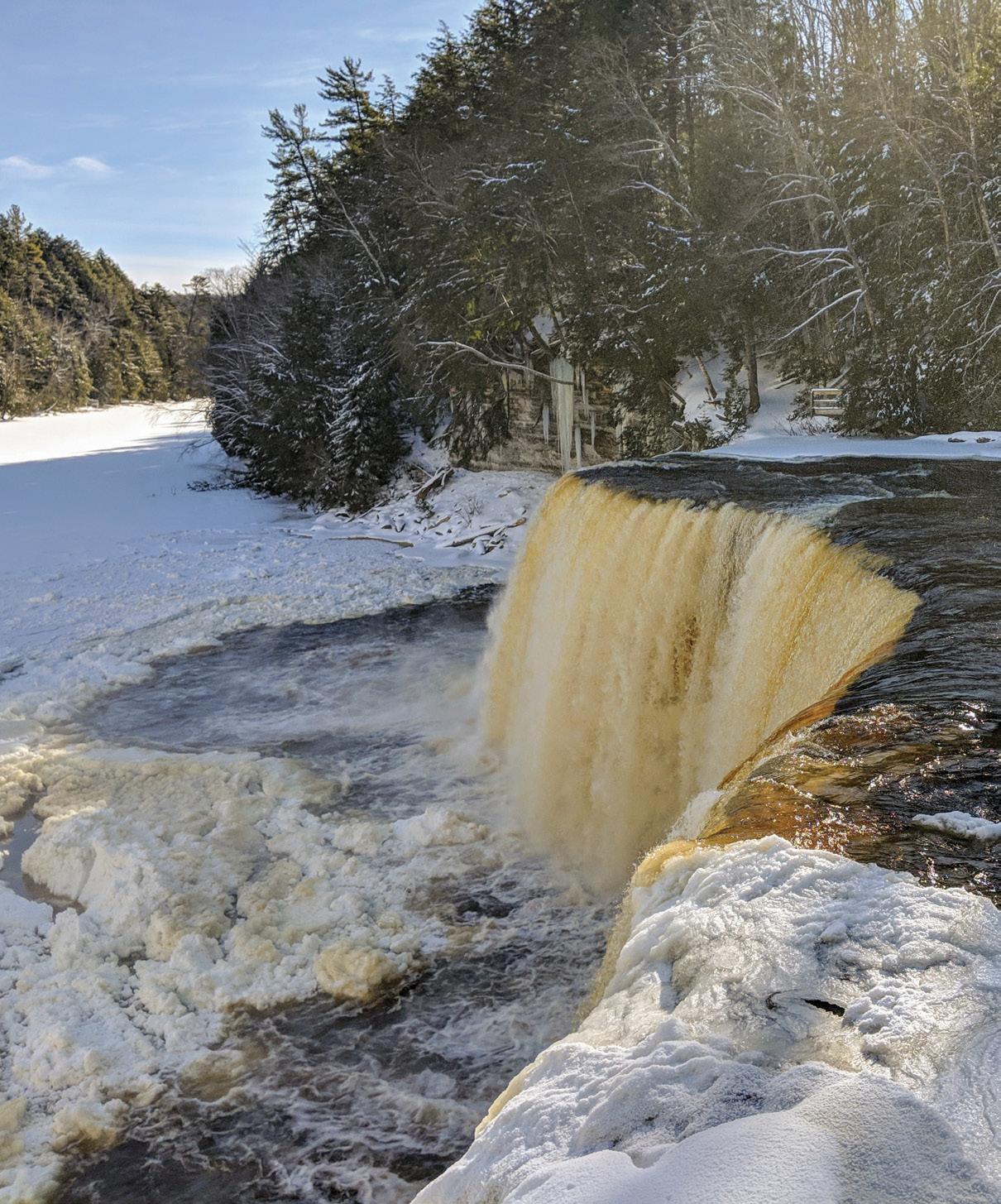
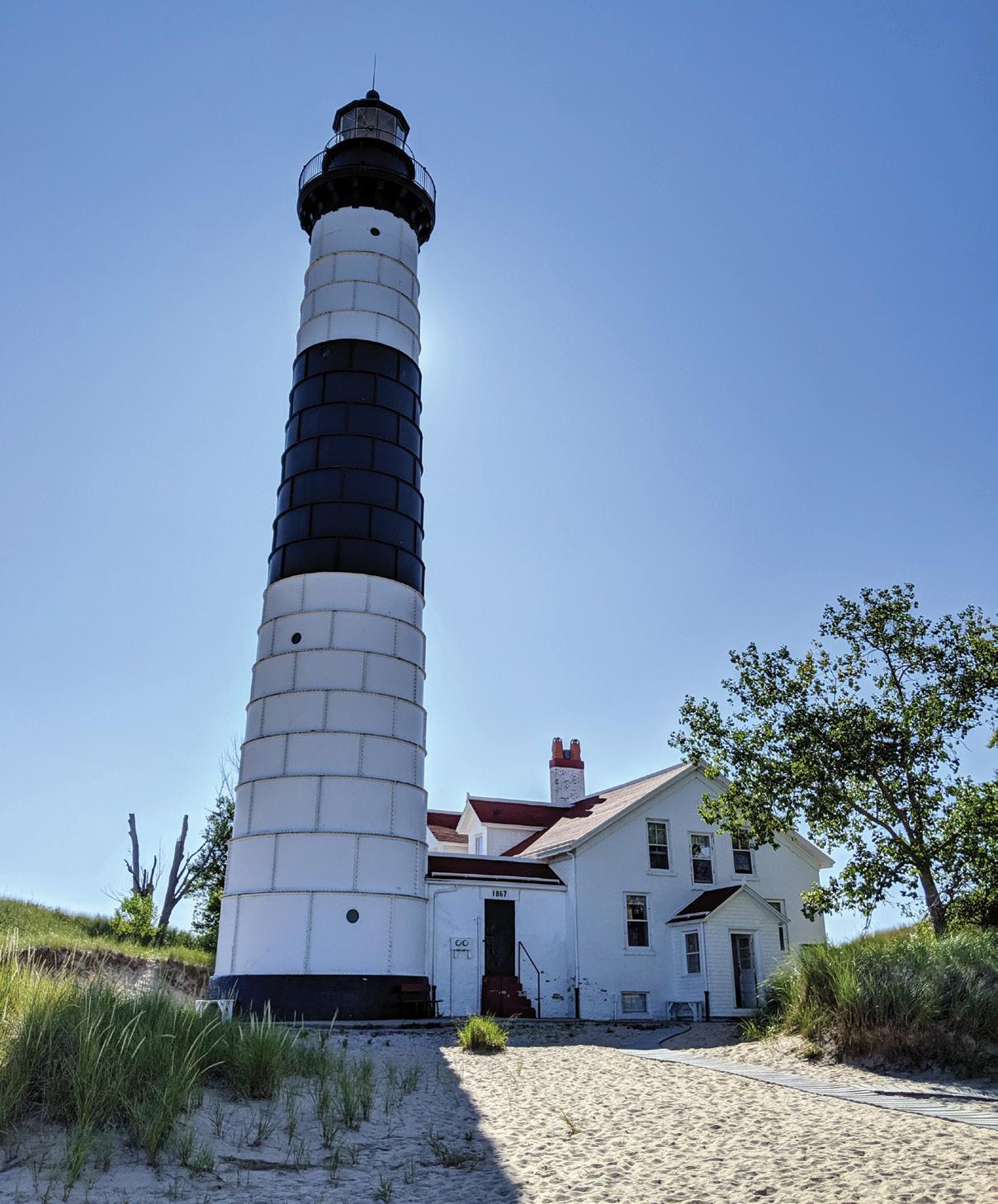
We decided to pursue what seemed like a crazy idea—visit every state park during 2019 and document our visits to share. We knew it would be a lot of work, but we also expected to have a lot of fun.
While planning for this adventure, we intended to work from the road and travel full time throughout the whole year, but unfortunately, Jessi was not able to transition to remote work at the time. So instead, starting in January of 2019, we spent nearly every weekend crisscrossing the state in our Class B RV, a 2008 Roadtrek 190 Popular 4x4. We would head out from our house near Lansing on Fridays after work and often didn’t return until late Sunday night. We took two weeks off in September to travel the entire Upper Peninsula, and sprinkled a few three-day weekends throughout the year.
By October, we had visited the 103rd park on our list!
About 75 percent of Michigan’s state parks offer camping, and we stayed at as many as we could. Sometimes we camped at one park while visiting a few others in the area in the same weekend in order to fit them all in. The busiest time was when we visited the parks in Southeast Michigan—many of them are really close together, so we once ended up visiting five parks in a single day!
Since we were moving so quickly, we ended up with several bloopers on video where one of us says the name of the wrong park or stops to ask which park we’re in. If we hadn’t had such an abbreviated goal, we definitely would have spent more time at many of the parks, because each one offers something unique.
Shooting and editing the videos meant we also needed to do a lot of research. Jessi worked hard to research the history of the parks, and it helped us connect with each place because we knew why it existed or what had happened there in the past.
For example, our research helped us discover petroglyphs in Michigan, something we had no idea were there until we learned about Sanilac Petroglyphs Historic State Park.
At the Meridian-Baseline State Park, there is a surveying medallion that marks the point from which all land surveys in Michigan originate. That’s important because every property description within the state is referenced starting from that point.
Did you know a lot of state park property in Michigan remains undeveloped because it once belonged to lumber barons or auto magnates? For example, there are 2,400 acres of woods for people to enjoy in one of the most heavilydeveloped counties in Southeast Michigan because it used to be the weekend estate of Edsel Ford.
In Northern Michigan, there are old-growth forests we can still enjoy today because, ironically, they were preserved by lumber barons whose companies didn’t harvest them in the 1800s.
Big Sable Point Lighthouse
Tahquamenon Falls State Park
We enjoyed talking with and learning from locals— especially the camp hosts. They provided outstanding tips on lesser-known sights to see, including great hiking trails near beautiful rivers, awesome waterfalls, and many lighthouses.

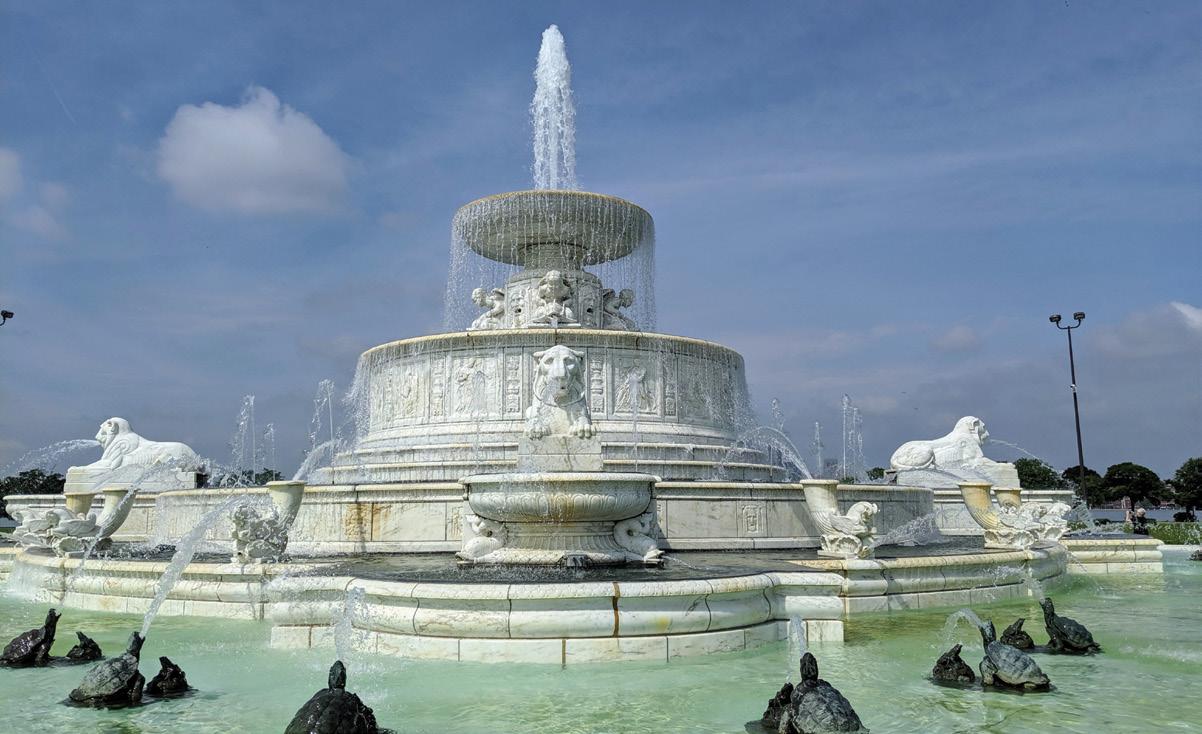
They also knew where to find the best treats! At some point during the year, I started joking that it was more of an ice cream tour than a state park tour because of our frequent stops to local ice cream shops.
Bucket list travel is often a motivation for folks with RVs, but keep in mind that those lists don’t always have to involve trips across the country. We’ve always said how nice it is to be a tourist in our own backyard. This project helped us see how fascinating and fulfilling it can be as well.
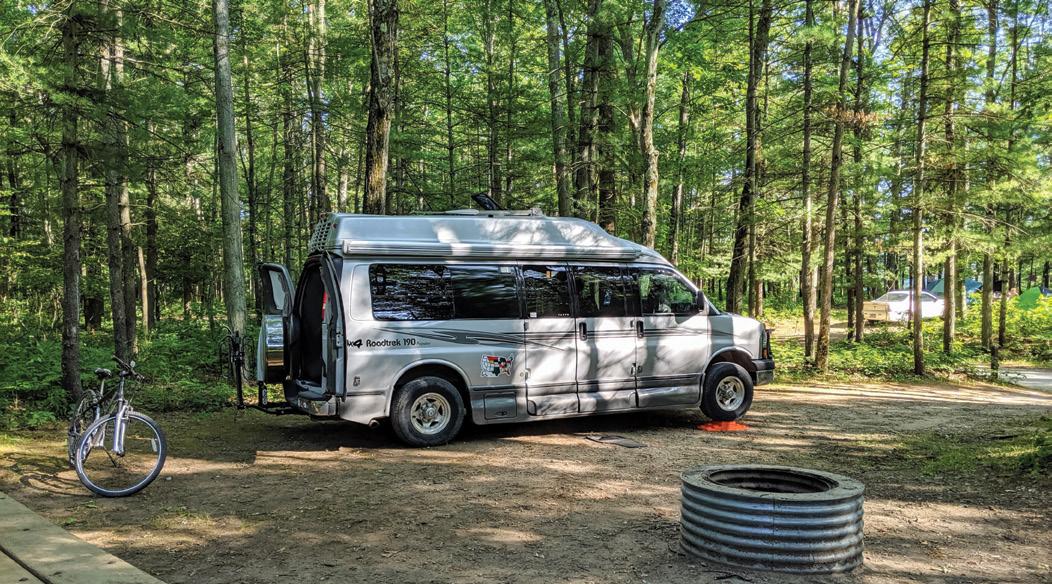
We encourage you to start small and do what you can. Maybe you can’t afford the money or the time to visit all the national parks, but you can probably find a way to visit at least some of the state parks in your home state. Of course, if you live in a large state like Michigan, we don’t recommend checking them all off in one year! ■
Michigan State Park Recommendations
BEST HIKING
Upper Peninsula: Porcupine Mountains Wilderness State Park has more than 90 miles of trails on nearly 60,000 acres of land in historic lumber and copper-mining country. Plus, it sits on Lake Superior and has numerous inland lakes, including the stunning Lake of the Clouds.
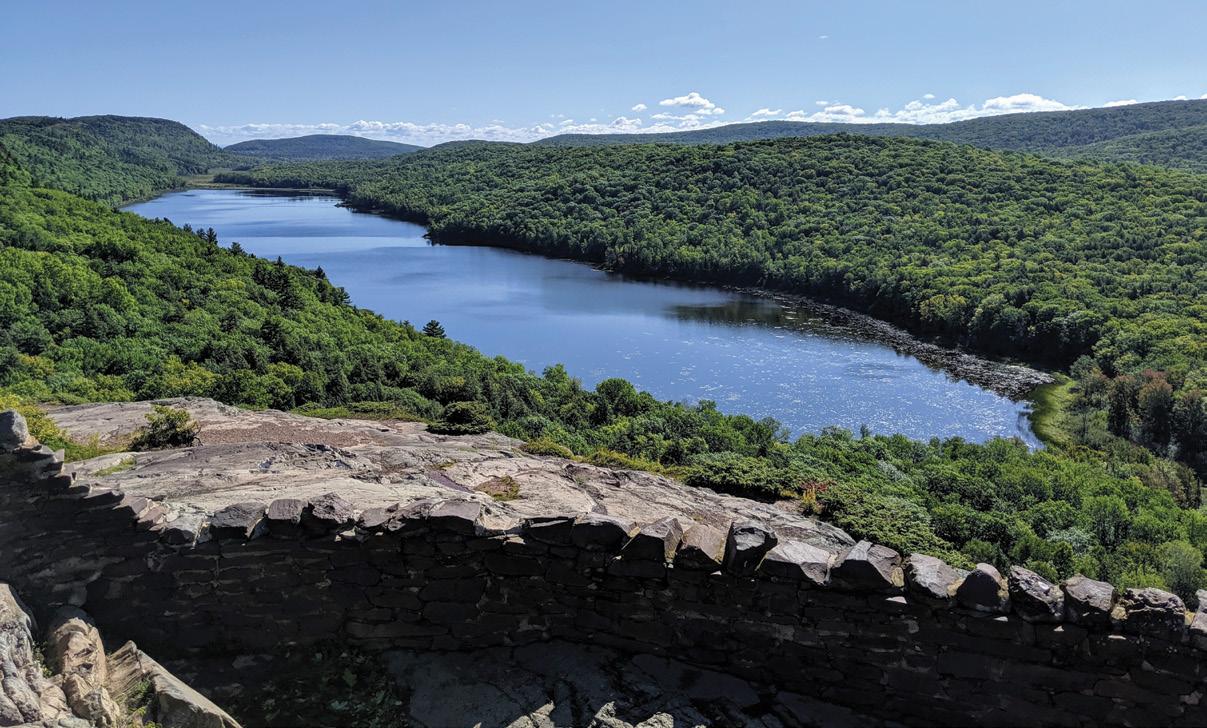
Lower Peninsula: Pinckney State Recreation Area has 40 miles of multi-use trails on 11,000 acres of land in Southern Michigan. It’s also known for a chain of excellent fishing lakes.
BEST BEACH
You really can’t go wrong with any of the state parks on Michigan’s west coast, since the white sandy beaches along Lake Michigan are a sun-seeker’s paradise. However, Warren Dunes State Park has the bonus of giant sand dunes you can climb up and run down before hitting the water.
BEST FOR FAMILIES
Upper Peninsula: Van Riper State Park offers a beach and waterfront with 1.5 miles along a large inland lake, 1.5 miles along a beautiful river, a massive playground, and a bicycle pump track—talk about plenty to keep families busy! Plus, the area is known for moose sightings.
See more from Ari and Jessi at their website, trekers.org or on Instagram @trekersorg
Lower Peninsula: Ludington State Park is home to three campgrounds, sandy beaches, scenic sand dunes, an iconic lighthouse, wetlands, marshlands, and forests. The park is situated between Hamlin Lake and Lake Michigan, with several miles of beautiful shoreline along both lakes. These are just a few of the reasons this is the most popular state park in Michigan!
Porcupine Mountains Wilderness Park
Belle Isle State Park
RV TODAY | 73
Tippy Dam State Recreation Area
Full-Time RVing TO
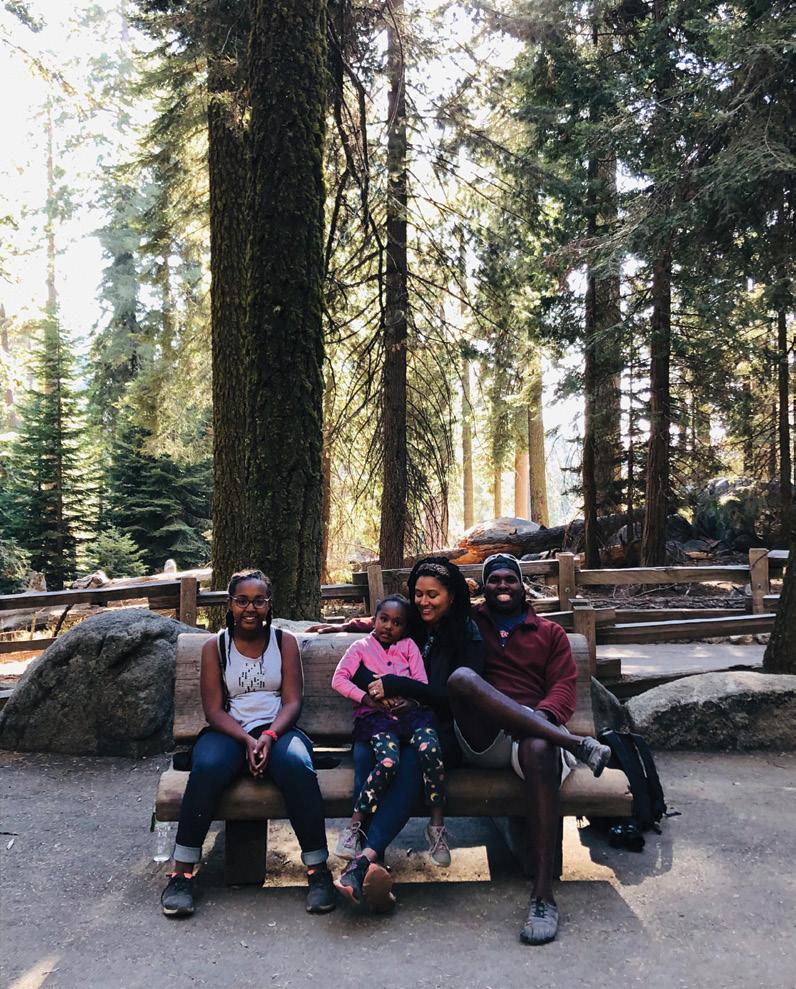


 By Angel Thomas
By Angel Thomas
My family is pretty normal. I was a homemaker and homeschooling mom who did crafts and sold them for a little extra cash on the side, and my husband, Roland, worked in sales for a major industrial manufacturer. He did extremely well in his field and reached the top 5% at his company. We have two daughters, Ariel and Victory, and we volunteered at our church and in our community. Like I said, completely normal people. So how exactly did we get to be living full time in a 27-foot travel trailer and loving it? Well, it’s kind of a weird story … Roland tried out for the 2020 Olympic trials for karate, and almost made it! Thinking about it still gives me goosebumps.
74 | RVTODAY.COM
Please don’t think he’s completely out of his mind; he’s been training in karate since he was 5 years old and received his black belt at 14. He hadn’t trained in eight years and was completely out of shape, but when he heard karate was going to debut in the 2020 Olympics for the first time, he felt like he had to give it a shot.
The trials were in Reno, Nevada, and we decided to take an epic road trip to get there. We will never forget the memories we made on that initial trip, from cliff jumping in Lake Tahoe, California, to watching an out-of-this-world alien parade in Roswell, New Mexico. We experienced the Grand Canyon and made memories we still hold close. The trip set us up to make the decision of a lifetime and travel the United States full time in an RV.
After the trip, we got to work on selling and donating all our stuff, and checked to see when our lease was up on the apartment so we could set a date. Since we already homeschooled our children, that was no big deal. The next thing we needed to figure out was a way to earn an income while on the road.
We had a decent amount saved to get started, and our first step was to join YouTube and begin sharing our journey. Of course, you have to have more than a few videos and 12 subscribers to get paid on YouTube, so on that front, we definitely had our work cut out for us and a long journey ahead. We started selling on Amazon with a private-label product and eventually branched out to retail arbitrage. That’s where we really started to pick up steam—we had our first $10,000 month within three months, and it was on. When we saw how much money there was to be made using Amazon alone, we were ready to hit the road full time. We also got into photography, videography, and even a bit of social media management. We got in a little over our heads, but we were on a mission.
With that settled, we needed to figure out how we would travel! The trip to Reno came with quite a few stressful experiences, and one thing we knew for sure was tent camping was not going to work for us. Don’t get me wrong,


we love our nine-person tent camper and air mattress. But at our first stop in White Sands, New Mexico, Roland and I both ate sand and failed horribly at putting up the tent, and our family of four ended up sleeping in our very cramped midsize SUV. It was the worst night of sleep ever. Then when we were camping just outside the Grand Canyon, we got caught in a thunderstorm and had to set up our tent in the rain.
Since we knew tent camping wasn’t going to work, we went down the rabbit hole of elaborate Instagram vanlife dreams. But the reality of the cost to buy and convert a van for a family of four quickly set in, and we decided it was out of our price range. Through the process of elimination, we eventually decided on a travel trailer.
While I was away on a day trip in Austin with my friend and our kids, Roland found a 2005 Jayco travel trailer for $4,500 on Craigslist. It was in really great condition, so he called me and we checked it out together via FaceTime, making the cash purchase right then and there. We hadn’t even purchased a truck yet! A few days later we rented a U-Haul truck and picked up our new home.
After that, it was time to renovate and make her a home. I am extremely proud to say I did the entire renovation myself in two months. We named her Journey Jay Bird and I almost blew us up by using power tools around an unknown propane leak, but we made it out alive and she is everything I envisioned her to be.
When we decided to take our life on the road, our oldest daughter, Ariel, and her friends had the hardest time adjusting. She thought this was lame and embarrassing, and didn’t even tell her friends what we were doing at first. She actually let them believe we had moved to another state! Thankfully, she has come around and is now thankful, having a great time, and making more friends. Our youngest daughter, Victory, quickly embraced all the adventure and the Junior Ranger programs. Being younger definitely made our transition to full-time travel easier for her. ■
Follow Angel on Instagram at @thomasfamily_life RV TODAY | 75
Bryce Canyon TO
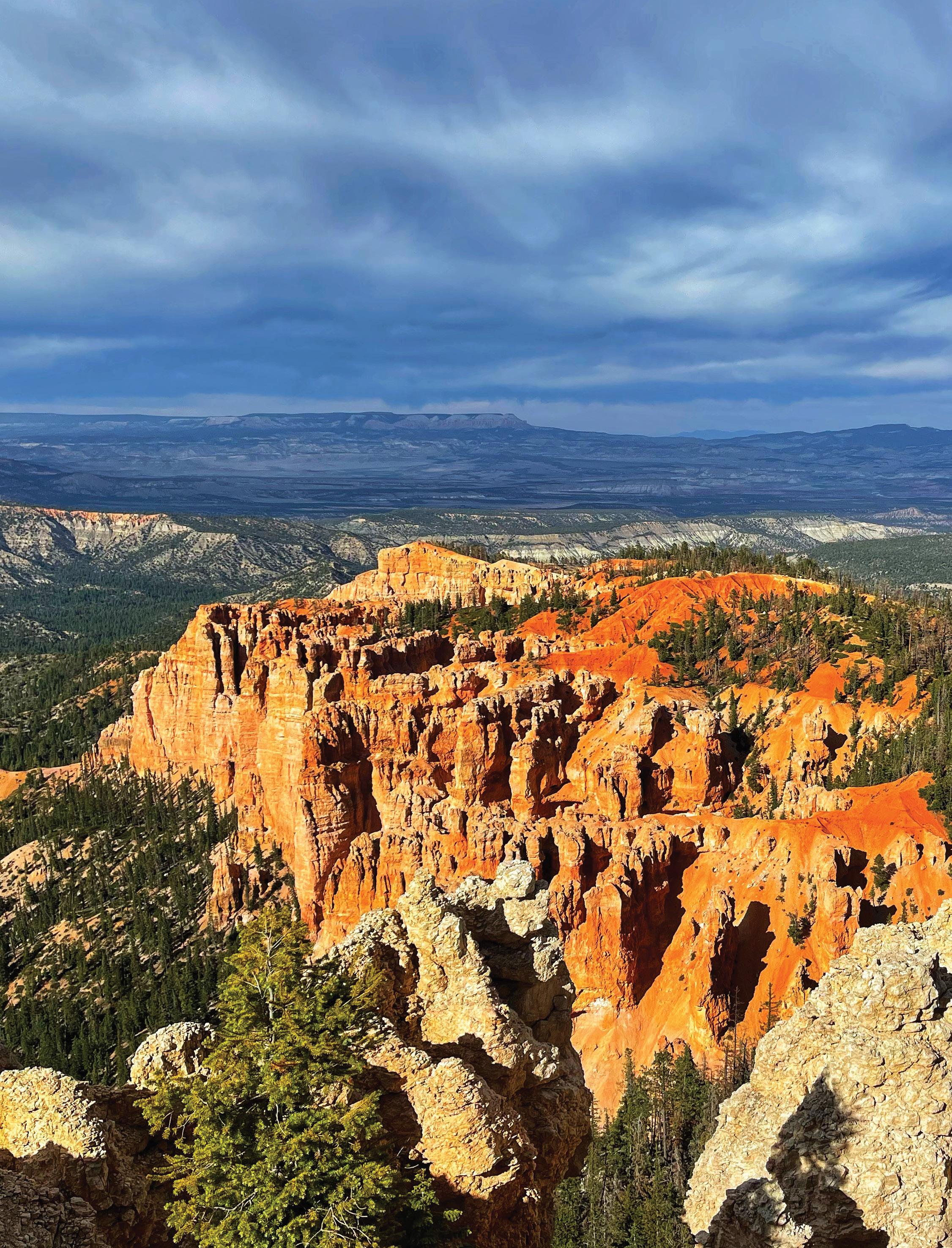 By Robin Goudeau-Baxter
By Robin Goudeau-Baxter
We had an amazing adventure traveling to Utah’s Bryce Canyon from Northern California in June 2021. Although we had been RVing full time for 4 years already, we’d recently purchased a new Keystone Fuzion 427 toy hauler to expand our travels and try out boondocking. We researched and planned by using various travel apps and social media platforms, and by talking to other RVers who have taken this trip. Sometimes word of mouth is the best source of information because you’re able to pick up little-known tips about the area.
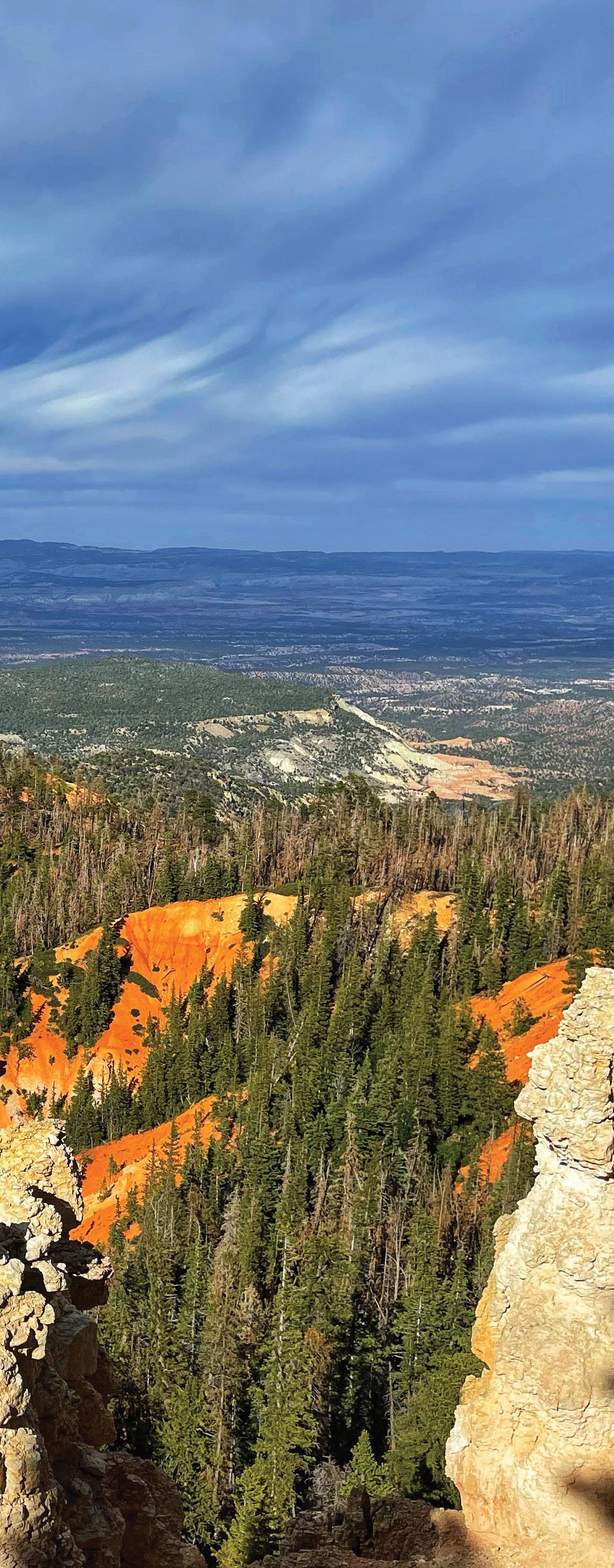
With excitement for our big boondocking adventure, we were packed up, hitched up, and ready to hit the open highway. We decided to boondock at Tom’s Best Dispersed Camping, where we learned a big lesson—if possible, scope out the lay of the land before pulling your 43.5-foot toy hauler into places unknown. We of course wanted a scenic view from our boondocking spot, so we ventured back into the area to find a secluded location with a view of all the hoodoos (the tall, thin spires of rock that protrude from the bottom of an arid drainage basin or badland) in the surrounding canyon. Well, first adventures are always a learning experience, right? We hit a few snags, brushed against a few trees, nerves got the best of both of us, voices were raised (as we know, men are from Mars, and women are from Venus), and the communications broke down. We eventually parked successfully, got set up, and had a much-deserved night of sleep.
The following morning, we woke up to breathtaking views of the canyon and surrounding area. We had heard from others about how crowded Bryce Canyon National Park is during the summer months, so we decided to take a late afternoon ride through the park to determine our plan for the following day.
We didn’t know the exact distance between Tom’s Best Dispersed Camping and Bryce Canyon National Park, but as it turned out, the park was right in our backyard! To our surprise, the late afternoon drive was one of those hidden gems we’ve heard about, because the park seemed empty near those dusk hours. We spoke with the park ranger in depth
RV TODAY | 77
about the best way to spend the following day, and she suggested taking a slow drive around the park to take in all the scenic views prior to returning the following morning for hiking. We had no real expectations of the park outside of what we had seen in photos, but the word “WOW” is an understatement. From the stunning views and hoodoos to the unusual rock formations and colors, everything we saw was mind blowing. We had plenty of time in the evening to enjoy our scenic drive to the various viewpoints. We arrived too late in the afternoon to take advantage of the free shuttle service to easily access the most popular overlooks, but we felt it was more enjoyable on our own, anyway.
During our scenic drive, we were greeted by black crows that seemed to be very used to the crowds. I’m personally afraid of birds, but I did my best to get a good photo. We even saw a man with one on his arm—by the way, please remember not to feed the wildlife!
Our main attraction to Bryce Canyon was hiking Eager to start our experience, we arrived at the park early the next morning, breezed right through the entrance, and parked with ease. There are several
different trails within the park that you can complete within a day. We were able to hike the Sunset to Sunrise, Queen’s Garden to the Navajo Loop, and our favorite, Wall Street. Every trail is filled with beautiful hoodoos in vibrant shades of orange and deep red mixed with white sand caps and green foliage. We were in awe at the indescribable beauty of Mother Nature and have never seen views so incredible
There are many activities to do at Bryce Canyon, but our time was limited. One thing that caught my eye was horseback riding on Peekaboo Loop Trail. Although I have ridden horses in the past, the


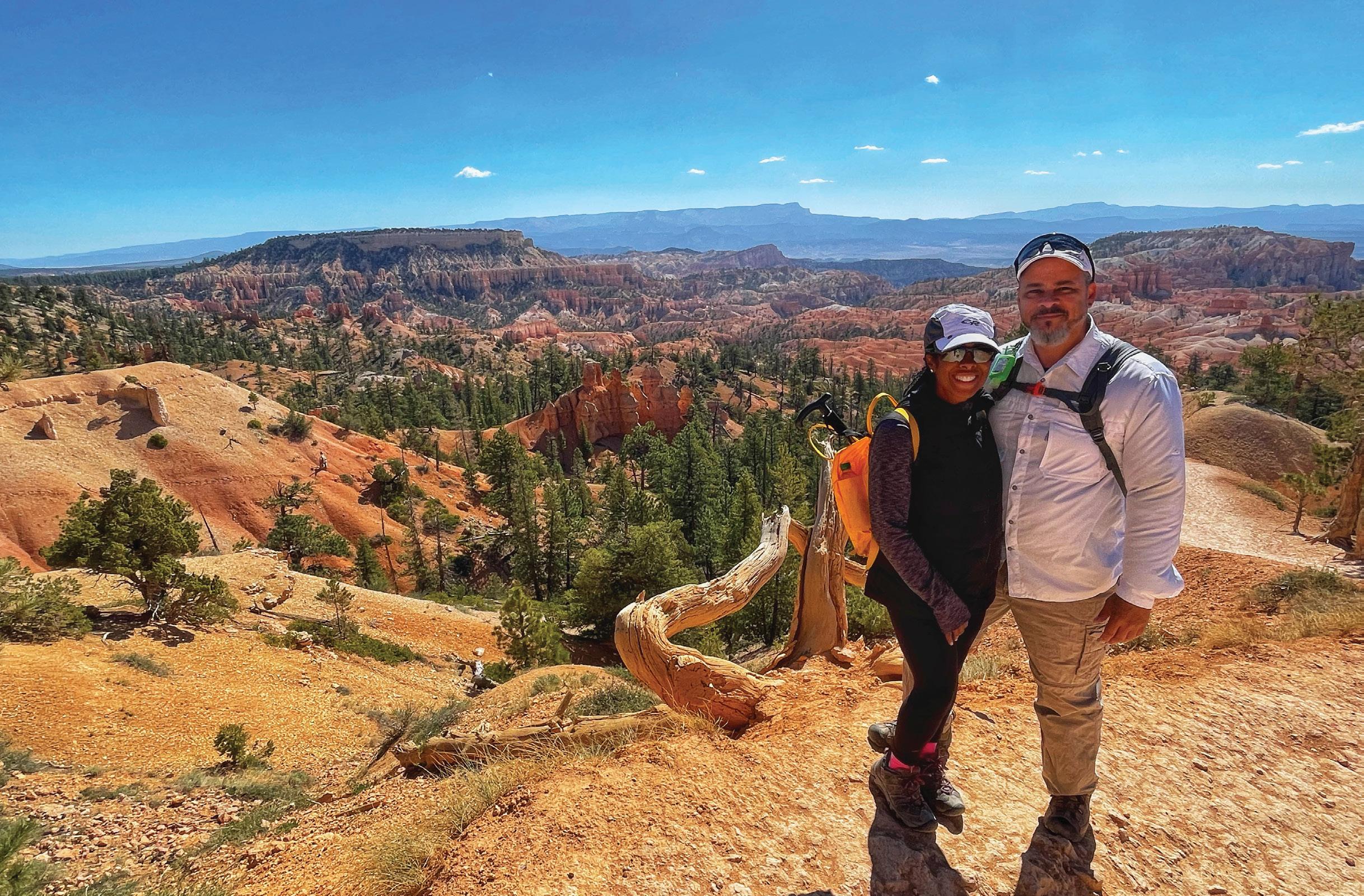
78 | RVTODAY.COM
initial narrow pathway looked challenging and not for the faint of heart. Bryce Canyon also offers tent camping for up to 14 days on a first come, first served basis. Be sure to do your research and check fire regulations.

As we returned to our boondocking location after hiking all day at Bryce Canyon, we both agreed that after four years of full-time RVing, it was one of our favorite national parks. The hiking was not overly strenuous, there were no overwhelming crowds, the weather was perfect in early June, and for our first boondocking experience, which started off bumpy, it didn’t take us long to settle into the quiet surroundings. Late into the night, we sat outside of our toy hauler, enjoyed a glass of wine, reflected on our visit, and did some stargazing.
We decided boondocking is a great way to travel, but since our RV is a little on the larger size and maneuvering in boondocking areas can be tricky, we picked up a couple of e-bikes. Now, when we pull into a location we’re unfamiliar with, we can quickly unhook the bikes and scout the area for a suitable location to boondock before pulling the rig into uncharted territory. ■

Follow Robin on Instagram @parents_unleashed
Bryce Canyon Tips
■ Tickets to enter national parks are constantly changing. Prior to arriving, check online for ticketing information.
■ If possible, arrive a day early, purchase your pass, and visit the visitor center to become familiar with the layout.
■ Depending on the time of year, wear layers. We went in early June, and it did warm up to a comfortable temperature in the late morning, but the evening was cool.
■ Be sure to bring the essentials, such as water, snacks, sunscreen, sunglasses, and a hat .
■ Restrooms are limited, so if you see one, we suggest you stop.
■ Take your time to take in the spectacular views. The beauty may even make you a little emotional!
■ Bryce Canyon’s elevation can get up to 9,000 feet . If you suffer from altitude sickness, ginger nuggets may help —I always have them in my backpack.
■ Wear appropriate footwear if you plan to hike extensively. Although a small portion of the Sunset to Sunrise trail is paved, most are not.

Products Approved 10RVer
RV camping is all about enjoying time in the great outdoors, from the comfort of your own home-awayfrom-home, and with all the people you love most. Here are a few items to help you make your space your own and enjoy fun social gatherings while camping in comfort and style.
Rustic Ring Toss
This rustic ring toss game is easy to transport with its own carrying case and a great way to keep the family entertained at the campsite. There are 15-plus games that can be played with the set. It’s simple, easy fun for the whole family.

Wine Freeze Cups
While the kids are playing their games, the adults can enjoy happy hour, even in the heat of summer, with these stylish and practical wine freeze cups. The inner layers contain a proprietary gel that, when cooled, will keep your drink at just the right temperature. Cheers!

Lippert Patio Mat

This outdoor rug is the first step toward creating a livable outdoor space for your RVing adventures. This stylish and reversible patio mat is available in blue, gray, green, and terracotta, as well as multiple sizes.
Coletti Coffee Pot
Get the fire going and warm up morning coffee for the whole crowd in this Coletti coffee pot. The percolator makes 24 cups, enough to keep the family fueled all morning. It even comes with a lifetime guarantee.

80 | RVTODAY.COM
Radiate Portable Campfire
When it comes to starting a campfire, it doesn’t get any easier than this! The Radiate portable campfire is a compact option for a campfire on the go. It’s small enough to fit in a backpack and perfect for making smores! Buy one, or a pack of two or four.
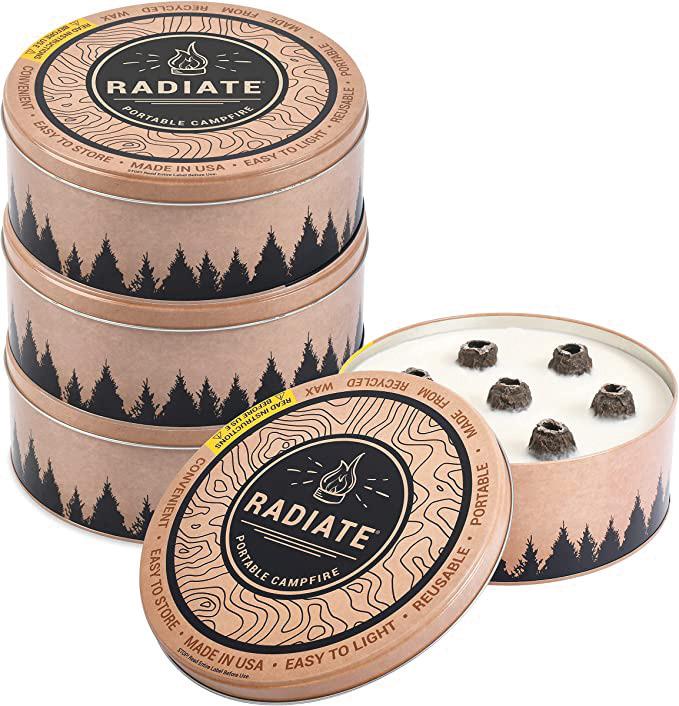
String Lights
Light up the night with this outdoor string light set with shatterproof bulbs, available in lengths of 25, 50, or 100 feet. The soft light adds a cozy ambiance to your space after sunset for more time to gather with family and friends.

Camping Organizer
Want to keep the mess confined to the great outdoors? This is the perfect organizer to set outside for friends and family to keep their shoes or other items dry and organized. It’s perfect for RVs as well as tents.
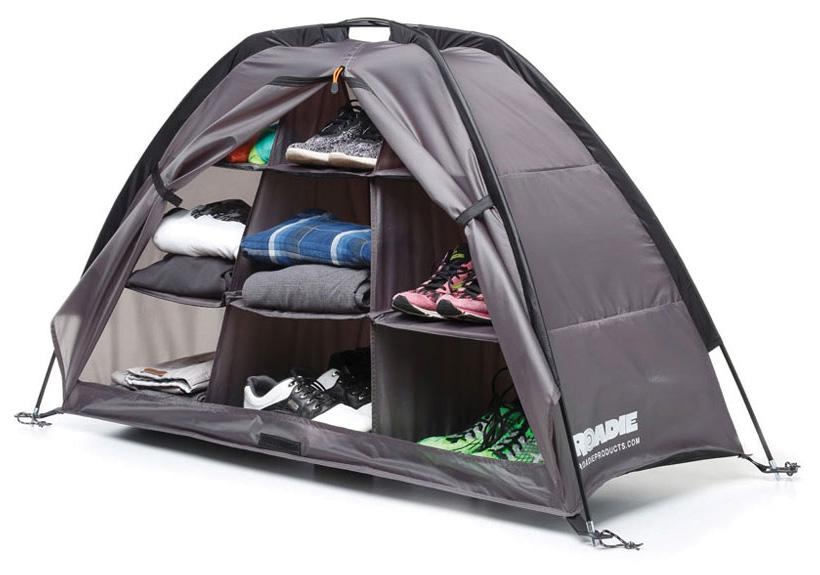
Happy Camper Cutting Board

Decorative as well as practical, this happy camper cutting board can also be used as a pot holder and serving board. Multipurpose items like this really come in handy when you’re on the road with limited space.
Klippy Klips
Klippy Klips help you hang lights from your awning. One end has a clip that attaches to the edge of the awning, while the other end is a hook on a swivel. Klippy Klips also come in other sizes and styles for hanging rope lights and more around your RV.


Trailer Tray
Haul that extra cooler to the campsite with Stromberg Carlson’s trailer tray. This adjustable bracket fits most “A” frame trailers out there. The extra space can also be used for generators or anything else you need to take along. ■

RV TODAY | 81
Events
Upcoming RV Events and Rallies

Stay connected with fellow RVers at these 2022-2023 events
AUGUST
Great Rocky Mountain Exploration
August 15–September 21
Colorado Springs, CO
SEPTEMBER
RV and Motorcycle Rally
September 22–25
Bandera, TX
California-Pismo Beach West Coast Rally 2022

September 29–October 1
Pismo Beach, CA
Revel-Mode Van Rally 2022
September 29–October 1
Moab, UT
OCTOBER
Vintage/Classic Motorhome Show
October 1
Columbia, PA
Sweetest Little Vintage Camper Rally at Honeycomb
October 6
Guntersville, AL
Marathon Coach Charlotte
NASCAR Rally
October 6–10
Concord, NC
NOVEMBER
First Annual Avila Beach Vintage Trailer Rally
November 3
Avila Beach, CA
Second Annual Tin Can Tourists
Vintage Liftoff
November 3–6
Titusville, FL
Trail Along to Pismo
November 3–6
Pismo Beach, CA
DECEMBER
California-Black Oak Casino Christams Rally 2022
December 1–4
Tuolumne, CA
RVing Women New Member Orientation
December 4
Virtual
JANUARY
Florida RV Supershow
January 18–22
Tampa, FL
Tacoma RV Show
January 19–22
Tacoma, WA
Louisville Boat, RV, and Sportshow
January 25–29
Louisville, KY
Events listed are a courtesy to our readers, with dates and details subject to change. For more information, contact the event organizers directly. If you want your next event listed here, please email info@rvtoday.com.
RV Yesterday
A luxury limousine that explored the camping possibilities of the automobile appeared in 1911. At the time, Thomas Coleman du Pont, a member of the family that founded the DuPont conglomerate, was building and financing a highway to help Delaware’s economy and tourism. Without alternative accommodations there, he commissioned a “camping auto.”

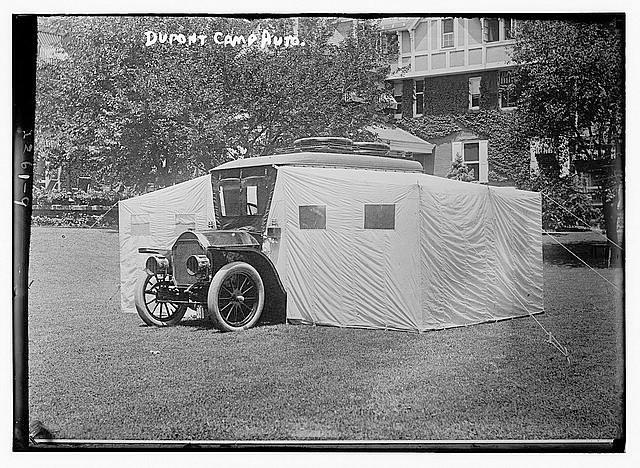
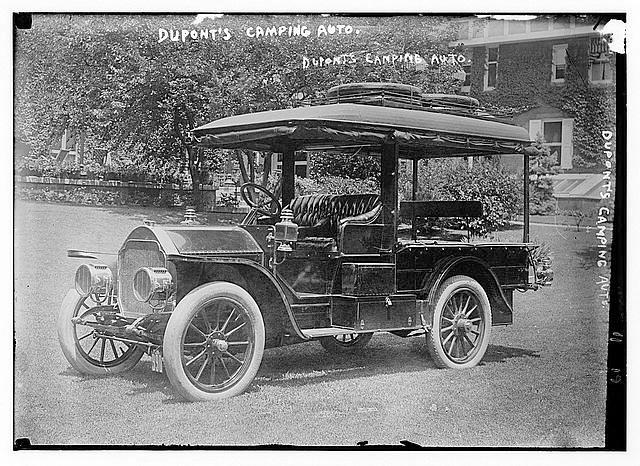
This vehicle contained elongated modular lockers along its sides to hold maps and construction drawings, as well as boxes for two tents, a six-foot mattress, a gas stove, an ice box, a battery, and camping chairs. The camping car’s most unusual features, though, were its two attachable tents, made out of waterproof balloon silk instead of canvas. When fully assembled, the camping auto provided three rooms, with the bedroom as part of the vehicle in the central section.
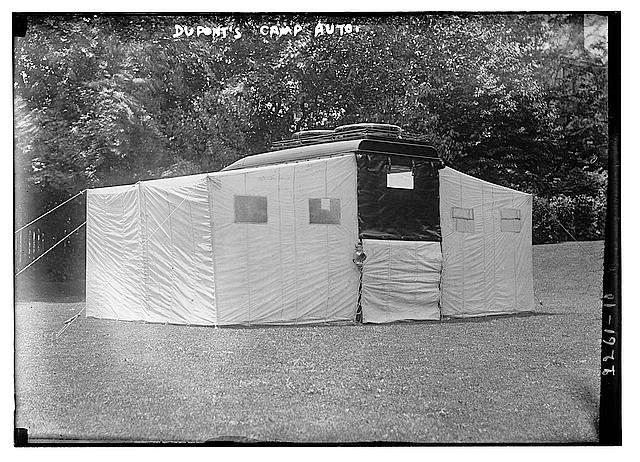
Recreational Vehicles
Andrew Woodmansey, author of “Recreational Vehicles: A World History 1872–1939”
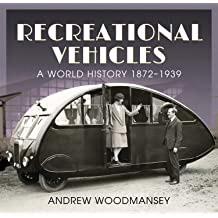
RV TODAY | 83
Photo courtesy of Bain Collection, Prints and Photographs Division, Library of Congress, LC-DIG-ggbain-09541, 09542, 09543, 09544 (digital files from original negatives)
GO ON A VACATION THAT MOVES YOU.



GO EXPLORE





































 Joel and Deb @chasingrvsunshine
Joel and Deb @chasingrvsunshine
























































 By Fabian Archibold
By Fabian Archibold





 Fabian, Becky, Junior, and Jag’s journey is on Instagram @proceedingonwardinamerica
By Eli Ojeda
Fabian, Becky, Junior, and Jag’s journey is on Instagram @proceedingonwardinamerica
By Eli Ojeda






























































 Contributed by Anne Klumpp
Contributed by Anne Klumpp





 Contributed by Gretchen Watson
Contributed by Gretchen Watson


 Contributed by Kestra Bronneke
Contributed by Kestra Bronneke



 Contributed by Shannon Murray
Contributed by Shannon Murray






 By Nikki Kirk
By Nikki Kirk













 Follow Chelsea’s travels on Instagram @unsettledown.
Follow Chelsea’s travels on Instagram @unsettledown.


 By Dina Gilio-Whitaker
By Dina Gilio-Whitaker
 By James Edward Mills
By James Edward Mills


 By Carolyn Finney
By Carolyn Finney


































 M INI PROJECTOR
WALKIE TALKIES
BACKUP CAMERA
STARLINK
CELL SIGNAL BOOSTER
M INI PROJECTOR
WALKIE TALKIES
BACKUP CAMERA
STARLINK
CELL SIGNAL BOOSTER





 Ilagan and Francina Cassaniti
Ilagan and Francina Cassaniti






 By Ari Adler
By Ari Adler









 By Angel Thomas
By Angel Thomas


 By Robin Goudeau-Baxter
By Robin Goudeau-Baxter





























